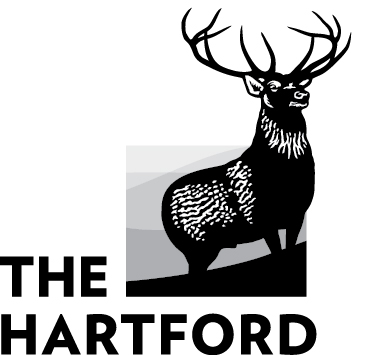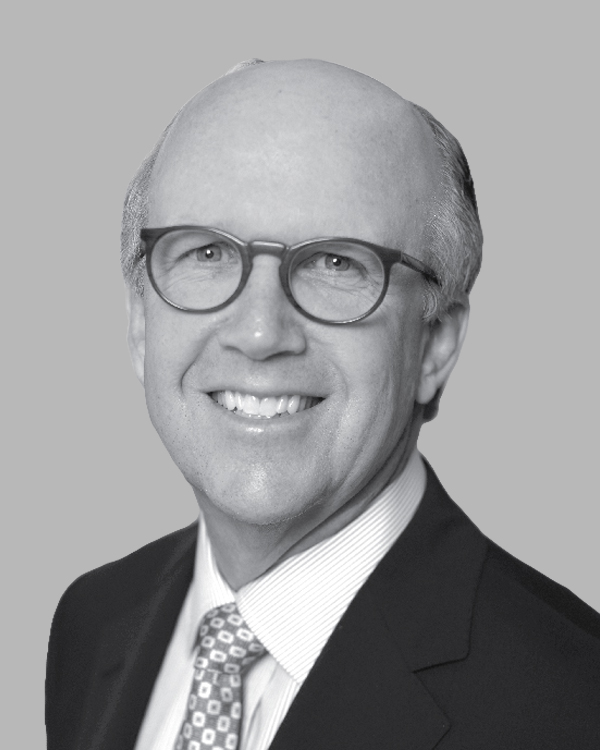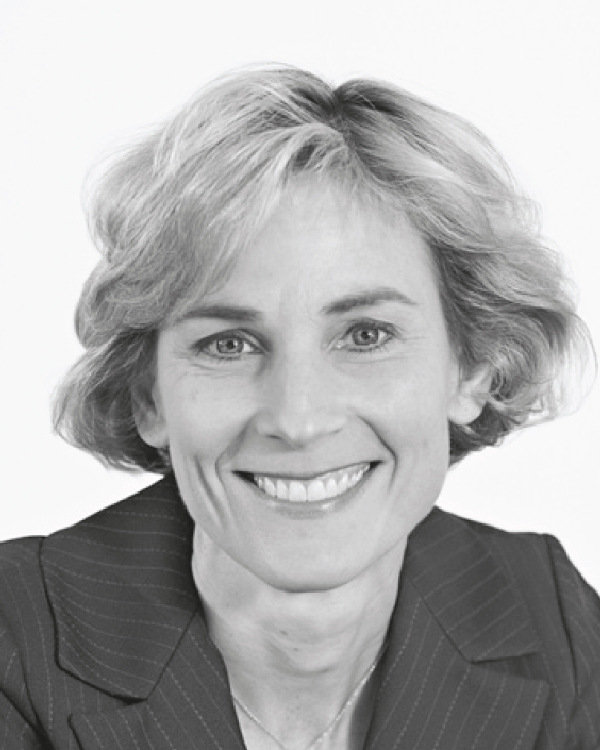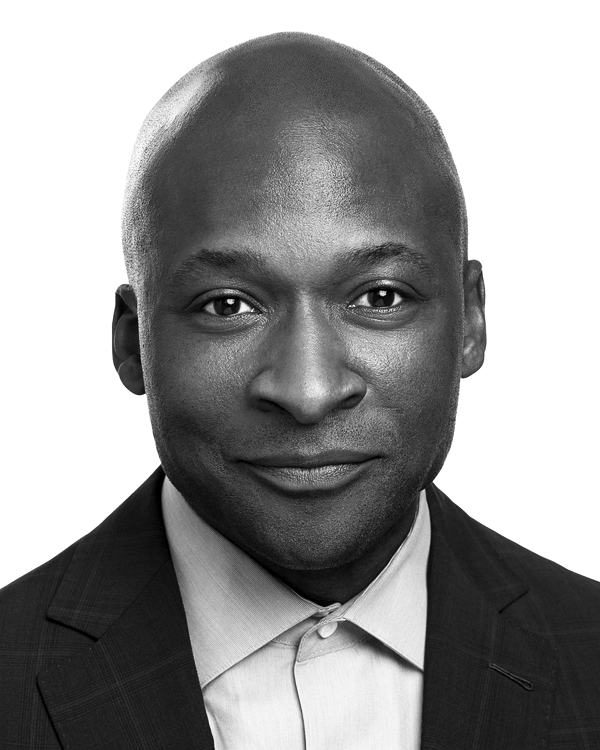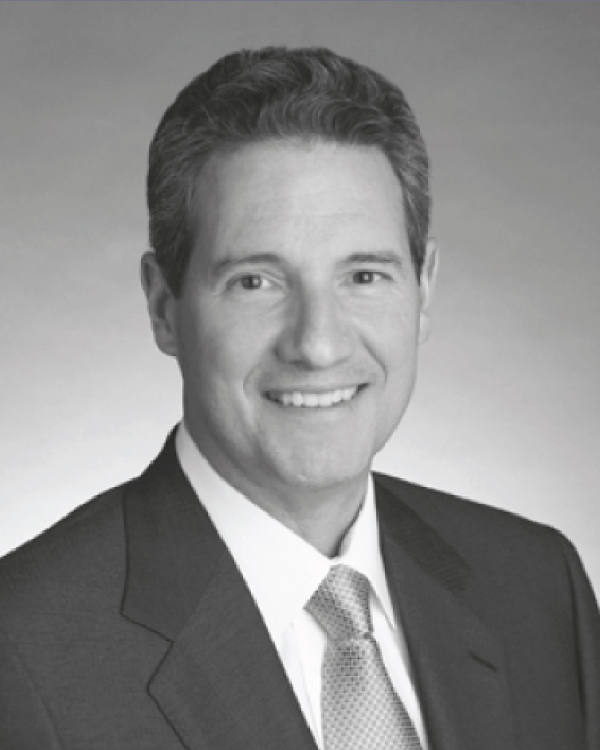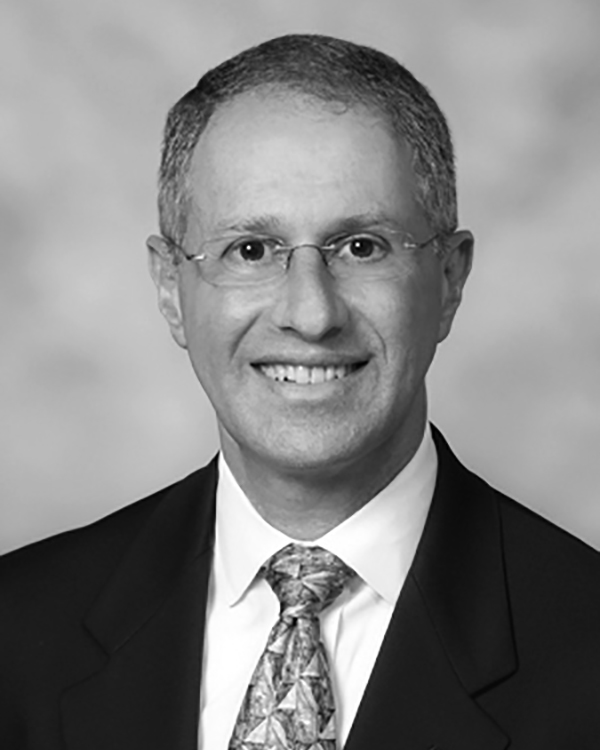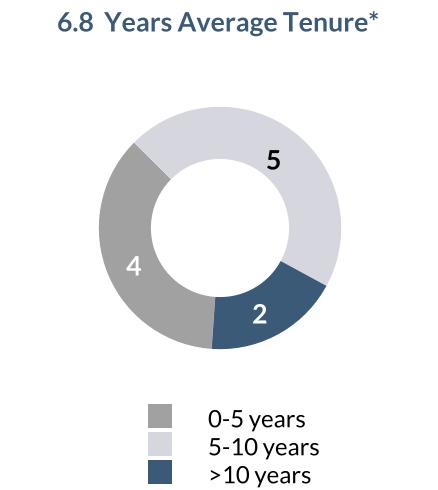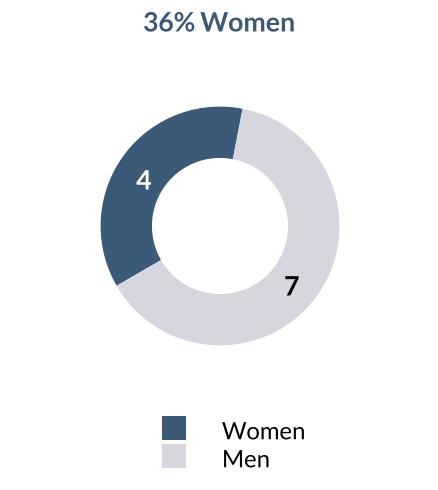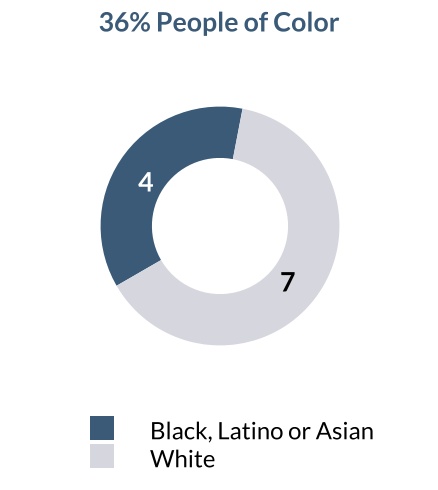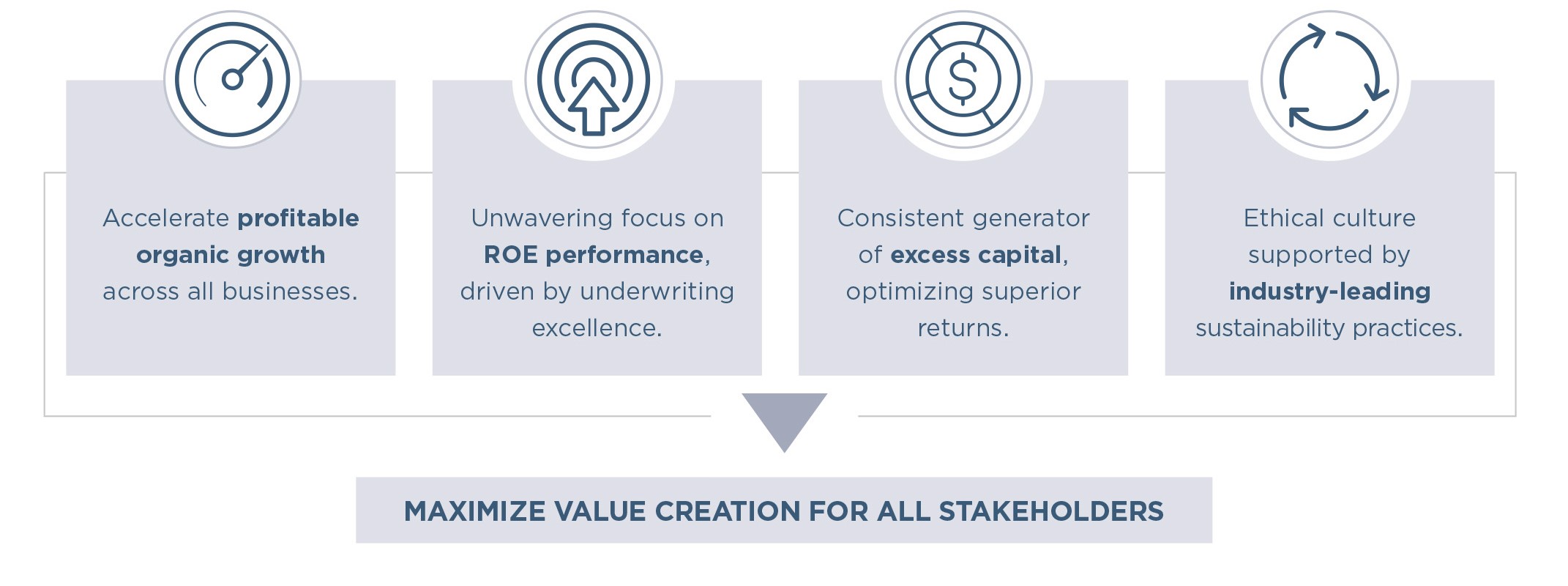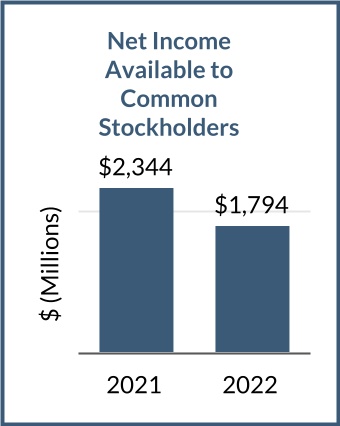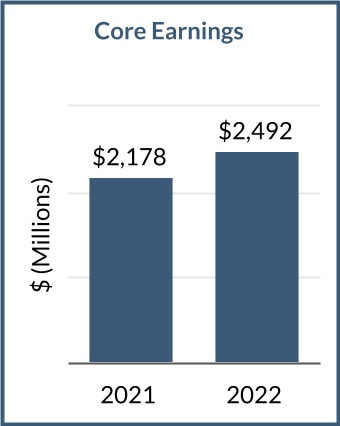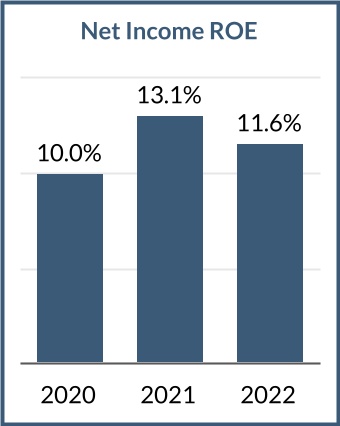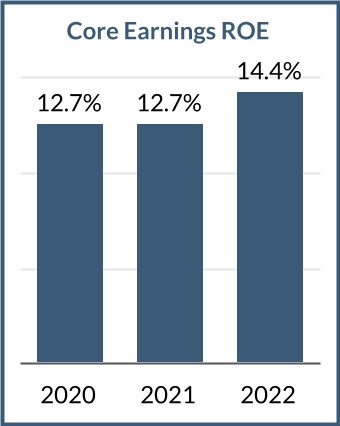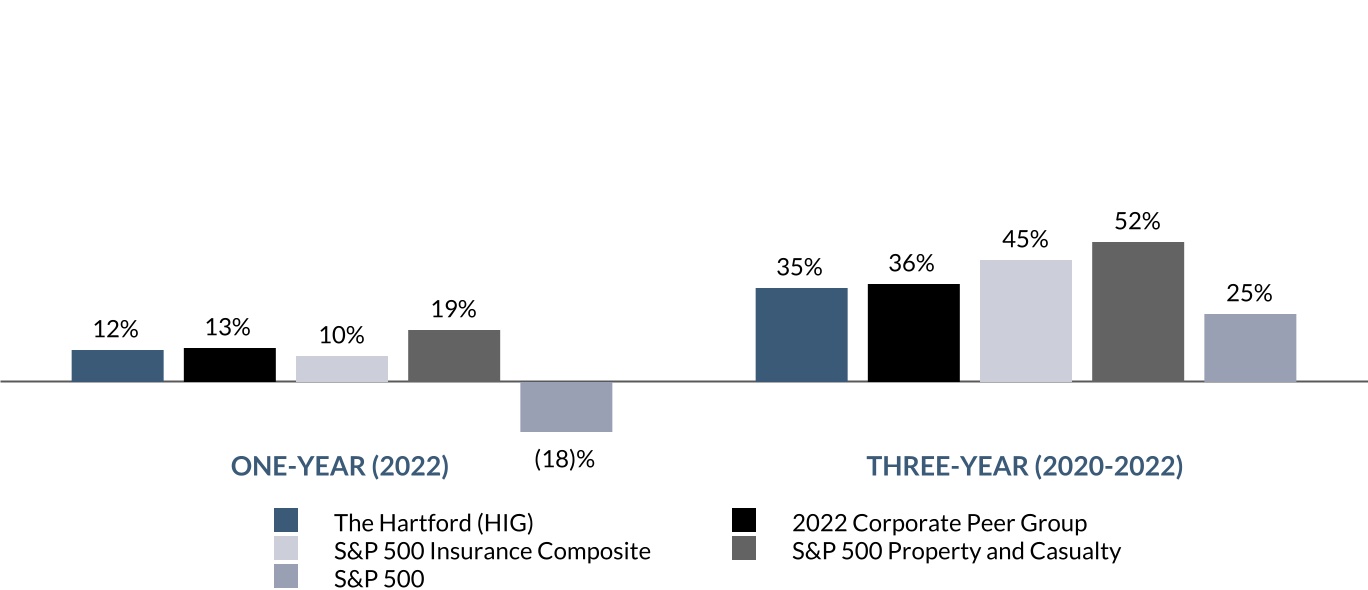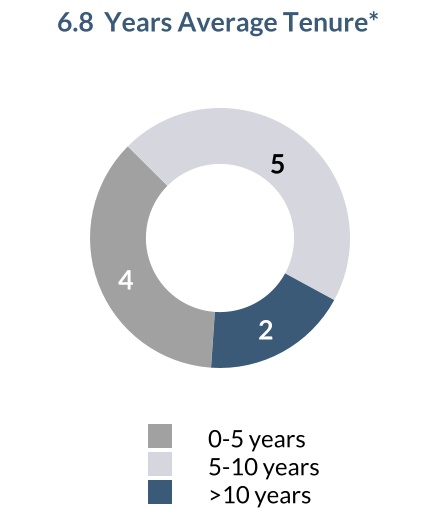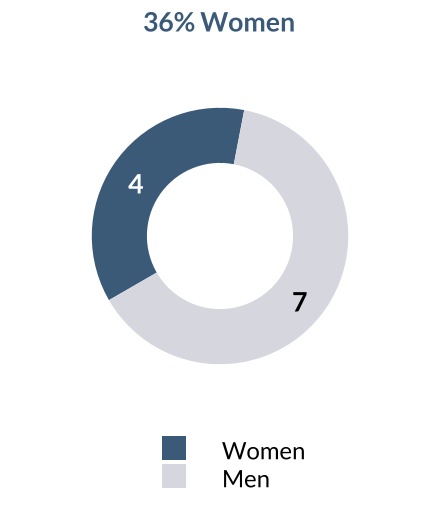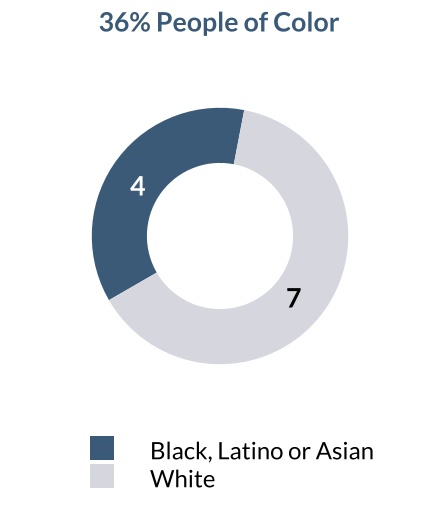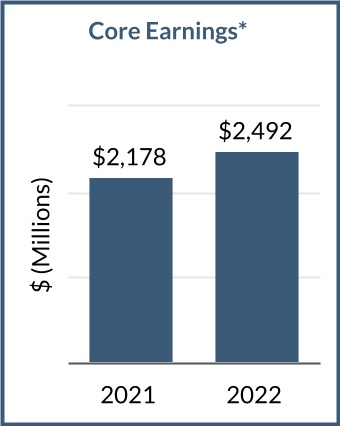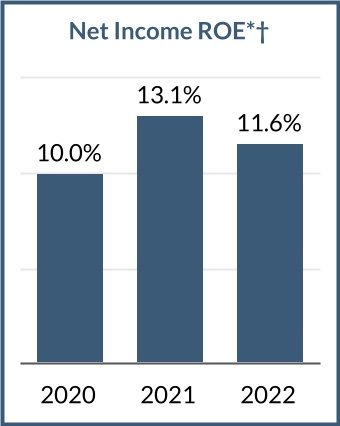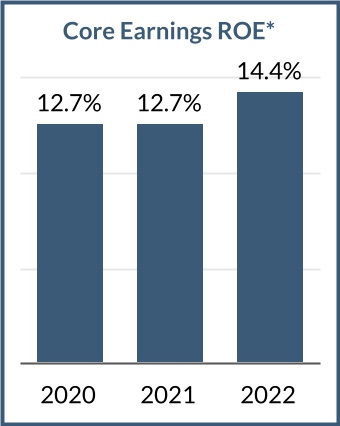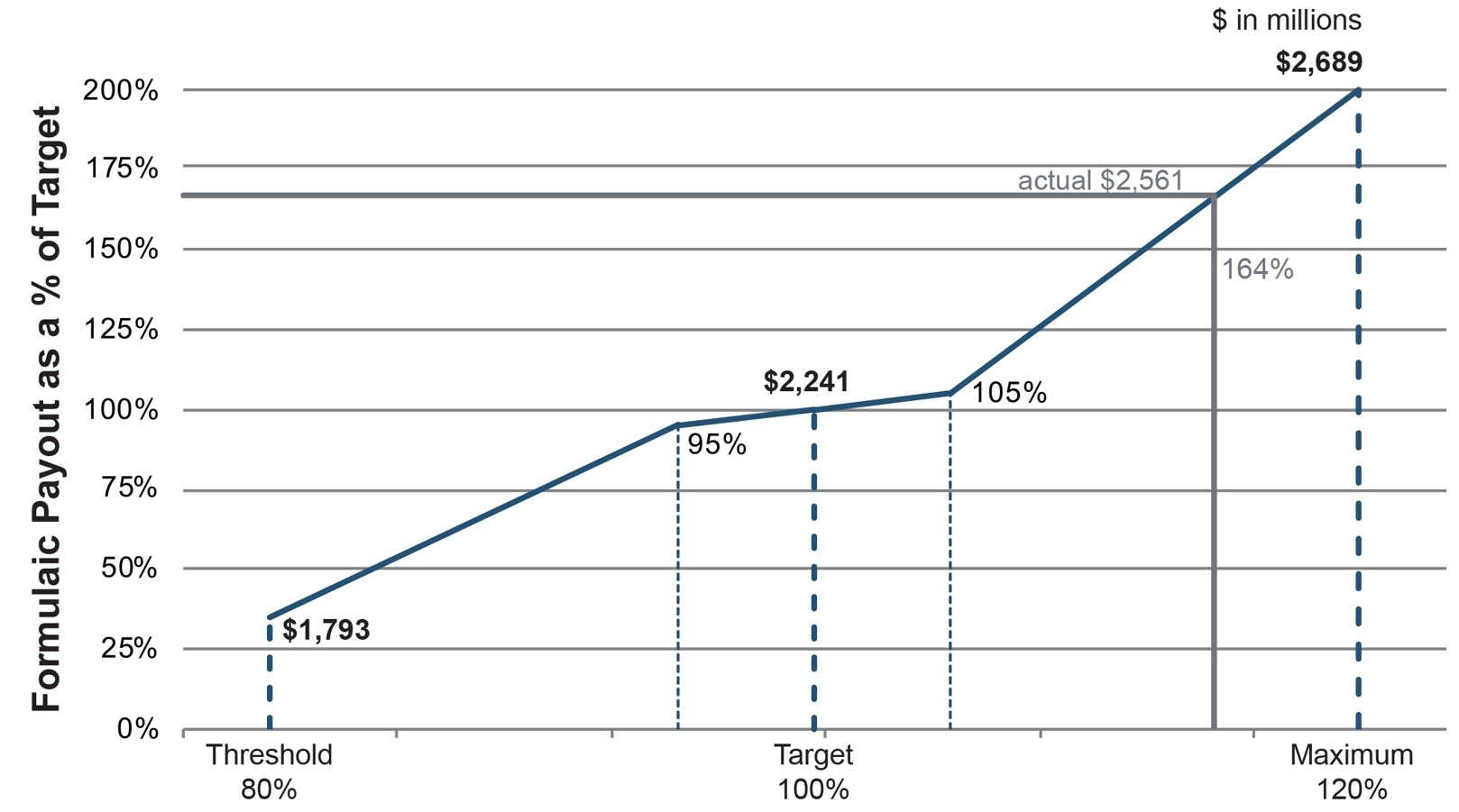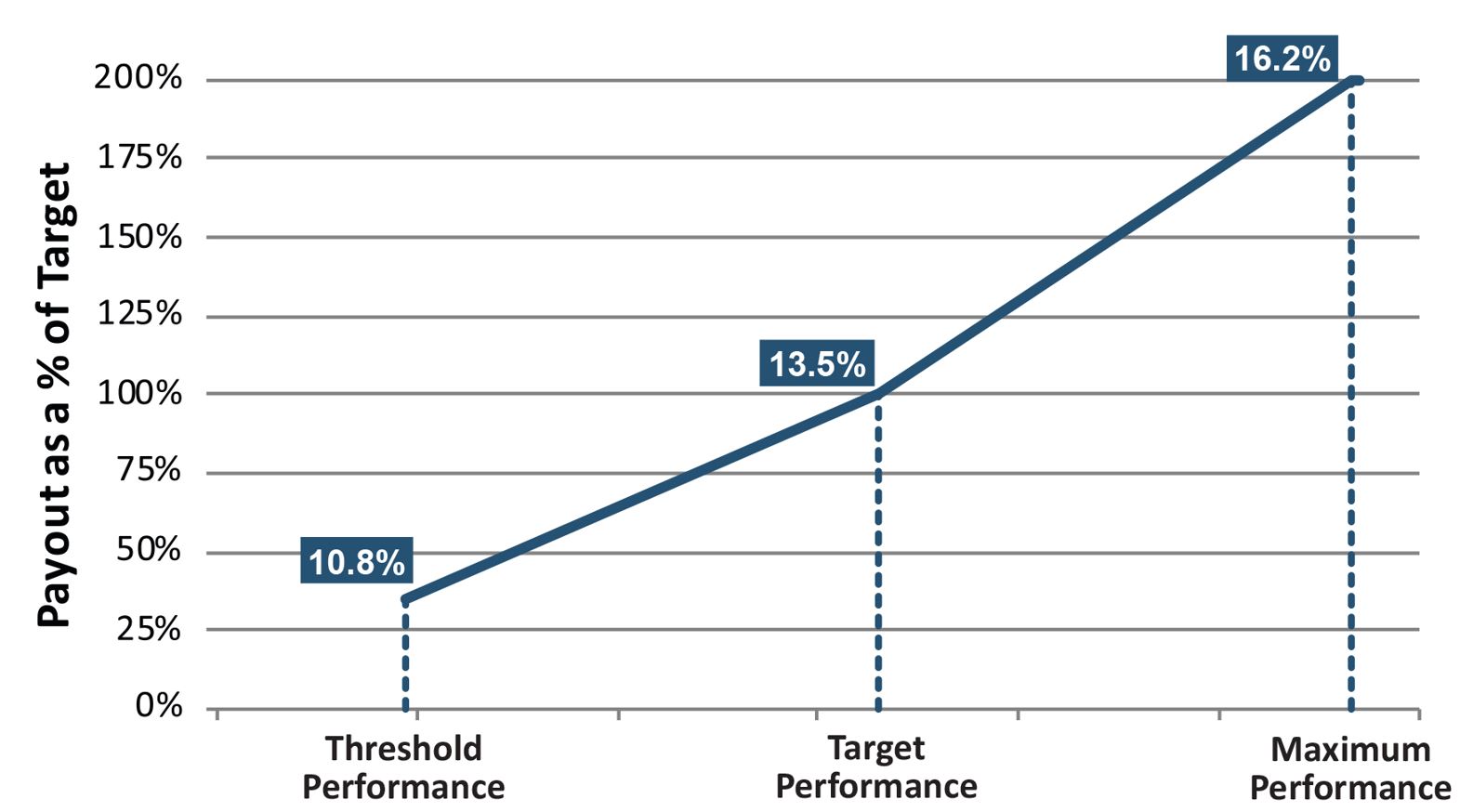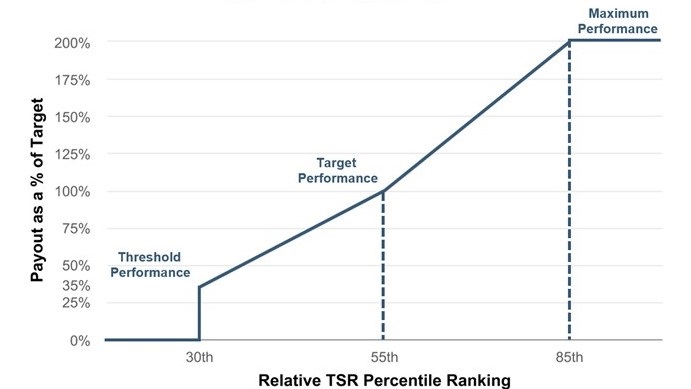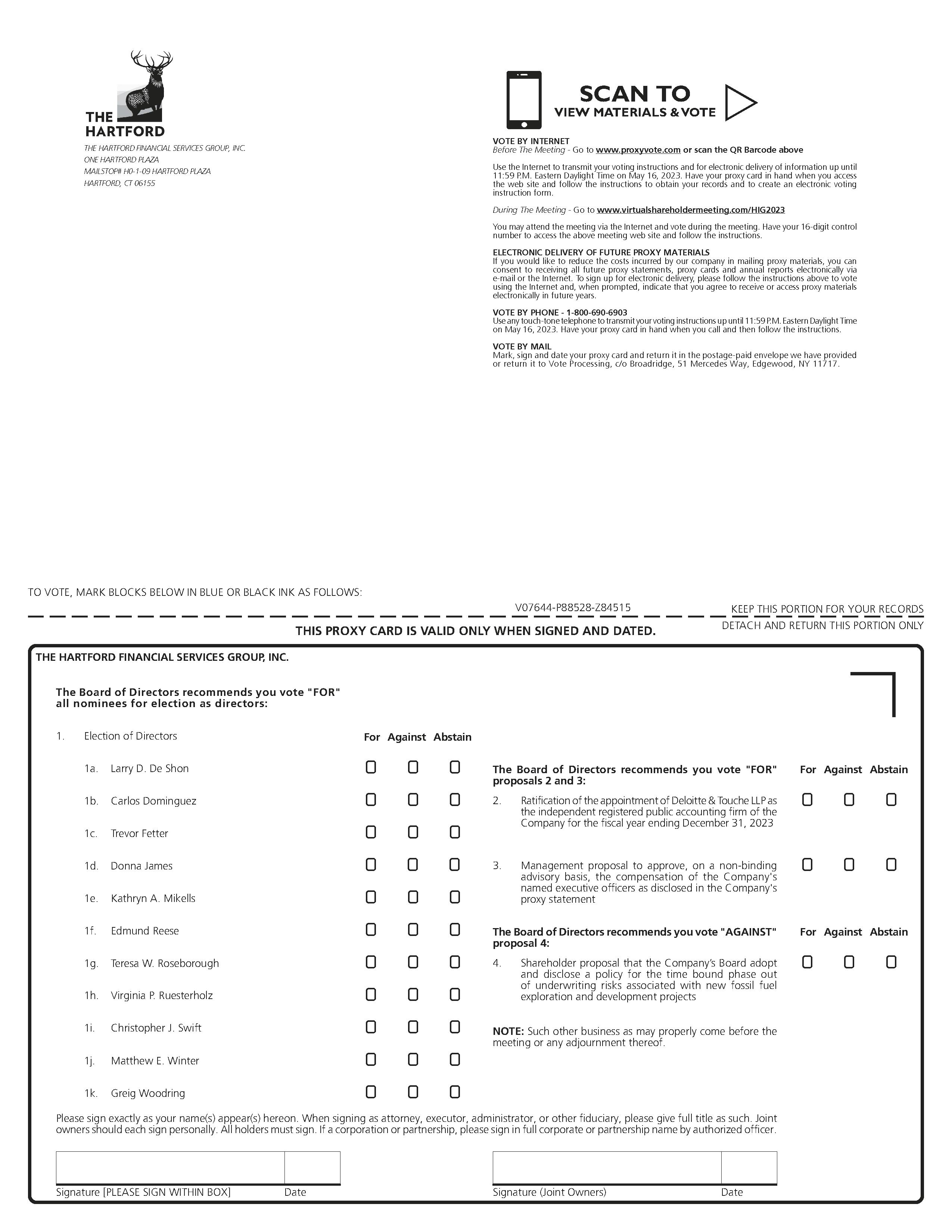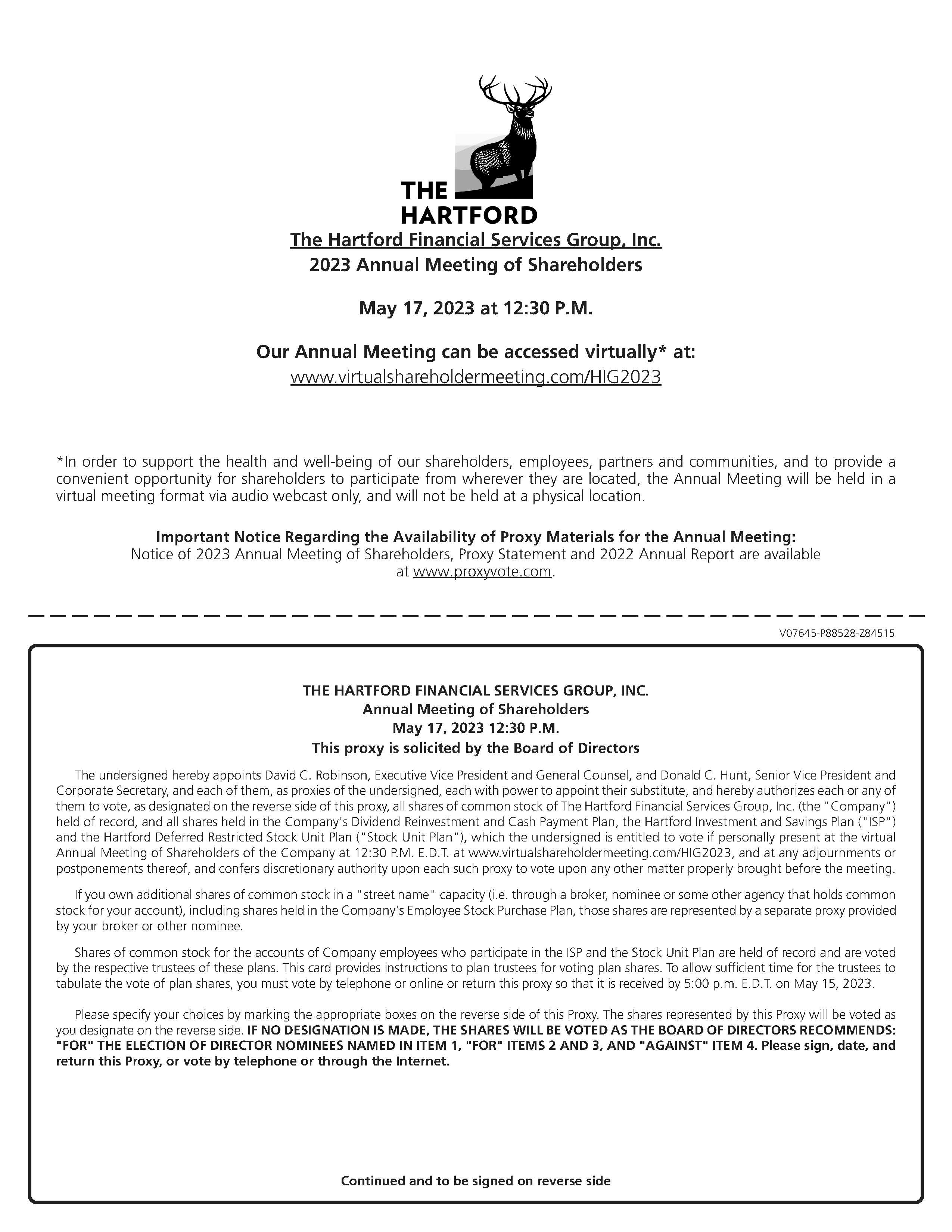0000874766falseDEF 14A00008747662022-01-012022-12-31iso4217:USD00008747662021-01-012021-12-3100008747662020-01-012020-12-310000874766ecd:PeoMemberhig:ChangeInPensionValueMember2022-01-012022-12-310000874766ecd:PeoMemberhig:StockAwardsAndOptionAwardsMember2022-01-012022-12-310000874766ecd:PeoMemberhig:YearEndValueOfUnvestedEquityAwardsAndApplicableDividendEquivalentsGrantedInTheYearMember2022-01-012022-12-310000874766ecd:PeoMemberhig:ChangeInValueOfUnvestedEquityAwardsAndApplicableDividendEquivalentsGrantedInPriorYearsMember2022-01-012022-12-310000874766ecd:PeoMemberhig:VestingDateValueOfEquityAwardsAndApplicableDividendEquivalentsGrantedAndVestedInTheYearMember2022-01-012022-12-310000874766ecd:PeoMemberhig:ChangeInValueOfEquityAwardsAndApplicableDividendEquivalentsGrantedInPriorYearsWhichVestedInTheYearMember2022-01-012022-12-310000874766ecd:PeoMemberhig:ChangeInPensionValueMember2021-01-012021-12-310000874766ecd:PeoMemberhig:StockAwardsAndOptionAwardsMember2021-01-012021-12-310000874766ecd:PeoMemberhig:YearEndValueOfUnvestedEquityAwardsAndApplicableDividendEquivalentsGrantedInTheYearMember2021-01-012021-12-310000874766ecd:PeoMemberhig:ChangeInValueOfUnvestedEquityAwardsAndApplicableDividendEquivalentsGrantedInPriorYearsMember2021-01-012021-12-310000874766ecd:PeoMemberhig:VestingDateValueOfEquityAwardsAndApplicableDividendEquivalentsGrantedAndVestedInTheYearMember2021-01-012021-12-310000874766ecd:PeoMemberhig:ChangeInValueOfEquityAwardsAndApplicableDividendEquivalentsGrantedInPriorYearsWhichVestedInTheYearMember2021-01-012021-12-310000874766ecd:PeoMemberhig:ChangeInPensionValueMember2020-01-012020-12-310000874766ecd:PeoMemberhig:StockAwardsAndOptionAwardsMember2020-01-012020-12-310000874766ecd:PeoMemberhig:YearEndValueOfUnvestedEquityAwardsAndApplicableDividendEquivalentsGrantedInTheYearMember2020-01-012020-12-310000874766ecd:PeoMemberhig:ChangeInValueOfUnvestedEquityAwardsAndApplicableDividendEquivalentsGrantedInPriorYearsMember2020-01-012020-12-310000874766ecd:PeoMemberhig:VestingDateValueOfEquityAwardsAndApplicableDividendEquivalentsGrantedAndVestedInTheYearMember2020-01-012020-12-310000874766ecd:PeoMemberhig:ChangeInValueOfEquityAwardsAndApplicableDividendEquivalentsGrantedInPriorYearsWhichVestedInTheYearMember2020-01-012020-12-310000874766hig:ChangeInPensionValueMemberecd:NonNeosMember2022-01-012022-12-310000874766hig:StockAwardsAndOptionAwardsMemberecd:NonNeosMember2022-01-012022-12-310000874766hig:YearEndValueOfUnvestedEquityAwardsAndApplicableDividendEquivalentsGrantedInTheYearMemberecd:NonNeosMember2022-01-012022-12-310000874766hig:ChangeInValueOfUnvestedEquityAwardsAndApplicableDividendEquivalentsGrantedInPriorYearsMemberecd:NonNeosMember2022-01-012022-12-310000874766hig:VestingDateValueOfEquityAwardsAndApplicableDividendEquivalentsGrantedAndVestedInTheYearMemberecd:NonNeosMember2022-01-012022-12-310000874766hig:ChangeInValueOfEquityAwardsAndApplicableDividendEquivalentsGrantedInPriorYearsWhichVestedInTheYearMemberecd:NonNeosMember2022-01-012022-12-310000874766hig:ChangeInPensionValueMemberecd:NonNeosMember2021-01-012021-12-310000874766hig:StockAwardsAndOptionAwardsMemberecd:NonNeosMember2021-01-012021-12-310000874766hig:YearEndValueOfUnvestedEquityAwardsAndApplicableDividendEquivalentsGrantedInTheYearMemberecd:NonNeosMember2021-01-012021-12-310000874766hig:ChangeInValueOfUnvestedEquityAwardsAndApplicableDividendEquivalentsGrantedInPriorYearsMemberecd:NonNeosMember2021-01-012021-12-310000874766hig:VestingDateValueOfEquityAwardsAndApplicableDividendEquivalentsGrantedAndVestedInTheYearMemberecd:NonNeosMember2021-01-012021-12-310000874766hig:ChangeInValueOfEquityAwardsAndApplicableDividendEquivalentsGrantedInPriorYearsWhichVestedInTheYearMemberecd:NonNeosMember2021-01-012021-12-310000874766hig:ChangeInPensionValueMemberecd:NonNeosMember2020-01-012020-12-310000874766hig:StockAwardsAndOptionAwardsMemberecd:NonNeosMember2020-01-012020-12-310000874766hig:YearEndValueOfUnvestedEquityAwardsAndApplicableDividendEquivalentsGrantedInTheYearMemberecd:NonNeosMember2020-01-012020-12-310000874766hig:ChangeInValueOfUnvestedEquityAwardsAndApplicableDividendEquivalentsGrantedInPriorYearsMemberecd:NonNeosMember2020-01-012020-12-310000874766hig:VestingDateValueOfEquityAwardsAndApplicableDividendEquivalentsGrantedAndVestedInTheYearMemberecd:NonNeosMember2020-01-012020-12-310000874766hig:ChangeInValueOfEquityAwardsAndApplicableDividendEquivalentsGrantedInPriorYearsWhichVestedInTheYearMemberecd:NonNeosMember2020-01-012020-12-31000087476612022-01-012022-12-31000087476622022-01-012022-12-31000087476632022-01-012022-12-31
UNITED STATES
SECURITIES AND EXCHANGE COMMISSION
Washington, D.C. 20549
SCHEDULE 14A
(Rule 14a-101)
INFORMATION REQUIRED IN PROXY STATEMENT
SCHEDULE 14A INFORMATION
Proxy Statement Pursuant to Section 14(a) of the
Securities Exchange Act of 1934 (Amendment No. )
| | | | | | | | | | | | | | |
| Filed by the Registrant [X] | |
| Filed by a Party other than the Registrant [ ] | | |
| Check the appropriate box: | | |
| [ ] | | Preliminary Proxy Statement | [ ] | Soliciting Material Under Rule 14a-12 |
| [ ] | | Confidential, For Use of the
Commission Only (as permitted
by Rule 14a-6(e)(2)) | | |
| [X] | | Definitive Proxy Statement | |
| [ ] | | Definitive Additional Materials | |
| | | | | | | | |
| | The Hartford Financial Services Group, Inc. | |
| | (Name of Registrant as Specified In Its Charter) | |
| | |
| | (Name of Person(s) Filing Proxy Statement, if Other Than the Registrant) | |
| | | | | | | | | | | | | | |
| Payment of Filing Fee (Check the appropriate box): |
| [X] | | No fee required |
| [ ] | | Fee paid previously with preliminary materials |
| [ ] | | Fee computed on table in exhibit required by Item 25(b) per Exchange Act Rules 14a-6(i)(4) and 0-11 |
| | | | |
| | | | | |
NOTICE OF 2023 ANNUAL MEETING
OF SHAREHOLDERS |
| | | | | | | | | | | | | | | | | |
Date and Time Wednesday, May 17, 2023 12:30 p.m. EDT Access* www.virtualshareholdermeeting.com/HIG2023 Record Date You may vote if you were a shareholder of record at the close of business on March 20, 2023. Voting Items Shareholders will vote on the following items of business: | | VOTING | |
| | By internet www.proxyvote.com |
|
| | By toll-free telephone 1-800-690-6903 |
|
| | By mail Follow the instructions on your proxy card |
| Board Recommendation | Page | | | At the Annual Meeting Follow the instructions on the virtual meeting site |
1. Elect a Board of Directors for the coming year; | FOR | | |
| | |
2. Ratify the appointment of Deloitte & Touche LLP as our independent registered public accounting firm for the fiscal year ending December 31, 2023; | FOR | | | IMPORTANT INFORMATION IF YOU PLAN TO ATTEND THE ANNUAL MEETING: You are entitled to participate (i.e., submit questions and/or vote) in the Annual Meeting if you were a shareholder of record at the close of business on March 20, 2023, the record date, or hold a legal proxy for the meeting provided by your bank, broker, or nominee. To participate, you will need the 16-digit control number provided on your proxy card, voting instruction form or notice. Shareholders may also vote or submit questions in advance of the meeting at www.proxyvote.com using their 16-digit control number. If you are not a shareholder or do not have a control number, you may still access the meeting as a guest, but you will not be able to participate. If you have difficulty accessing the Annual Meeting, please call the number on the registration page of the virtual meeting site. Technicians will be available to assist you. |
3. Consider and approve, on a non-binding, advisory basis, the compensation of our named executive officers as disclosed in this proxy statement; | FOR | | |
4. Vote on shareholder proposal that the Company’s Board adopt and disclose a policy for the time bound phase out of underwriting risks associated with new fossil fuel exploration and development projects; and | AGAINST | | |
5. Act upon any other business that may properly come before the Annual Meeting or any adjournment thereof. | | | |
The Hartford’s proxy materials are available via the internet at http://ir.thehartford.com** and www.proxyvote.com, which allows us to reduce printing and delivery costs and lessen adverse environmental impacts. We hope that you will participate in the Annual Meeting, either by attending and voting at the virtual meeting or by voting through other means. For instructions on voting, please refer to page 78 under “How do I vote my shares?” We urge you to review the proxy statement carefully and exercise your right to vote. Dated: April 6, 2023 By order of the Board of Directors | |
|
|
|
|
| | | |
| |
| Donald C. Hunt | | | | | |
| Senior Vice President and Corporate Secretary | | | | | |
| * In order to support the health and well-being of our shareholders, employees, partners and communities, and to provide a convenient opportunity for shareholders to participate from wherever they are located, the Annual Meeting will be held in a virtual meeting format via audio webcast only, and not at a physical location. |
| **References in this proxy statement to our website address are provided only as a convenience and do not constitute, and should not be viewed as, an incorporation by reference of the information contained on, or available through, the website. Therefore, such information should not be considered part of this proxy statement. |
| | | | | |
LETTER FROM OUR CHAIRMAN & CEO AND LEAD DIRECTOR
| |
Dear fellow shareholders:
2022 was an outstanding year of financial performance and progress for The Hartford across our strategic objectives. During the year, the Board oversaw the Company’s execution on its strategy to maximize value creation for all stakeholders, which focuses on advancing underwriting excellence, enhancing digital capabilities, maximizing distribution channels, optimizing organizational efficiency, and advancing sustainability leadership. As the 2023 Annual Meeting of Shareholders approaches, it is our privilege as Chairman and Lead Director to share details on the Board’s progress in 2022.
As the Board discharged its fiduciary duties, it also underwent fundamental and positive changes to continue our corporate governance leadership. After last year’s retirements of long-serving directors Robert Allardice and Michael Morris from the Board, we were pleased to appoint Edmund Reese, who brings extensive senior leadership experience with several trusted and admired companies and deep knowledge of investments, financial reporting, strategic planning, operations and product launches. We believe we continue to have the right mix of skills and expertise necessary to support the Company’s strategy. The current Board is a diverse group whose collective credentials bring varied perspectives to the oversight of The Hartford.
Strong progress has been made towards the Board’s goals for the 2022-2023 Board year. The Board continues to focus on overseeing profitable growth strategies, with an emphasis on creating sustainable long-term value. Examples of focus areas include continued review of growth and innovation in Personal Lines and assessment of long-term technology plans as enablers of business strategy. The Board also focused on human capital management, including oversight of development plans for key executive leadership positions, examining broader management succession 1-2 levels down from the CEO to anticipate future needs. As we emerged from the pandemic, the Board also worked with management to define the Company’s future work model while continuing to support a diverse, inclusive and innovative culture. Additionally, the Board continued to enhance its sustainability oversight, particularly the Company’s journey to operationalize and embed it into its broader strategy. The Board also continued to ensure that it engages all directors to actively and closely review critical strategic issues. As the worst of the pandemic is behind us, we’ve also re-initiated direct interaction and engagement between and among Directors and senior management, including in-person events, enhancing opportunities for continuing education, particularly insurance industry education, such as meeting with customers, and refining onboarding protocols. We hope these steps demonstrate the Board's commitment to continuous improvement.
Many of the Board’s strengths - its composition, alignment around strategy, focus on profitable growth, oversight of sustainability, and strong Director engagement - are the direct result of its rigorous multi-step evaluation process. As part of its continuous improvement efforts, the Board undertook a third-party evaluation again in 2022, expanding the scope of the review to include individual director evaluations. The third-party facilitator concluded that the Board continues to function at a very high level and remains deeply committed to serving the Company and its stakeholders.
At the end of 2022, The Hartford’s President Doug Elliot retired after a distinguished career. As the Company’s President, Doug was instrumental in expanding our suite of products, developing industry-specific verticals within our property & casualty business, overseeing the integration of Navigators and elevating our underwriting excellence. We are grateful for his leadership and wish him well in his retirement.
At The Hartford, the best is yet to come. We’re positioned to deliver on our financial objectives and enhance value for all stakeholders. At every level of our company, from the boardroom to the underwriting desk and the call center, we are motivated by our mission of providing people with the support and protection they need to pursue their unique ambitions, seize opportunity, and prevail through unexpected challenge. Thank you for your ongoing support.
| | | | | | | | | | | |
| | | |
| Christopher J. Swift | | Trevor Fetter | |
| Chairman and Chief Executive Officer | | Lead Director | |
TABLE OF CONTENTS
| | | | | |
| PROXY SUMMARY | |
| BOARD AND GOVERNANCE MATTERS | |
| Item 1: Election of Directors | |
| Governance Practices and Framework | |
| Board Composition and Refreshment | |
| Committees of the Board | |
| The Board's Role and Responsibilities | |
| Director Compensation | |
| Certain Relationships and Related Party Transactions | |
| Communicating with the Board | |
| Director Nominees | |
| AUDIT MATTERS | |
| Item 2: Ratification of Independent Registered Public Accounting Firm | |
| Fees of the Independent Registered Public Accounting Firm | |
| Audit Committee Pre-Approval Policies and Procedures | |
| Report of the Audit Committee | |
| COMPENSATION MATTERS | |
| Item 3: Advisory Vote to Approve Executive Compensation | |
| Compensation Discussion and Analysis | |
| Executive Summary | |
| Components of the Compensation Program | |
| Process for Determining Senior Executive Compensation (Including NEOs) | |
| 2022 Named Executive Officers' Compensation and Performance | |
| Compensation Policies and Practices | |
| Effect of Tax and Accounting Considerations on Compensation Design | |
| Report of the Compensation and Management Development Committee | |
| Executive Compensation Tables | |
| CEO Pay Ratio | |
| Pay Versus Performance | |
| SHAREHOLDER PROPOSAL | |
| Item 4: Vote on Shareholder Proposal That the Company’s Board Adopt and Disclose a Policy for the Time Bound Phase Out of Underwriting Risks Associated with New Fossil Fuel Exploration and Development Projects | |
| INFORMATION ON STOCK OWNERSHIP | |
| Directors and Executive Officers | |
| Certain Shareholders | |
| Delinquent Section 16(a) Reports | |
| INFORMATION ABOUT THE HARTFORD’S ANNUAL MEETING OF SHAREHOLDERS | |
| Householding of Proxy Materials | |
| Frequently Asked Questions | |
| Other Information | |
| APPENDIX A: RECONCILIATION OF GAAP TO NON-GAAP FINANCIAL MEASURES | |
Some of the statements in this proxy statement, including those related to our goal of achieving net zero greenhouse gas emissions ("GHGe") for the full range of our businesses and operations by 2050, may be considered forward-looking statements as defined in the Private Securities Litigation Reform Act of 1995. We caution investors that these forward-looking statements are not guarantees of future performance, and actual results may differ materially. Factors that could cause actual results to differ, possibly materially, from those in the forward-looking statements include, but are not limited to, our ability to formulate and implement plans to reduce our Scope 1 and 2 GHGe as anticipated; our reliance on third parties, whose actions are outside our control, to reduce our Scope 3 GHGe; and the lack of widely accepted standards for measuring greenhouse gas emissions associated with underwriting, insurance and investment activities, as well as other factors discussed in our 2022 Annual Report on Form 10-K, subsequent Quarterly Reports on Forms 10-Q, and the other filings we make with the Securities and Exchange Commission. We assume no obligation to update this proxy statement, which speaks as of the date issued.
PROXY SUMMARY
This summary highlights information contained elsewhere in this proxy statement. It does not contain all the information you should consider and you should read the entire proxy statement carefully before voting.
BOARD AND GOVERNANCE HIGHLIGHTS
| | | | | | | | |
ITEM 1 ELECTION OF DIRECTORS |
Each director nominee has an established record of accomplishment in areas relevant to overseeing our businesses and possesses qualifications and characteristics that are essential to a well-functioning and deliberative governing body. |
✓ | The Board recommends a vote "FOR" each director nominee |
| | | | | | | | | | | | | | | | | |
| Director Nominee, Current Age
and Present or Most Recent Experience | Independent | Director since | Current Committees(1) | Other Current Public Company Boards |
| Larry D. De Shon, 63 Former President, CEO and COO, Avis Budget Group | ✓ | 2020 | • Audit
• FIRMCo
• NCG | • United Rentals, Inc. • Air New Zealand |
| Carlos Dominguez, 64 Former Vice Chairman and Lead Evangelist, Sprinklr | ✓ | 2018 | • Comp
• FIRMCo
• NCG | • PROS Holdings |
| Trevor Fetter,(2) 63 Senior Lecturer, Harvard Business School | ✓ | 2007 | • Comp
• FIRMCo | None |
| Donna James, 65 President and CEO, Lardon & Associates | ✓ | 2021 | • Audit
• FIRMCo
• NCG | • Boston Scientific(3) • Victoria's Secret • American Electric Power |
| Kathryn A. Mikells, 57 Chief Financial Officer Exxon Mobil | ✓ | 2010 | • Audit
• FIRMCo* | None |
| Edmund Reese, 48 Chief Financial Officer Broadridge Financial Solutions | ✓ | 2022 | • Audit
• FIRMCo | None |
| Teresa W. Roseborough, 64 Executive Vice President, General Counsel and Corporate Secretary, The Home Depot | ✓ | 2015 | • Comp
• FIRMCo
• NCG* | None |
| Virginia P. Ruesterholz, 61 Former Executive Vice President, Verizon Communications | ✓ | 2013 | • Comp
• FIRMCo
• NCG | None |
| Christopher J. Swift, 62 Chairman and CEO, The Hartford | | 2014 | • FIRMCo | • Citizens Financial Group |
| Matthew E. Winter, 66 Former President, The Allstate Corporation | ✓ | 2020 | • FIRMCo
• Comp* | • ADT • H&R Block |
| Greig Woodring, 71 Former President and CEO, Reinsurance Group of America | ✓ | 2017 | • Audit*
• FIRMCo | None |
* Denotes committee chair.
(1)Full committee names are as follows: Audit – Audit Committee; Comp – Compensation and Management Development Committee; FIRMCo – Finance, Investment and Risk Management Committee; NCG – Nominating and Corporate Governance Committee.
(2)Mr. Fetter serves as the Lead Director. For more details on the Lead Director’s role, see page 14 . (3)Ms. James is not standing for re-election at Boston Scientific, Inc.'s 2023 Annual Meeting.
BOARD NOMINEE COMPOSITION
* As of April 6, 2023.
GOVERNANCE BEST PRACTICES
The Board and management regularly review best practices in corporate governance and modify our governance policies and practices as warranted. Our current best practices are highlighted below.
| | | | | | | | | | | | | | |
Independent Oversight | ✓ | All directors are independent, other than the CEO |
✓ | Independent key committees (Audit, Compensation, Nominating) |
✓ | Empowered and engaged independent Lead Director |
Engaged Board /Shareholder Rights | ✓ | All directors elected annually |
✓ | Majority vote standard (with plurality carve-out for contested elections) |
✓ | Proxy access right with market terms |
✓ | Director resignation policy |
✓ | Over-boarding policy limits total public company boards, including The Hartford, to five for non-CEOs and two for sitting CEOs |
✓ | Rigorous Board and committee self-evaluation conducted annually; third-party Board and individual director evaluations conducted triennially |
✓ | Meaningful Board education and training on recent and emerging governance and industry trends |
✓ | Annual shareholder engagement program focused on sustainability, compensation and governance issues |
| Other Governance Practices | ✓ | Board diversity of experience, tenure, age, gender, race and ethnicity |
✓ | Mandatory retirement age of 75 |
✓ | Diversity policy or "Rooney Rule" commitment to ensure diverse candidates are included in the pool from which board and external CEO candidates are selected |
✓ | Annual review of CEO succession plan by the independent directors with the CEO |
✓ | Annual Board review of long-term and emergency succession plans for senior management and the CEO |
✓ | Stock-ownership guidelines of 6x salary for CEO and 4x salary for other named executive officers |
✓ | Annual Nominating Committee review of The Hartford's political and lobbying policies and expenditures |
Commitment to Sustainability
| ✓ | Board oversight of sustainability matters; Nominating Committee oversight of sustainability governance framework |
✓ | Comprehensive sustainability reporting, including a Sustainability Highlight Report, TCFD and SASB reports and EEO-1 data |
✓ | Sustainability Governance Committee, including several subcommittees, comprised of senior management charged with overseeing a comprehensive sustainability strategy and ensuring the full Board is briefed at least annually |
SUSTAINABILITY PRACTICES
Our approach to sustainability is fundamental to who we are as a company. Environmental, social and governance ("ESG") considerations are deeply embedded in our values, our operational approach, and our strategy. Our strategy rests on a foundation and track record of transparent, measurable goals and actions intended to secure long-term shareholder value and contribute to society at large. Our sustainability efforts address ESG impacts as highlighted in the following key areas:
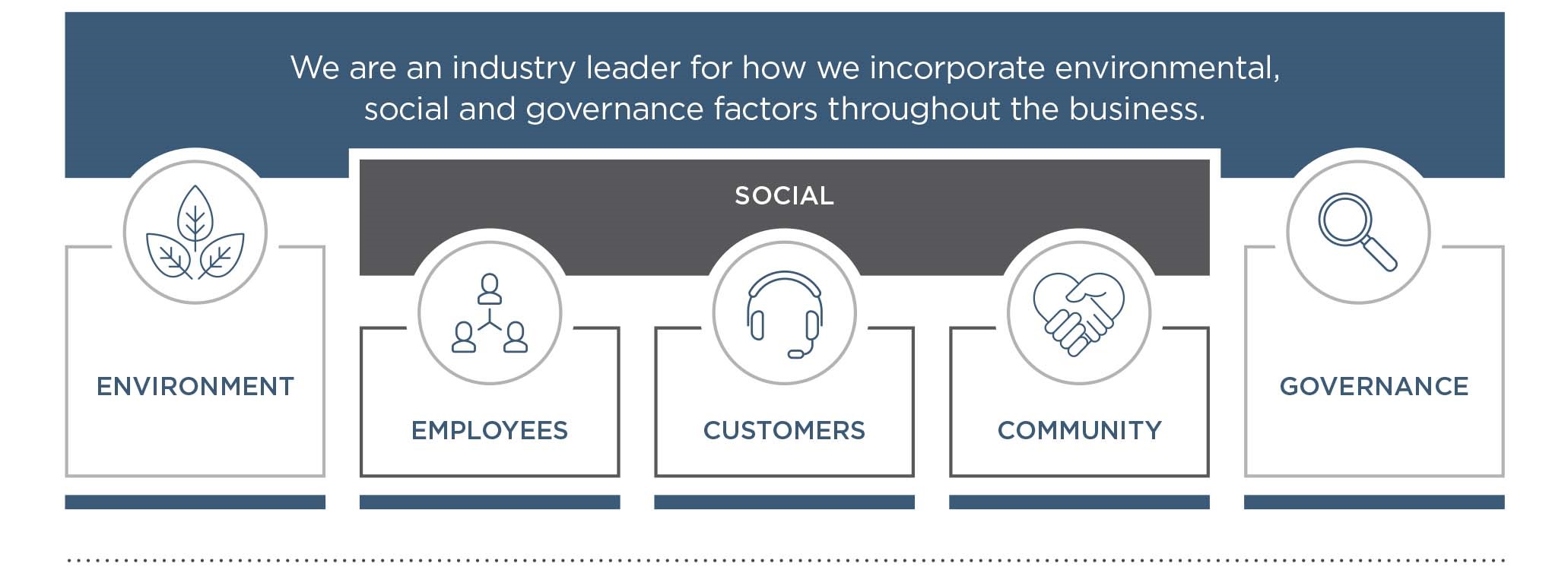
| | | | | | | | |
| | |
ENVIRONMENT
As an insurer we appreciate the risks that environmental challenges present to people and communities. Our 2050 net zero goal is indicative of that appreciation, and also a motivating force behind our work. As environmental stewards, we commit to mitigating climate change and building community resilience to its impacts.
| | SOCIAL | EMPLOYEES
Responsible growth depends on the attraction, retention and development of top-flight talent. That talent both requires and enables us to fulfill the needs and aspirations of the diverse customers and communities we serve.
|
|
|
|
|
|
|
|
|
| |
| |
| SOCIAL | CUSTOMERS
Our top priority is to foster resiliency – bringing crucial support and peace of mind to our customers through the most challenging of times. Our insight-driven products and our commitment to empathetic, high-quality service are the keys to our customer approach.
|
| |
| |
GOVERNANCE
We are proud of our role as an industry leader in exhibiting outstanding governance practices and ethical standards, and we have fortified our sustainability governance model to reflect that standard and to prepare for the adaptive challenges that ESG will bring.
| |
| |
| |
| SOCIAL | COMMUNITY
Our commitment to our communities transcends the products and services we offer – it includes using our knowledge, data, people and resources to make positive contributions to society. Our community engagement focuses on advancing social equity, addressing the critical needs of our neighbors in our communities, enabling human achievement and supporting the causes our employees care about most.
|
|
|
|
|
| | |
For additional detail on our ESG efforts and performance, please access the Corporate Sustainability section of our website. Our most recent Sustainability Highlight Report, our reporting on net zero progress, and our TCFD, SASB, and EEO-1 reports are all available at: https://www.thehartford.com/about-us/corporate-sustainability.
AUDIT HIGHLIGHTS
| | | | | | | | |
ITEM 2 RATIFICATION OF APPOINTMENT OF INDEPENDENT REGISTERED PUBLIC ACCOUNTING FIRM |
The Board is asking shareholders to ratify the selection of Deloitte & Touche LLP as our independent registered public accounting firm for 2023. |
| ✓ | The Board recommends a vote "FOR" this item |
COMPENSATION HIGHLIGHTS
| | | | | | | | |
ITEM 3 ADVISORY VOTE TO APPROVE EXECUTIVE COMPENSATION |
The Board is asking shareholders to approve, on an advisory basis, the compensation of our named executive officers as disclosed in this proxy statement. Our executive compensation program is designed to promote long-term shareholder value creation and support our strategy by (1) encouraging profitable organic growth and ROE performance while maintaining an ethical culture supported by industry-leading sustainability practices, (2) providing market-competitive compensation opportunities designed to attract and retain talent needed for long-term success, and (3) appropriately aligning pay with short- and long-term performance. |
| ✓ | The Board recommends a vote "FOR" this item |
The Hartford’s mission is to provide people with the support and protection they need to pursue their unique ambitions, seize opportunity, and prevail through unexpected challenge. Our strategy to maximize value creation for all stakeholders focuses on advancing underwriting excellence, emphasizing digital capabilities, maximizing distribution channels, optimizing organizational efficiency, and advancing ESG leadership.
We endeavor to maintain and enhance our position as a market leader by leveraging our core strengths of underwriting excellence, risk management, claims, product development and distribution. We are investing in claims processing, analytics, data science and digital capabilities to strengthen our existing competitive advantages.
An ethics, people, and performance-driven culture drives our values. We have proactive positions on ESG issues important to our sustainability and our capacity to deliver long-term stockholder value.
STRATEGIC PRIORITIES
2022 FINANCIAL RESULTS
Our 2022 financial results were excellent, reflecting strong underwriting with excellent premium growth across the business, improved margins before net realized gains (losses), and a significant contribution from the investment portfolio. Full year net income available to common stockholders and core earnings* were $1.8 billion ($5.44 per diluted share) and $2.5 billion ($7.56 per diluted share), respectively. Net income and core earnings return on equity ("ROE")*† were 11.6% and 14.4%, respectively.
Highlighted below are year-over-year comparisons of our net income available to common stockholders and core earnings performance and our three-year net income ROE and core earnings ROE results. Core earnings is the primary determinant of our annual incentive plan ("AIP") funding, as described on page 43, and average annual core earnings ROE over a three-year performance period is the metric used for 50% of performance shares granted to Senior Executives, as described on page 46 (in each case, as adjusted for compensation purposes). * Denotes a non-GAAP financial measure. For definitions and reconciliations to the most directly comparable GAAP measure, see Appendix A.
† Net income ROE represents net income available to common stockholders ROE.
TOTAL SHAREHOLDER RETURN
The following chart shows The Hartford's total shareholder return ("TSR") relative to the 2022 Corporate Peer Group (provided on page 52), S&P 500 Insurance Composite, S&P P&C index and S&P 500. Includes reinvestment of dividends.
COMPONENTS OF COMPENSATION AND PAY MIX
Named executive officer compensation is heavily weighted toward variable compensation (annual and long-term incentives), where actual amounts earned may differ from target amounts based on company and individual performance. Each NEO has a target total compensation opportunity that is reviewed annually by the Compensation Committee (in the case of the CEO, by the independent directors) to ensure alignment with our compensation objectives and market practice.
| | | | | |
| Compensation Component | Description |
| Base Salary | • Fixed level of cash compensation based on market data, internal pay equity, experience, responsibility, expertise and performance |
| Annual Incentive Plan | • Variable cash award based primarily on annual company operating performance against a predetermined financial target and achievement of individual performance goals aligned with the Company's strategic priorities |
| Long-Term Incentive Plan | • Variable awards granted based on individual performance, retention and market data. • Designed to drive long-term performance, align senior executive interests with shareholders, and foster retention • Award mix (50% performance shares and 50% stock options) rewards stock price performance, peer-relative shareholder returns (stock price and dividends) and operating performance |
Approximately 92% of CEO target annual compensation and approximately 84% of other NEO target annual compensation are variable based on performance, including stock price performance:
| | | | | | | | |
| Target Pay Mix — CEO* |
Salary 8% | Annual Incentive 21% | Long-Term Incentive 70% |
| | |
| | |
| Variable with Performance: 91% |
| | | | | | | | |
| Target Pay Mix — Other NEOs* |
Salary 17% | Annual Incentive 26% | Long-Term Incentive 58% |
| | |
| | |
| Variable with Performance: 84% |
*Percentages do not sum to 100% due to rounding.
2022 COMPENSATION DECISIONS
| | | | | | | | |
| 2022 Compensation Decisions | | Rationale |
| The Compensation Committee approved an AIP funding level of 148% of target | | Performance against the pre-established Compensation Core Earnings target produced a formulaic AIP funding level of 164% of target. The Compensation Committee reduced this funding level to 148% following its qualitative review, taking into account extraordinary returns on real estate partnerships that were significantly above operating plan assumptions (page 44). |
| The Compensation Committee certified a 2020-2022 performance share award payout at 121% of target. | | The Company's average annual Compensation Core ROE during the performance period was 12.7%, resulting in a payout of 163% of target for the ROE component (50% of the award). The company's TSR during the period was at the 47th percentile of the performance peers, resulting in a 79% payout for the TSR component (50% of the award) (page 47). |
The Compensation Committee (and, in the case of the CEO, the independent directors) approved the following compensation for each NEO:
| | | | | | | | | | | | | | | | | | | | | | | | | | | | | | | | | | | | | | |
| Base Salary | | AIP Award | | LTI Award | | Total Compensation | |
| NEO | 2022 | Change from 2021 | | 2022 | Change from 2021 | | 2022 | Change from 2021 | | 2022 | Change from 2021 | |
| Christopher Swift | $ | 1,200,000 | | 4.3 | % | | $ | 4,440,000 | | (6.3) | % | | $ | 10,000,000 | 8.1 | % | | $ | 15,640,000 | | 3.3 | % | |
| Beth Costello | $ | 775,000 | | 6.9 | % | | $ | 1,924,000 | | (6.3) | % | | $ | 2,500,000 | 25.0 | % | | $ | 5,199,000 | | 8.8 | % | |
| Douglas Elliot | $ | 950,000 | | 0.0 | % | | $ | 2,812,000 | | (6.3) | % | | $ | 5,450,000 | 0.0 | % | | $ | 9,212,000 | | (2.0) | % | |
| David Robinson | $ | 650,000 | | 8.3 | % | | $ | 1,184,000 | | (3.3) | % | | $ | 2,000,000 | 37.9 | % | | $ | 3,834,000 | | 17.1 | % | |
| | | | | | | | | | | | |
| Deepa Soni | $ | 650,000 | | NA* | | $ | 1,036,000 | | NA* | | $ | 1,250,000 | NA* | | $ | 2,936,000 | | NA* | |
*Ms. Soni was not an NEO prior to 2022.
This table provides a concise picture of compensation decisions made in 2022, and highlights changes from 2021. Another view of 2022 compensation for the NEOs is available in the Summary Compensation Table on page 56.
COMPENSATION BEST PRACTICES
Our current compensation best practices include the following:
| | | | | | | | | | | |
| WHAT WE DO |
✓ | Compensation heavily weighted toward variable pay |
✓ | Senior Executives generally receive the same benefits as other full-time employees |
✓ | Double-trigger requirement for cash severance and equity vesting upon a change of control* |
✓ | Cash severance upon a change of control not to exceed 2x base salary + bonus |
✓ | Independent compensation consultant |
✓ | Risk mitigation in plan design and annual review of compensation plans, policies and practices |
| ✓ | Claw-back provisions in compensation and severance plans |
✓ | Prohibition on hedging, monetization, derivative and similar transactions with company securities |
✓ | Prohibition on Senior Executives pledging company securities |
✓ | Stock ownership guidelines for directors and Senior Executives |
✓ | Periodic review of compensation peer groups |
✓ | Competitive burn rate and dilution for equity program |
* Double-trigger vesting for equity awards applies if the awards are assumed or replaced with substantially equivalent awards.
| | | | | | | | | | | |
| WHAT WE DON'T DO |
û | No Senior Executive tax gross-ups for perquisites or excise taxes on severance payments |
û | No individual employment agreements |
û | No granting of stock options with an exercise price less than the fair market value of our common stock on the date of grant |
û | No re-pricing of stock options |
û | No buy-outs of underwater stock options |
û | No reload provisions in any stock option grant |
û | No payment of dividends or dividend equivalents on equity awards until vesting |
SAY-ON-PAY RESULTS
At our 2022 annual meeting, we received approximately 94% support on Say-on-Pay. The Compensation Committee considered the vote to be an endorsement of The Hartford’s executive compensation programs and policies, and recent program changes. They took this strong level of support into account in their ongoing review of those programs and policies. Management also discussed the vote, along with aspects of its executive compensation, sustainability and corporate governance practices, during our annual shareholder engagement program to gain a deeper understanding of shareholders’ perspectives. Feedback regarding the compensation program was generally positive, with many shareholders expressing support for the Compensation Committee's addition of a diversity modifier to performance share awards in 2021. For further discussion of our shareholder engagement program, see page 21.
| | | | | | | | |
ITEM 4 SHAREHOLDER PROPOSAL THAT THE COMPANY ADOPT AND DISCLOSE A POLICY FOR THE TIME BOUND PHASE OUT OF UNDERWRITING RISKS ASSOCIATED WITH NEW FOSSIL FUEL EXPLORATION AND DEVELOPMENT PROJECTS |
Vote on the shareholder proposal that The Hartford’s Board of Directors adopt and disclose a policy for the time bound phase out of underwriting risks associated with new fossil fuel exploration and development projects. |
| × | The Board of Directors recommends that shareholders vote "AGAINST" this Proposal for the following reasons: •The Hartford has established itself as a U.S. insurance industry leader in its commitment to address climate change through a proactive, balanced and pragmatic approach. •Proscriptive approaches to address climate change fail to account for the complexities of the U.S. insurance system or the role the fossil fuel industry must play in energy transition. Divestitures and boycotts are not the optimal foundation to reach net zero. •Recent geopolitical and economic events have underscored the need for insurers to remain pragmatic and flexible in their underwriting approach during the energy transition. •U.S. insurers are operating in an increasingly complex regulatory environment, making a balanced and pragmatic approach to underwriting of vital importance. •A strong majority and wide variety of stakeholders support The Hartford’s energy transition approach. |
BOARD AND GOVERNANCE MATTERS
| | | | | | | | |
ITEM 1 ELECTION OF DIRECTORS |
The full Board, including its Nominating and Corporate Governance Committee, believes the director nominees possess qualifications, skills and experience that are consistent with the standards for the selection of nominees for election to the Board set forth in our Corporate Governance Guidelines described beginning on page 16 and have demonstrated the ability to effectively oversee The Hartford’s corporate, investment and business operations. Biographical information for each director nominee is described beginning on page 28, including the principal occupation and other public company directorships (if any) held in the past five years and a description of the specific experience and expertise that qualifies each nominee to serve as a director of The Hartford. |
✓ | The Board recommends a vote "FOR" each director nominee |
GOVERNANCE PRACTICES AND FRAMEWORK
At The Hartford, we aspire to be an exceptional company celebrated for financial performance, character, and customer value. We believe strong governance practices and responsible corporate behavior are central to this vision and contribute to our long-term performance. Accordingly, the Board and management regularly consider best practices in corporate governance and shareholder feedback and modify our governance policies and practices as warranted. Our current best practices include:
| | | | | | | | | | | | | | |
Independent Oversight | ✓ | All directors are independent, other than the CEO |
✓ | Independent key committees (Audit, Compensation, Nominating) |
✓ | Empowered and engaged independent Lead Director |
Engaged Board /Shareholder Rights | ✓ | All directors elected annually |
✓ | Majority vote standard (with plurality carve-out for contested elections) |
✓ | Proxy access right with market terms |
✓ | Director resignation policy |
✓ | Over-boarding policy limits total public company boards, including The Hartford, to five for non-CEOs and two for sitting CEOs |
✓ | Rigorous Board and committee self-evaluation conducted annually; third-party Board and individual director evaluations conducted triennially |
✓ | Meaningful Board education and training on recent and emerging governance and industry trends |
✓ | Annual shareholder engagement program focused on sustainability, compensation and governance issues |
| Other Governance Practices | ✓ | Board diversity of experience, tenure, age, gender, race and ethnicity |
✓ | Mandatory retirement age of 75 |
✓ | Diversity policy or "Rooney Rule" commitment to ensure diverse candidates are included in the pool from which board and external CEO candidates are selected |
✓ | Annual review of CEO succession plan by the independent directors with the CEO |
✓ | Annual Board review of long-term and emergency succession plans for senior management and the CEO |
✓ | Stock-ownership guidelines of 6x salary for CEO and 4x salary for other named executive officers |
✓ | Annual Nominating Committee review of The Hartford's political and lobbying policies and expenditures |
Commitment to Sustainability
| ✓ | Board oversight of sustainability matters; Nominating Committee oversight of sustainability governance framework |
✓ | Comprehensive sustainability reporting, including a Sustainability Highlight Report, TCFD and SASB reports and EEO-1 data |
✓ | Sustainability Governance Committee, including several subcommittees, comprised of senior management charged with overseeing a comprehensive sustainability strategy and ensuring the full Board is briefed at least annually |
| | | | | | | | |
| | BOARD AND GOVERNANCE MATTERS |
The fundamental responsibility of our directors is to exercise their business judgment to act in what they reasonably believe to be the best interests of The Hartford and its shareholders. The Board fulfills this responsibility within the general governance framework provided by the following documents:
•Articles of Incorporation
•By-laws
•Corporate Governance Guidelines (compliant with the listing standards of the New York Stock Exchange ("NYSE") and including guidelines for determining director independence and qualifications)
•Charters of the Board’s four standing committees (the Audit Committee; the Compensation and Management Development Committee ("Compensation Committee"); the Finance, Investment and Risk Management Committee ("FIRMCo"); and the Nominating and Corporate Governance Committee ("Nominating Committee"))
•Code of Ethics and Business Conduct
•Code of Ethics and Business Conduct for Members of the Board of Directors
Copies of these documents are available on our investor relations website at http://ir.thehartford.com or upon request sent to our Senior Vice President and Corporate Secretary (see page 80 for details). DIRECTOR INDEPENDENCE
The Board annually reviews director independence under applicable law, the listing standards of the NYSE and our Corporate Governance Guidelines. In addition, per our Corporate Governance Guidelines, in order to identify potential conflicts of interest and to monitor and preserve independence, any director who wishes to become a director of another for-profit entity must obtain the pre-approval of the Nominating Committee. The Board has affirmatively determined that all directors other than Mr. Swift are independent.
In making its independence determination, the Board examined the Company’s relationship with Broadridge Financial Solutions, Inc. and its subsidiaries (“Broadridge”), where Edmund Reese, one of our Directors, is Chief Financial Officer. The Board considered that (1) the amounts payable under vendor agreements entered into in the ordinary course of business with Broadridge represent less than 1% of its consolidated gross revenues; and (2) the Company had a relationship with Broadridge prior to Mr. Reese's service as a Director of the Company, and concluded that the relationship was not material.
| | | | | | | | |
| BOARD AND GOVERNANCE MATTERS | | |
BOARD LEADERSHIP STRUCTURE
| | | | | | | | |
Board Chair | | Independent Lead Director |
The roles of CEO and Chairman of the Board (“Chairman”) are held by Christopher Swift. Mr. Swift has served as CEO since July 1, 2014, and was appointed Chairman on January 5, 2015. In late 2014, before Mr. Swift assumed the role of Chairman, the Board deliberated extensively on our board leadership structure, seeking feedback from shareholders and considering corporate governance analysis. The Board concluded then, and continues to believe, that our historical approach of combining the roles of CEO and Chairman while maintaining strong, independent board leadership is the optimal leadership structure for the Board to carry out its oversight of our strategy, business operations and risk management. The Board believes other elements of our corporate governance structure ensure independent directors can perform their role as fiduciaries in the Board’s oversight of management and our business, and minimize any potential conflicts that may result from combining the roles of CEO and Chairman. For example: • All directors other than Mr. Swift are independent; • An empowered and engaged Lead Director provides independent Board leadership and oversight; and • At each regularly scheduled Board meeting, the non-management directors meet in executive session without the CEO and Chairman present (six such meetings in 2022). As part of its evaluation process, the Board reviews its leadership structure annually to ensure it continues to serve the best interests of shareholders and positions the Company for future success. | | Whenever the CEO and Chairman roles are combined, our Corporate Governance Guidelines require the independent directors to elect an independent Lead Director. Trevor Fetter was elected our Lead Director in May 2017. The responsibilities and authority of the Lead Director include the following: • Presiding at all meetings of the Board at which the Chairman is not present, including executive sessions of the independent directors; • Serving as a liaison between the CEO and Chairman and the non-management directors; • Regularly conferring with the Chairman on matters of importance that may require action or oversight by the Board, ensuring the Board focuses on key issues and tasks facing The Hartford; • Approving information sent to the Board and meeting agendas for the Board; • Approving the Board meeting schedules to help ensure that there is sufficient time for discussion of all agenda items; • Maintaining the authority to call meetings of the independent non-management directors; • Approving meeting agendas and information for the independent non-management sessions and briefing, as appropriate, the Chairman on any issues arising out of these sessions; • If requested by shareholders, ensuring that they are available, when appropriate, for consultation and direct communication; and • Leading the Board’s evaluation process and discussion on board refreshment and director tenure, as well as setting and reviewing board goals. The Board believes that these duties and responsibilities provide for strong independent Board leadership and oversight. |
ANNUAL BOARD EVALUATION PROCESS
The Nominating Committee oversees the Board's multi-step evaluation process to ensure an ongoing, rigorous assessment of the Board’s effectiveness, composition and priorities and to inform the Board's succession planning. In addition to the full Board evaluation process, the standing committees of the Board undertake separate self-assessments on an annual basis.
As part of a multi-year effort to enhance the evaluation process, the Board has adopted the following changes:
•2016 - Adopted individual director interviews led by the Lead Director and a mid-year review of progress against formal Board goals;
•2018 - Adopted third-party facilitated evaluations every three years, commencing in 2019, to promote more candid conversations, provide a neutral perspective, and help the Board benchmark its corporate governance practices; and
•2020 - Adopted individual director evaluations every three years, commencing in 2022, as part of the third-party facilitated Board evaluation.
In each case, the Board sought and considered shareholder feedback on the merits of these changes prior to adoption.
| | | | | | | | |
| | BOARD AND GOVERNANCE MATTERS |
| | | | | | | | |
| Board Evaluation and Development of Goals (May) | The Lead Director, or third-party evaluator, leads a Board evaluation discussion in an executive session guided by the Board’s self-assessment questionnaire and key themes identified through one-on-one discussions. The Board identifies successes and areas for improvement from the prior Board year and establishes formal goals for the year ahead. |
| Annual Corporate Governance Review / Shareholder Engagement Program (October to December) | The Nominating Committee performs an annual review of The Hartford's corporate governance policies and practices in light of best practices, recent developments and trends. In addition, the Nominating Committee reviews feedback on governance issues provided by shareholders during our annual shareholder engagement program. |
| Interim Review of Goals (December) | The Lead Director leads the Board's interim review of progress made against the goals established in May. |
| Board Self-Assessment Questionnaires (February) | The governance review and shareholder feedback inform the development of written questionnaires that the Board and its standing committees use to help guide self-assessment. The Board’s questionnaire covers a wide range of topics, including the Board’s: • Fulfillment of its responsibilities under the Corporate Governance Guidelines; • Effectiveness in overseeing our business plan, strategy and risk management; • Leadership structure and composition, including mix of experience, skills, diversity and tenure; • Relationship with management; and • Processes to support the Board’s oversight function. |
| One-on-One Discussions (February to May) | The Lead Director, or third-party evaluator, meets individually with each independent director on Board effectiveness, dynamics and areas for improvement. Beginning in 2022, third-party led discussions also include directors' evaluations of their peers. |
As part of its continuous improvement efforts, the Board undertook a third-party evaluation again in 2022, expanding the scope of the review to include individual director evaluations. The evaluation was based on a board performance survey, preliminary due diligence, research and review of Company documents, and in-depth interviews of all twelve then-current Board members, as well as select members of senior management and advisors who regularly interact with the Board. The third-party facilitator concluded that despite significant challenges experienced in recent years, including the pandemic, an unsolicited acquisition approach and director turnover, the Board continues to function effectively and remains deeply committed to serving the Company and its stakeholders. As a result of the individual director evaluations, each Director received actionable feedback to further enable their effectiveness. At the same time, there was consensus around the 2022-2023 goals for the Board, including driving profitable growth strategies, human capital management, evolving ESG oversight, and optimizing Board practices.
| | | | | | | | |
| BOARD AND GOVERNANCE MATTERS | | |
BOARD COMPOSITION AND REFRESHMENT
DIRECTOR SUCCESSION PLANNING
The Nominating Committee is responsible for identifying and recommending to the Board candidates for Board membership. Throughout the year, the Nominating Committee considers the Board’s composition, skills and attributes to determine whether they are aligned with our long-term strategy and major risks, and each year devotes a session to board succession planning over a longer-term (generally three-year) period. The succession planning process is informed by the results of the Board and committee evaluation processes, as well as anticipated needs in light of The Hartford’s retirement policy (described below). To assist the Nominating Committee in identifying prospective Board nominees when undertaking a search, the Company retains an outside search firm. The Nominating Committee also considers candidates suggested by Board members, management and shareholders.
The Nominating Committee evaluates candidates against the standards and qualifications set forth in our Corporate Governance Guidelines as well as other relevant factors, including the candidate's potential contribution to the diversity of the Board. In 2018 the Board amended our Corporate Governance Guidelines to ensure that diverse candidates are included in the pool from which board candidates are selected.
The Nominating Committee's most recent director search culminated in the election of Edmund Reese, who brings extensive senior leadership experience with several trusted and admired companies, and deep experience in investments, financial reporting, strategic planning, operations and product launches. Mr. Reese's election made him the fourth member of color of the current Board. He joined the Board in October 2022, and was also at that time appointed to the Audit Committee and FIRMCo.
The graphic below illustrates our typical succession planning process, which begins with an assessment of the Board's current skills and attributes, and then identifies skills or attributes that are needed, or may be needed in the future, in light of the Company's strategy.
Overview of Director Search Process
| | | | | | | | | | | | | | | | | | | | | | | | | | | | | | | | |
| Development of Candidate Specification | | | Screening of Candidates | | | Meeting With Candidates | | | Decision and Nomination |
•Develop skills matrix to identify desired skills and attributes, including diversity
•Target areas of expertise aligned with our strategy | | •Select outside search firms to lead process and/or consider internal or shareholder recommendations
•Screen candidates for each specification identified | | •Top candidates are interviewed by Nominating Committee members, other directors, and management
•Finalist candidates undergo background and conflicts checks | | •Nominating Committee recommendation of candidates and committee assignments to full Board
•Board consideration and adoption of recommendation |
DIRECTOR ONBOARDING AND ENGAGEMENT
All directors are expected to invest the time and energy required to gain an in-depth understanding of our business and strategy. Our director onboarding program is designed to reduce the learning curve for new members and enable them to provide meaningful contributions to the oversight of the Company as early in their tenures as possible. It consists of two phases. Phase one is designed to provide a solid foundation on our businesses, financial performance, strategy, risk and governance. New directors devote numerous briefing sessions with senior management to review key functional areas of the Company and their committee assignment responsibilities. Phase two is an opportunity for new directors to continue learning about the business at their discretion after they have been on the Board for six to twelve months. Directors are afforded time to familiarize themselves with the Company so they can identify areas for additional education and development. In addition, we have formalized our board mentorship program to help integrate members with experienced directors. New directors are also encouraged to attend all committee meetings during their first year to help accelerate their understanding of the Company and the Board.
Our Board members also participate in Company activities and engage directly with our employees at a variety of events throughout the year, including participation in senior leadership team meetings, employee town halls and employee resource group meetings.
DIRECTOR TENURE
The Nominating Committee strives for a Board that includes a mix of varying perspectives and breadth of experience. Newer directors bring fresh ideas and perspectives, while longer tenured directors bring extensive knowledge of our complex operations. As part of its annual evaluation process, the Board assesses its overall composition, including director tenure, and does not believe the independence of any director nominee is compromised solely due to Board tenure. The Board believes that its rigorous self-evaluation process (described above), combined with its mandatory retirement policy at age 75, are effective in promoting Board
| | | | | | | | |
| | BOARD AND GOVERNANCE MATTERS |
renewal, as demonstrated by the addition of eight new directors since 2015, and the mandatory retirement of two of our longest tenured directors last year.
DIRECTOR DIVERSITY
The Board believes a diverse membership with varying perspectives and breadth of experience is an important attribute of a well-functioning board and contributes to driving positive outcomes. The Nominating Committee considers diversity in the context of the Board as a whole and takes into account considerations relating to race, gender, ethnicity and the range of perspectives the directors bring to their Board work. As part of its consideration of prospective nominees, the Board and the Nominating Committee monitor whether the directors as a group meet The Hartford’s criteria for the composition of the Board, including diversity considerations. As part of our continuing efforts to bring diverse perspectives to the Board:
•Since 2010, the Board has appointed five women and four people of color as directors;
•The Board's FIRMCo and Nominating Committees are both currently chaired by women; and
•In 2018, the Board amended our Corporate Governance Guidelines to ensure that diverse candidates are included in the pool from which board candidates are selected.
BOARD NOMINEE COMPOSITION
The charts below reflect average tenure and representation of women and people of color for the director nominees standing for election at the date of the Annual Meeting of Shareholders.
* As of April 6, 2023.
SHAREHOLDER PROPOSED NOMINEES
The Nominating Committee will consider director candidates recommended by shareholders using the same criteria described above. Shareholders may also directly nominate someone for election at an annual meeting. Nominations for director candidates are closed for 2023. To nominate a candidate at our 2024 Annual Meeting, notice must be received by our Senior Vice President and Corporate Secretary at the address below by February 16, 2024 and must include the information specified in our By-laws, including, but not limited to, the name of the candidate, together with a brief biography, an indication of the candidate’s willingness to serve if elected, and evidence of the nominating shareholder’s ownership of our Common Stock.
Pursuant to our proxy access By-law, a shareholder, or group of up to 20 shareholders, may nominate a director and have the nominee included in our proxy statement. The shareholder, or group collectively, must have held at least 3% of our Common Stock for three years in order to make a nomination, and may nominate as many as two directors, or a number of directors equal to 20% of the Board, whichever is greater, provided that the shareholder(s) and the nominee(s) satisfy the requirements in our By-laws. Notice of proxy access director nominees for inclusion in our 2024 proxy statement must be received by our Senior Vice President and Corporate Secretary at the address below no earlier than November 8, 2023 and no later than December 8, 2023.
In each case, submissions must be delivered or mailed to Donald C. Hunt, Senior Vice President and Corporate Secretary, The Hartford Financial Services Group, Inc., One Hartford Plaza, Hartford, CT 06155.
| | | | | | | | |
| BOARD AND GOVERNANCE MATTERS | | |
COMMITTEES OF THE BOARD
The Board has four standing committees: the Audit Committee; the Compensation Committee; FIRMCo; and the Nominating Committee. The Board has determined that all of the members of the Audit Committee, the Compensation Committee and the Nominating Committee qualify as “independent” under applicable law, the listing standards of the NYSE and our Corporate Governance Guidelines. The current members of the Board, the committees on which they serve and the primary functions of each committee are identified below.
| | | | | | | | |
AUDIT COMMITTEE |
CURRENT MEMBERS:* L. De Shon D. James K. Mikells E. Reese G. Woodring (Chair) MEETINGS IN 2022: 9 | “The Audit Committee continued to focus on management’s business and technology risk assessments, devoting particular attention to oversight of talent and cyber risks in light of external factors, such as evolving labor market conditions and the increased incidence of ransomware attacks. The Committee also continued to review in-depth assessments of overall risk and control environments for several lines of business and functional areas, while also reviewing processes for evaluating loss reserves that are more difficult to estimate, as well as the Company’s readiness to implement the new accounting standard for long duration insurance contracts beginning in 2023." Greig Woodring, Committee Chair since 2022 ROLES AND RESPONSIBILITIES • Oversees the integrity of the company's financial statements. • Oversees accounting, financial reporting and disclosure processes and the adequacy of management’s systems of internal control over financial reporting. • Oversees the company's relationship with, and performance of, the independent registered public accounting firm, including its qualifications and independence. • Considers appropriateness of rotation of independent registered public accounting firm. • Oversees the performance of the internal audit function. • Oversees operational risk, business resiliency and cybersecurity. • Oversees the company's compliance with legal and regulatory requirements and our Code of Ethics and Business Conduct. • Discusses with management policies with respect to risk assessment and risk management. |
* The Board has determined that all members are “financially literate” within the meaning of the listing standards of the NYSE and “audit committee financial experts” within the meaning of the SEC’s regulations. |
| | | | | | | | |
| | BOARD AND GOVERNANCE MATTERS |
| | | | | |
COMPENSATION AND MANAGEMENT DEVELOPMENT COMMITTEE |
CURRENT MEMBERS: C. Dominguez T. Fetter T. Roseborough V. Ruesterholz M. Winter (Chair)
MEETINGS IN 2022: 6 | “In 2022, the Compensation and Management Development Committee focused on the Company’s continued human capital management progress with respect to attracting, retaining and developing talent; and maintaining a high performing culture. The Committee reviewed the Company’s talent strategy and its meaningful progress towards advancing its talent agenda, in particular the evolution of the Company’s DEI program and other strategic initiatives. The Committee also reviewed an executive leadership team retention assessment, succession and development plans, as well as CEO emergency succession plans.” Matthew Winter, Committee Chair since 2021 ROLES AND RESPONSIBILITIES • Oversees executive compensation and assists in defining an executive total compensation policy. • Works with management to develop a clear relationship between pay levels, performance and returns to shareholders, and to align compensation structure with objectives. • Has the authority to delegate, and has delegated to the Executive Vice President, Human Resources, or her designee, the authority to carry out administrative responsibilities under incentive compensation plans. • Has sole authority to retain, compensate and terminate any consulting firm used to evaluate and advise on executive compensation matters. • Considers independence standards required by the NYSE or applicable law prior to retaining compensation consultants, accountants, legal counsel or other advisors. • Reviews initiatives and progress in the area of human capital management, including an annual review of the diversity of the company’s workforce and diversity, equity and inclusion (“DEI”) programs, and of the company’s process and analysis for assessing pay equity. • Reviews succession and continuity plans for the CEO and each member of the executive leadership team that reports to the CEO. • Meets annually with a senior risk officer to discuss and evaluate whether incentive compensation arrangements create material risks to the Company. • Responsible for compensation actions and decisions with respect to certain senior executives, as described in the Compensation Discussion and Analysis beginning on page 38. |
| | | | | |
FINANCE, INVESTMENT AND RISK MANAGEMENT COMMITTEE |
CURRENT MEMBERS: L. De Shon C. Dominguez T. Fetter D. James K. Mikells (Chair) E. Reese T. Roseborough V. Ruesterholz C. Swift M. Winter G. Woodring MEETINGS IN 2022: 5 | “In 2022, FIRMCo regularly reviewed the macroeconomic outlook and its implications for the Company’s investment portfolio and insurance underwriting performance; emerging risks related to cyber insurance and the evolving external threat environment; property catastrophe exposures, particularly in light of potential climate change and severe weather; and insurance underwriting practices. The Committee also continued its review of the COVID-19 pandemic’s effect on the risk profile of the Company, including impacts to insurance coverages and the legal and regulatory environment.” Kathryn Mikells, Committee Chair since 2022 ROLES AND RESPONSIBILITIES • Reviews and recommends changes to enterprise policies governing management activities relating to major risk exposures such as market risk; liquidity and capital requirements; insurance risks, including acts of terrorism and changing climate or weather patterns; and any other risk that poses a material threat to the strategic viability of the company.
• Reviews the company's overall risk appetite framework, which includes an enterprise risk appetite statement, risk preferences, risk tolerances, and an associated limit structure for each of the company's major risks. • Reviews and recommends changes to financial, investment and risk management guidelines. • Provides a forum for discussion among management and the entire Board of key financial, investment, and risk management matters. |
| | | | | | | | |
| BOARD AND GOVERNANCE MATTERS | | |
| | | | | |
NOMINATING AND CORPORATE GOVERNANCE COMMITTEE |
Current Members: L. De Shon C. Dominguez D. James T. Roseborough (Chair) V. Ruesterholz
MEETINGS IN 2022: 4 | “With the retirement of two directors in the spring of 2022, the Nominating Committee successfully executed on its director succession planning protocols to identify candidates that would best complement the skills and attributes of the existing directors and position the Board to oversee the company's long-term strategy. Focusing on candidates with public company leadership experience in the financial services industry and financial acumen, the Committee's search culminated in the appointment of Edmund Reese, the Chief Financial Officer of Broadridge Financial Solutions, Inc.” Teresa Roseborough, Committee Chair since 2021 ROLES AND RESPONSIBILITIES • Advises and makes recommendations to the Board on corporate governance matters. • Considers potential nominees to the Board. • Makes recommendations on the organization, size and composition of the Board and its committees. • Considers the qualifications, compensation and retirement of directors. • Reviews policies and reports on political contributions. • Oversees the establishment, management and processes related to ESG activities. |
| | | | | | | | |
| | BOARD AND GOVERNANCE MATTERS |
THE BOARD’S ROLE AND RESPONSIBILITIES
BOARD RISK OVERSIGHT
The Board as a whole has ultimate responsibility for risk oversight. We have a formal enterprise Risk Appetite Framework reviewed by the Board at least annually, which sets forth the Company's risk preferences, tolerances, and limits. Throughout 2022, the Board focused on the macroeconomic outlook and implications to the investment portfolio and insurance underwriting performance. The Board also continued to focus on talent, cyber risk, property catastrophe exposures and the COVID-19 pandemic’s effect on the risk profile of the Company, including impacts to insurance coverages, and the legal and regulatory environment.
The Board exercises its oversight function through its standing committees, each of which has primary risk oversight responsibility for all matters within the scope of its charter. Annually, each committee reviews and reassesses the adequacy of its charter and the Nominating Committee reviews all charters and recommends any changes to the Board for approval. The chart below provides examples of each committee’s risk oversight responsibilities.
| | | | | | | | | | | | | | | | | | | | | | | | | | | | | | | | |
| | | BOARD OF DIRECTORS | | | |
| | | | | |
| | | | | | | | | | |
| | | | | | | | | | |
AUDIT COMMITTEE • Financial reporting • Operational risk • Cybersecurity • Legal and regulatory compliance
| | COMPENSATION AND MANAGEMENT DEVELOPMENT COMMITTEE • Compensation programs • Talent acquisition, retention and development • Succession planning • Diversity, equity and inclusion (DEI) initiatives and pay equity practices | | FINANCE, INVESTMENT AND RISK MANAGEMENT COMMITTEE • Insurance risk • Market risk • Liquidity and capital requirements • Climate risk | | NOMINATING AND CORPORATE GOVERNANCE COMMITTEE • Governance policies and procedures • Board organization and membership • ESG
|
The Audit Committee discusses with management risk assessment and risk management policies. FIRMCo oversees the investment, financial, and risk management activities of the Company and has oversight of all risks that do not fall within the oversight responsibility of any other standing committee. FIRMCo is also briefed on our risk profile and risk management activities.
With respect to cybersecurity risk oversight, senior members of our Enterprise Risk Management, Information Protection and Internal Audit functions provided detailed, regular reports on cybersecurity matters in 2022 to the Board primarily through the Audit Committee, which has principal responsibility for oversight of cybersecurity risk. In 2022, the Audit Committee received five updates on cybersecurity matters. The topics covered by these reports included The Hartford's activities, policies and procedures to prevent, detect and respond to cybersecurity incidents (including assessments conducted by, or in conjunction with, third parties), as well as lessons learned from cybersecurity incidents and internal and external testing of our cyber defenses.
For a detailed discussion of management's day-to-day management of risks, including sources, impact and management of specific categories of risk, see Part II - Item 7. Management's Discussion and Analysis of Financial Condition and Results of Operations in our annual report on Form 10-K for the year ended December 31, 2022.
BOARD AND SHAREHOLDER MEETING ATTENDANCE
During 2022, the Board met 6 times, with each of the directors attending 75% or more of the aggregate number of meetings of the Board and the committees on which they served. We encourage our directors to attend the Annual Meeting of Shareholders, and all directors attended the virtual Annual Meeting of Shareholders held on May 18, 2022.
SHAREHOLDER ENGAGEMENT
Our Board and management value shareholder views and engage with shareholders in different ways throughout the year to solicit feedback. Management routinely speaks with analysts and investors at investor conferences and other formal events, as well as in group and one-on-one meetings. In addition, management engages with shareholders on governance, compensation and sustainability issues to understand their concerns and ensure alignment on our practices in these areas. In the fall of 2022, management reached out to shareholders representing approximately 58% of shares outstanding and had discussions with, or received written feedback from, shareholders representing approximately 43% of shares outstanding. Discussions with management continue to be very positive, with shareholders highly engaged and knowledgeable on the discussion topics and
| | | | | | | | |
| BOARD AND GOVERNANCE MATTERS | | |
providing universally positive feedback with regard to our ESG practices and disclosures, board composition and effectiveness, and our compensation program design and metrics.
TALENT DEVELOPMENT AND SUCCESSION PLANNING
Talent development and succession planning are important parts of the Board’s governance responsibilities. The CEO and independent directors conduct an annual review of succession and continuity plans for the CEO. Succession planning includes the identification and development of potential successors, policies and principles for CEO selection, and plans regarding succession in the case of an emergency or the retirement of the CEO. Each year, the Compensation Committee reviews succession and continuity plans for the CEO and each member of the executive leadership team that reports to the CEO. The Compensation Committee’s charter requires that it discuss the results of these reviews with the independent directors and/or the CEO. However, given the importance of the topic and the engagement of the full Board on the issue, all directors are invited to these sessions. The full Board routinely meets and interacts with employees who have been identified as potential future leaders of the Company.
In recent years, the Board's robust talent development and succession planning efforts have resulted in the seamless and well-managed transition of internal candidates into the Company’s most senior roles, including the internal promotions of female executives to the roles of Controller; Head of Technology, Data, Analytics & Information Security; Chief Ethics and Compliance Officer; and Chief Claims Officer.
BUSINESS ETHICS AND CONDUCT
| | | | | | | | | | | | | | |
“Always act with integrity and honesty, and be accountable in everything you do.” |
The Hartford's Code of Ethics and Business Conduct |
Striving to do the right thing every day and in every situation is fundamental to our culture, and we are proud that we have received the following honors:
•Recognized fourteen times by The Ethisphere® Institute as one of the “World’s Most Ethical Companies”
•Listed as the top-ranked insurance company on JUST Capital and CNBC's list of America's Most "JUST" Companies for 2023 for the fifth straight year, and
•Recipient of the 2023 Catalyst Award, the premier global recognition of organizational DEI initiatives that drive representation and inclusion for women
We have adopted a Code of Ethics and Business Conduct, which applies to all employees, including our chief executive officer, chief financial officer and controller. We have also adopted a Code of Ethics and Business Conduct for Members of the Board of Directors (the “Board Code of Ethics”). These codes require that all of our employees and directors engage in honest and ethical conduct in performing their duties, provide guidelines for the ethical handling of actual or apparent conflicts of interest, and provide mechanisms to report unethical conduct. All employees certify annually that they have read the Code and fully understand their responsibilities. Directors certify compliance with the Board Code of Ethics annually.
We provide our employees with a comprehensive and ongoing educational program, including courses on our Code of Ethics and Business Conduct, potential conflicts of interest, privacy and information protection, marketplace conduct, and ethical decision-making. Hotlines and online portals have been established for employees, vendors, or others to raise potential code violations, including through anonymous reporting. Employees are encouraged to speak up whenever they have an ethics or compliance concern or question, and The Hartford's zero-tolerance policy for retaliation is strictly enforced.
POLITICAL ACTIVITIES
The Nominating Committee reviews the Company's political and lobbying policies and reports of political contributions annually. As part of our Code of Ethics and Business Conduct, we do not make corporate contributions to political candidates or parties, and we require that no portion of our dues paid to trade associations be used for political contributions. We do allow the use of corporate resources for non-partisan political activity, including voter education and registration. We have two political action committees (“PACs”), The Hartford Advocates Fund and The Hartford Advocates Federal Fund. The PACs are solely funded by voluntary contributions from eligible employees in management-level roles and directors. The PACs support candidates for federal and state office who are willing to listen to and understand our priorities, and promote practical, reasonable solutions to key public policy challenges. The PACs contribution guidelines have been expanded to include a focus on policymakers who demonstrate a record of operating in a bipartisan manner. The PACs also formalized a commitment to proactively educate lawmakers on The Hartford’s core values. Lastly, the PACs are driving increased transparency into our contribution strategy across the entire enterprise and its website includes information on: (1) contributions made by The Hartford's PACs; (2) our policy on corporate contributions for political purposes; and (3) annual dues, assessments and contributions of $25,000 or more to trade associations and coalitions. To learn more, please access our most current Political Activities Report, at https://ir.thehartford.com/corporate-governance/political-engagement.
| | | | | | | | |
| | BOARD AND GOVERNANCE MATTERS |
SUSTAINABILITY PRACTICES
Our approach to sustainability is fundamental to who we are as a company. ESG is deeply embedded in our values, our operational approach, and our strategy. Our strategy rests on a foundation and track record of transparent, measurable goals and actions intended to secure long-term shareholder value and contribute to society at large. Our sustainability efforts address ESG impacts as highlighted in the following key areas:

| | | | | | | | |
| | |
ENVIRONMENT
As an insurer we appreciate the risks that environmental challenges present to people and communities. Our 2050 net zero goal is indicative of that appreciation, and also a motivating force behind our work. As environmental stewards, we commit to mitigating climate change and building community resilience to its impacts.
| | SOCIAL | EMPLOYEES
Responsible growth depends on the attraction, retention and development of top-flight talent. That talent both requires and enables us to fulfill the needs and aspirations of the diverse customers and communities we serve.
|
|
|
|
|
|
|
|
|
| |
| |
| SOCIAL | CUSTOMERS
Our top priority is to foster resiliency – bringing crucial support and peace of mind to our customers through the most challenging of times. Our insight-driven products and our commitment to empathetic, high-quality service are the keys to our customer approach.
|
| |
| |
GOVERNANCE
We are proud of our role as an industry leader in exhibiting outstanding governance practices and ethical standards, and we have fortified our sustainability governance model to reflect that standard and to prepare for the adaptive challenges that ESG will bring.
| |
| |
| |
| SOCIAL | COMMUNITY
Our commitment to our communities transcends the products and services we offer – it includes using our knowledge, data, people and resources to make positive contributions to society. Our community engagement focuses on advancing social equity, addressing the critical needs of our neighbors in our communities, enabling human achievement and supporting the causes our employees care about most.
|
|
|
|
|
| | |
| | | | | | | | |
| BOARD AND GOVERNANCE MATTERS | | |
We have a proud, purpose-driven history of ESG performance. We’ve delivered on an action-oriented strategy, catalyzed by the setting and achievement of ambitious goals and intended to create long-term shareholder value and to contribute positively to society at large.
We continue to make substantial progress on ESG matters, including the following highlights:
•Furthering our commitment to transparency in our ESG-related disclosures by:
▪Completing all major reporting – including TCFD, SASB, GRI and CDP
▪Releasing our Sustainability Highlight Report, our ESG Supplement and updating our ESG narrative and data on our website
▪Publishing EEO-1 data and goals with accountability for diversification of leadership ranks by 2030, and
▪Sharing our gender and people of color pay equity numbers
•In addition, we have taken the following actions:
▪Built the foundation for achieving our 2050 net zero goal, with updates to shareholders on our strategy and progress
▪Made further progress on implementation of our 2019 Coal and Tar Sands Policy with respect to insuring and investing in coal and tar sands companies, ahead of targets
▪Continued to execute on our plan to invest $2.5 billion over the next five years in technologies, companies and funds that are advancing the energy transition and addressing climate change, and
▪On an enterprise level, we’ve continued to embed ESG principles and strategy into the businesses, balancing our commitment to maximizing shareholder returns with our obligation to manage and master the changes that ESG is bringing to our industry and beyond. From underwriting to claim to investment management, and including our supporting functions and operations, all parts of the Company have a role to play and are engaged
◦We’ve been recognized for our ESG performance in several ways, among them:
▪We were again named one of America’s Most JUST Companies, and #1 for environment in insurance
▪The Company received the Catalyst Award for our efforts and achievements in DEI
▪Seramount named us as among the Top 75 Companies for Executive Women
▪We were named one of Ethisphere’s World’s Most Ethical Companies for the fourteenth time, and
▪We were included as a Best Place to Work for LGBTQ+ Equality, a Best Place to Work for Disability Inclusion, the Bloomberg Gender-Equality Index, and as a Military-Friendly Company
For additional detail on our ESG efforts and performance, please access the Corporate Sustainability section of our website. Our most recent Sustainability Highlight Report, our reporting on net zero progress, and our TCFD, SASB, and EEO-1 reports are all available at: https://www.thehartford.com/about-us/corporate-sustainability.
| | | | | | | | |
ESG Governance |
Under our Corporate Governance Guidelines, the full Board retains oversight responsibility for The Hartford's corporate reputation and ESG activities. Specifically, the Board has the goal of overseeing the company’s journey to operationalizing and embedding ESG into broader enterprise strategy – adapting to the continued rise of stakeholder capitalism and how business lines are managing ESG risks and seizing opportunities. In furtherance of that oversight, the Board receives and provides input on a "deep dive" report on at least one ESG topic annually. In addition to the Board's oversight responsibility of substantive ESG topics, the Nominating Committee retains oversight of the company’s governance framework and processes related to ESG activities.
In 2022, the Company undertook several important steps to fortify its sustainability governance framework. This included the appointment of our first Chief Sustainability Officer and the establishment of an Office of Sustainability, with experts dedicated to managing and facilitating ESG work across the enterprise. The company's Sustainability Governance Committee, a management committee comprised of senior leaders from across the enterprise, sets and helps drive execution of the company's sustainability strategy. The Sustainability Governance Committee was reconstituted in 2022 with increased C-level participation, and formal lines were built to dedicated ESG subcommittees aligned to our core ESG priorities, including climate risk, underwriting and investments, and DEI. This fortified structure lets us optimize our identification, assessment, and escalation of ESG risks and opportunities no matter where they arise.
The Sustainability Governance Committee meets six times a year. At a Board level, the Sustainability Governance Committee’s work is generally overseen by the Nominating Committee, although the Sustainability Governance Committee reports to the full Board at least annually. |
| | | | | | | | |
| | BOARD AND GOVERNANCE MATTERS |
DIRECTOR COMPENSATION
We use a combination of cash and stock-based compensation to attract and retain qualified candidates to serve on the Board. Members of the Board who are employees of The Hartford or its subsidiaries are not compensated for service on the Board or any of its committees.
For the 2022-2023 Board service year, non-management directors received a $110,000 annual cash retainer and a $180,000 annual equity grant of restricted stock units (“RSUs”).
ANNUAL CASH FEES
Cash compensation for the 2022-2023 Board service year beginning on May 18, 2022, the date of the 2022 Annual Meeting of Shareholders, and ending on May 17, 2023, the date of the 2023 Annual Meeting, is set forth below. Directors may elect to defer all or part of the annual Board cash retainer and any Committee Chair or Lead Director cash retainer into RSUs, to be distributed as common stock following the end of the director’s Board service.
| | | | | |
| Annual Cash Compensation | Director Compensation Program |
Annual Retainer | $110,000 |
| Committee Chair Retainer | $35,000 – Audit
$25,000 – FIRMCO, Compensation
$20,000 – Nominating |
| Lead Director Retainer | $40,000 |
ANNUAL EQUITY GRANT
In 2022, directors received an annual equity grant of $180,000, payable solely in RSUs pursuant to The Hartford 2020 Stock Incentive Plan. Directors may not sell, exchange, transfer, pledge, or otherwise dispose of the RSUs.
The RSUs vest and are distributed as common stock at the end of the Board service year, unless the director has elected to defer distribution until the end of Board service. Resignation from the Board will result in a forfeiture of all unvested RSUs at the time of such resignation unless otherwise determined by the Compensation Committee. However, RSUs will automatically vest upon the occurrence of any of the following events: (a) retirement from service on the Board in accordance with our Corporate Governance Guidelines; (b) death of the director; (c) total disability of the director; (d) resignation by the director under special circumstances where the Compensation Committee, in its sole discretion, consents to waive the remaining vesting period; or (e) a “change of control,” as defined in the 2020 Stock Incentive Plan. Outstanding RSUs are credited with dividend equivalents equal to dividends paid to holders of our common stock.
OTHER
We provide each director with $100,000 of group life insurance coverage and $750,000 of accidental death and dismemberment and permanent total disability coverage while they serve on the Board. We also reimburse directors for travel and related expenses they incur in connection with their Board and committee service.
STOCK OWNERSHIP GUIDELINES AND RESTRICTIONS ON TRADING
The Board has established stock ownership guidelines for each director to obtain, by the third anniversary of the director’s appointment to the Board, an ownership position in our common stock equal to five times the total annual cash retainer (including cash retainers paid for committee chair or Lead Director responsibilities). All directors with at least three years of Board service met the stock ownership guidelines as of December 31, 2022.
Our insider trading policy contains a robust prohibition against directors engaging in hedging, monetization, derivative, speculative and similar transactions involving company securities, including holding stock in a margin account or pledging stock as collateral for a loan, and permits directors to engage in transactions involving The Hartford's equity securities only through: (1) a pre-established trading plan pursuant to Rule 10b5-1 of the Securities Exchange Act of 1934; or (2) during “trading windows” of limited duration following: (a) the public release of the Company's financial results for the most recently completed fiscal period, and (b) a determination by the Company that the director is not in possession of material non-public information. Even if pre-clearance is granted, directors must make an independent determination that they do not possess material non-public information. In addition, our insider trading policy grants us the ability to suspend trading of our equity securities by directors.
| | | | | | | | |
| BOARD AND GOVERNANCE MATTERS | | |
DIRECTOR SUMMARY COMPENSATION TABLE
We paid the following compensation to directors for the fiscal year ended December 31, 2022.
| | | | | | | | | | | | | | | | | | | | | | | |
| Name | Fees Earned or Paid in Cash ($)(1) | | Stock Awards ($)(2) | | All Other
Compensation
($) | | Total
($) |
| Larry D. De Shon | 110,000 | | 180,000 | | 1,268 | | 291,268 |
| Carlos Dominguez | 110,000 | | 180,000 | | 1,268 | | 291,268 |
| Trevor Fetter | 150,000 | | 180,000 | | 1,268 | | 331,268 |
| Donna James | 110,000 | | 180,000 | | 2,000 | | 292,000 |
| Kathryn A. Mikells | 135,000 | | 180,000 | | 992 | | 315,992 |
Edmund Reese(3) | 64,400 | | 105,300 | | 514 | | 170,214 |
| Teresa W. Roseborough | 130,000 | | 180,000 | | 1,268 | | 311,268 |
| Virginia P. Ruesterholz | 110,000 | | 180,000 | | 1,268 | | 291,268 |
| Matthew E. Winter | 135,000 | | 180,000 | | 2,000 | | 317,000 |
| Greig Woodring | 145,000 | | 180,000 | | 2,948 | | 327,948 |
(1)Directors Dominguez and Fetter each elected to receive vested RSUs in lieu of cash compensation. The vested RSUs will be distributed as common stock following the end of the director's Board service.
(2)These amounts reflect the aggregate grant date fair value of RSU awards granted during the fiscal year ended December 31, 2022.
(3)Director Reese received a pro-rated annual cash retainer of $64,400 upon his appointment to the Board on October 17, 2022. Director Reese elected to receive vested RSUs in lieu of cash compensation. The vested RSUs will be distributed as common stock following the end of his Board service. Director Reese also received a pro-rated restricted stock unit award valued at $105,300 on October 31, 2022, the second trading day following the filing of the Company’s Form 10-Q for the quarter ended September 30, 2022.
DIRECTOR COMPENSATION TABLE—OUTSTANDING EQUITY
The following table shows the number and value of unvested equity awards outstanding as of December 31, 2022. The value of these unvested awards is calculated using a market value of $75.83, the NYSE closing price per share of our common stock on December 30, 2022. The numbers have been rounded to the nearest whole dollar or share.
| | | | | | | | | | | | | | | | | |
| | Stock Awards(1) |
| Name | Stock
Grant Date(2) | | Number
of Shares or
Units of Stock
That Have Not
Vested (#)(3) | | Market Value
of Shares or
Units of Stock
That Have Not
Vested ($) |
| Larry D. De Shon | 8/1/2022 | | 2,854 | | 216,419 |
| Carlos Dominguez | 8/1/2022 | | 2,854 | | 216,419 |
| Trevor Fetter | 8/1/2022 | | 2,854 | | 216,419 |
| Donna James | 8/1/2022 | | 2,854 | | 216,419 |
| Kathryn A. Mikells | 8/1/2022 | | 2,854 | | 216,419 |
| Edmund Reese | 10/31/2022 | | 1,454 | | 110,257 |
| Teresa W. Roseborough | 8/1/2022 | | 2,854 | | 216,419 |
| Virginia P. Ruesterholz | 8/1/2022 | | 2,854 | | 216,419 |
| Matthew E. Winter | 8/1/2022 | | 2,854 | | 216,419 |
| Greig Woodring | 8/1/2022 | | 2,854 | | 216,419 |
(1)Additional stock ownership information is set forth in the beneficial ownership table on page 75. (2)The RSUs were granted on August 1, 2022, the second trading day following the filing of our Form 10-Q for the quarter ended June 30, 2022.
(3)The number of RSUs for each award was determined by dividing $180,000 by $63.43, the closing price of our common stock as reported on the NYSE on the date of the award. For Director Reese, the number of RSUs was determined by dividing $105,300 by $72.41, the closing price of our common stock as reported on the NYSE on the date of the award. The number shown also reflects dividend equivalents credited to outstanding RSUs. The RSUs will vest on May 17, 2023, and will be distributed at that time in shares of the Company’s common stock unless the director had previously elected to defer distribution of all or a portion of their annual RSU award until the end of Board service. Directors Dominguez, Fetter, James and Reese have made elections to defer distribution of 100% of their RSU award.
| | | | | | | | |
| | BOARD AND GOVERNANCE MATTERS |
CERTAIN RELATIONSHIPS AND RELATED TRANSACTIONS
The Board has adopted a Policy for the Review, Approval or Ratification of Transactions with Related Persons. This policy requires our directors and Section 16 executive officers to promptly disclose any actual or potential material conflict of interest to the Chair of the Nominating Committee and the Chairman for evaluation and resolution. If the transaction involves a Section 16 executive officer or an immediate family member of a Section 16 executive officer, the matter must also be disclosed to our General Auditor or Director of Compliance for evaluation and resolution.
We did not have any transactions requiring review under this policy during 2022.
COMMUNICATING WITH THE BOARD
Shareholders and other interested parties may communicate with directors by contacting Donald C. Hunt, Senior Vice President and Corporate Secretary of The Hartford Financial Services Group, Inc., One Hartford Plaza, Hartford, CT 06155. The Senior Vice President and Corporate Secretary will relay appropriate questions or messages to the directors. Only items related to the duties and responsibilities of the Board will be forwarded.
Anyone interested in raising a complaint or concern regarding accounting issues or other compliance matters directly with the Audit Committee may do so anonymously and confidentially by contacting EthicsPoint:
| | | | | | | | |
| By internet | By telephone | By mail |
| | |
Visit 24/7 www.ethicspoint.com | 1-866-737-6812 (U.S. and Canada)
1-866-737-6850 (all other countries) | The Hartford c/o EthicsPoint
P.O. Box 230369
Portland, Oregon 97281 |
| | | | | | | | |
| BOARD AND GOVERNANCE MATTERS | | |
DIRECTOR NOMINEES
Eleven individuals will be nominated for election as directors at the Annual Meeting. The terms of office for each elected director will run until the next annual meeting of shareholders and until their successor is elected and qualified, or until their earlier death, retirement, resignation or removal from office.
In accordance with our Corporate Governance Guidelines, each director has submitted a contingent, irrevocable resignation that the Board may accept if the director fails to receive more votes “for” than “against” in an uncontested election. In that situation, the Nominating Committee (or another committee comprised of at least three non-management directors) would make a recommendation to the Board about whether to accept or reject the resignation. The Board, not including the subject director, will act on this recommendation within 90 days from the date of the Annual Meeting, and we will publicly disclose the Board's decision promptly thereafter.
If for any reason a nominee should become unable to serve as a director, either the shares of common stock represented by valid proxies will be voted for the election of another individual nominated by the Board, or the Board will reduce the number of directors in order to eliminate the vacancy.
The Nominating Committee believes that each director nominee has an established record of accomplishment in areas relevant to our business and objectives, and possesses the characteristics identified in our Corporate Governance Guidelines as essential to a well-functioning and deliberative governing body, including integrity, independence and commitment. Other experience, qualifications and skills the Nominating Committee looks for include the following:
| | | | | |
Experience / Qualification | Relevance to The Hartford |
Leadership | Experience in significant leadership positions provides us with new insights, and demonstrates key management disciplines that are relevant to the oversight of our business. |
| Insurance and Financial Services Industries | Extensive experience in the insurance and financial services industries provides an understanding of the complex regulatory and financial environment in which we operate and is highly important to strategic planning and oversight of our business operations. |
| Digital/Technology | Digital and technology expertise is important in light of the speed of digital progress and the development of disruptive technologies both in the insurance industry and more broadly. |
| Corporate Governance | An understanding of organizations and governance supports management accountability, transparency and protection of shareholder interests. |
| Risk Management | Risk management experience is critical in overseeing the risks we face today and those emerging risks that could present in the future. |
| Finance and Accounting | Finance and accounting experience is important in understanding and reviewing our business operations, strategy and financial results. |
| Business Operations and Strategic Planning | An understanding of business operations and processes, and experience making strategic decisions, are critical to the oversight of our business, including the assessment of our operating plan and business strategy. |
| Regulatory | An understanding of laws and regulations is important because we operate in a highly regulated industry and we are directly affected by governmental actions. |
| Human Capital Management | We place great importance on attracting and retaining superior talent, and motivating employees to achieve desired enterprise and individual performance objectives. |
The Nominating Committee believes that our current Board is a diverse group whose collective experiences and qualifications bring a variety of perspectives to the oversight of The Hartford. All of our directors hold, or have held, senior leadership positions in large, complex corporations and/or charitable and not-for-profit organizations. In these positions, they have demonstrated their leadership, intellectual and analytical skills and gained deep experience in core disciplines significant to their oversight responsibilities on our Board. Their roles in these organizations also permit them to offer senior management a diverse range of perspectives about the issues facing a complex financial services company like The Hartford. Key qualifications, skills and experience our independent directors bring to the Board that are important to the oversight of The Hartford are identified and described in the matrix and nominee biographies below:
| | | | | | | | |
| | BOARD AND GOVERNANCE MATTERS |
| | | | | | | | | | | | | | | | | | | | | | | | | | | | | | | | |
| Independent Director: | Larry
De Shon | Carlos Dominguez | Trevor Fetter | Donna James | Kathryn Mikells | Edmund Reese | Teresa Roseborough | Virginia Ruesterholz | Matthew Winter | Greig Woodring |
| COMPETENCIES |
| Public Company CEO/ President Experience | ✓ | ✓ | ✓ | | | | | ✓ | ✓ | ✓ |
| CFO Experience/Finance and Accounting | ✓ | | ✓ | ✓ | ✓ | ✓ | | | ✓ | ✓ |
| Leadership Experience | ✓ | ✓ | ✓ | ✓ | ✓ | ✓ | ✓ | ✓ | ✓ | ✓ |
| Insurance Industry Experience | | | | ✓ | | | ✓ | | ✓ | ✓ |
| Financial Services Industry Experience | | | | ✓ | | ✓ | ✓ | | ✓ | ✓ |
| Digital/ Technology | ✓ | ✓ | | | | ✓ | | ✓ | | |
| Corporate Governance | ✓ | ✓ | ✓ | ✓ | ✓ | ✓ | ✓ | ✓ | ✓ | ✓ |
| Risk Management | ✓ | ✓ | ✓ | ✓ | ✓ | ✓ | ✓ | ✓ | ✓ | ✓ |
| Business Operations/ Strategic Planning | ✓ | ✓ | ✓ | ✓ | ✓ | ✓ | ✓ | ✓ | ✓ | ✓ |
| Regulatory | | | ✓ | ✓ | ✓ | ✓ | ✓ | ✓ | ✓ | ✓ |
| Human Capital Management | ✓ | ✓ | ✓ | ✓ | ✓ | ✓ | ✓ | ✓ | ✓ | ✓ |
| | | | | | | | | | | | | | |
| LARRY D. DE SHON INDEPENDENT |
Professional highlights: • Avis Budget Group, Inc. –President (2017-2019) –Chief Executive Officer and Chief Operating Officer (2016-2019) –President and Chief Operating Officer (Oct. 2015-Dec. 2015) –President, International (2011-Oct. 2015) –Executive Vice President, Operations (2006-2011) • UAL Corporation (parent of United Airlines) –Positions of increasing responsibility, including Senior Vice President positions in marketing, on-board service and global airport operations (1978-2006) | Director since: 2020 Age: 63 Committees: • Audit • FIRMCo • Nominating Other public company directorships: • United Rentals, Inc. (2021-present) • Air New Zealand (2020-present) • Avis Budget Group, Inc. (2015-2019)
|
| Skills and qualifications relevant to The Hartford: |
| As a former chief executive officer and director of Avis Budget Group, Mr. De Shon provides extensive leadership and corporate governance experience, deep operating skills and international expertise. He has successfully led organizations through times of disruption and global transformations, developed innovative solutions to strengthen his companies’ positions in the marketplace and modernized systems for better customer and employee experiences. At Avis Budget Group Mr. De Shon created the first end-to-end digital car rental experience, migrated the platform to the cloud, and built one of the largest connected car fleets in the world. In addition, he oversaw businesses in Europe, the Middle East, Africa, Asia, Australia and New Zealand. Prior to joining Avis, Mr. De Shon had a 28-year career with United Airlines, most recently leading an organization of 23,000 employees in 29 countries. |
| | | | | | | | |
| BOARD AND GOVERNANCE MATTERS | | |
| | | | | | | | | | | | | | |
| CARLOS DOMINGUEZ INDEPENDENT |
Professional highlights: • Sprinklr Inc. –Vice Chairman of the Board and Lead Evangelist (2020-2022) –President (2015-2020) –Chief Operating Officer (2015-2018) • Cisco Systems, Inc. –Senior Vice President, Office of the Chairman and Chief Executive Officer (2008-2015) –Senior Vice President, Worldwide Service Provider Operations (2004-2008) –Vice President, U.S. Network Services Provider Sales (1999-2004) –Positions of increasing responsibility in operations and sales (1992-1999) | Director since: 2018 Age: 64 Committees: • Compensation • FIRMCo • Nominating Other public company directorships: • PROS Holdings, Inc. (2020-present) • Medidata Solutions, Inc. (2008-2019) |
| Skills and qualifications relevant to The Hartford: |
Mr. Dominguez has more than 30 years of enterprise technology experience. He provides extensive and relevant digital expertise as The Hartford focuses on data analytics and digital capabilities to continuously improve the way it operates and delivers value to customers. As President of Sprinklr Inc., Mr. Dominguez guided strategic direction and led the marketing, sales, services, and partnerships teams for a leading social media management company. Prior to joining Sprinklr, he spent seven years as a technology representative for the Chairman and CEO of Cisco Systems, Inc. In this role, Mr. Dominguez engaged with senior executives in the Fortune 500 and government leaders worldwide, sharing insights on how to leverage technology to enhance and transform their businesses. In addition, he led the creation and implementation of Cisco's Innovation Academy, which delivered innovation content to Cisco employees globally. |
| | | | | | | | | | | | | | |
| TREVOR FETTER INDEPENDENT — LEAD DIRECTOR |
Professional highlights: • Senior Lecturer, Harvard Business School (Jan. 2019-present) • Tenet Healthcare Corporation –Chairman (2015-2017) –Chief Executive Officer (2003-2017) –President (2002-2017) • Chairman and Chief Executive Officer, Broadlane, Inc. (2000-2002) • Chief Financial Officer, Tenet Healthcare Corporation (1996-2000) | Director since: 2007 Age: 63 Committees: • Compensation • FIRMCo Other public company directorships: • None |
| Skills and qualifications relevant to The Hartford: |
Mr. Fetter has nearly two decades of experience as chief executive officer of public and private companies. He has demonstrated his ability to lead the management, strategy and operations of complex organizations. As a Senior Lecturer at Harvard Business School, he teaches leadership and corporate accountability and financial reporting and control. He provides significant experience in corporate finance and financial reporting acquired through senior executive finance roles, including as a chief financial officer of a publicly traded company. He has experience navigating complex regulatory frameworks as the president and chief executive officer of a highly-regulated, publicly traded healthcare company. Since 2017, Mr. Fetter has served as The Hartford's lead director, providing strong independent Board leadership. He also has extensive corporate governance expertise from his service as director of large public companies, including four years as Chairman of the Board’s Nominating and Corporate Governance Committee. |
| | | | | | | | |
| | BOARD AND GOVERNANCE MATTERS |
| | | | | | | | | | | | | | |
| DONNA A. JAMES INDEPENDENT |
Professional highlights: • Lardon & Associates, LLC –President and Chief Executive Officer (2006-present) • Nationwide Mutual Insurance and Financial Services –President, Nationwide Strategic Investments (2003-2006) –Positions of increasing responsibility, including Executive Vice President – Chief Administrative Officer; Co-President Shared Services; Executive Vice President Human Resource; and Vice President Office of the Chief Executive Officer (1993-2003) | Director since: 2021 Age: 65 Committees: • Audit • FIRMCo • Nominating
Other public company directorships: • Boston Scientific, Inc. (2015-present)* • Victoria's Secret (2021-present) • American Electric Power (2022-present) • L Brands, Inc. (2003-2021)
|
| Skills and qualifications relevant to The Hartford: |
| Ms. James brings to the Board extensive insurance-industry experience in a range of functions, including accounting, investing, operations, treasury and human resources. She is president and CEO of Lardon & Associates, a business-advisory firm specializing in corporate governance, new business development, strategy, and financial and risk management. She had a 25-year career with Nationwide Mutual Insurance Company, culminating in the role of president of strategic investments. Before that, she held a variety of positions, including chief administrative officer, chief human resources officer, assistant to the CEO and director of operations and treasury services. Ms. James has significant corporate governance experience by virtue of her service on several major public company boards, including as audit committee chair. |
*Ms. James is not standing for re-election at Boston Scientific, Inc.'s 2023 Annual Meeting.
| | | | | | | | | | | | | | |
| KATHRYN A. MIKELLS INDEPENDENT |
Professional highlights: • Chief Financial Officer, Exxon Mobile Corporation (2021-present) • Chief Financial Officer, Diageo plc (2015-2021) • Chief Financial Officer, Xerox Corporation (2013-2015) • Chief Financial Officer, ADT Security Services (2012-2013) • Chief Financial Officer, Nalco Company (2010-2011) • UAL Corporation (parent of United Airlines) –Chief Financial Officer, Executive Vice President (2008-2010) –Head of Investor Relations (2007-2008) –Vice President, Financial Planning and Analysis (2006-2007) –Treasurer (2005-2006) | Director since: 2010 Age: 57 Committees: • Audit • FIRMCo (Chair) Other public company directorships: • Diageo plc (2015-2021) |
| Skills and qualifications relevant to The Hartford: |
| Ms. Mikells has extensive experience in a variety of executive management positions, with a focus on leading the finance function of global organizations. She has significant experience in corporate finance and financial reporting acquired through senior executive roles in finance, including as a chief financial officer of multiple publicly traded companies. Ms. Mikells provides strong management and transformational skills, demonstrated during ADT’s successful transition into an independent company, as well as significant mergers and acquisitions experience acquired through the sale of Nalco to Ecolab and the merger of United Airlines with Continental Airlines. She has demonstrated risk management skills as a leader responsible for financial and corporate planning for domestic and international organizations. In addition, Ms. Mikells has strong talent development skills acquired through years of leading global finance divisions. |
| | | | | | | | |
| BOARD AND GOVERNANCE MATTERS | | |
| | | | | | | | | | | | | | |
| EDMUND REESE INDEPENDENT |
Professional highlights: • Broadridge Financial Solutions, Inc. – Chief Financial Officer (2020-present) • American Express Company – Chief Financial Officer, Global Consumer Services & Senior Vice President (2019-2020) – Positions of increasing responsibility in investor relations, consumer services, and finance (2009-2019) • Merrill Lynch & Co., Inc. –Client Coverage Group: US Advisory Director, Chief Financial Officer (2007-2009) –Positions of increasing responsibility in banking, investments, and finance (2005-2007) • Citigroup Smith Barney – Corporate Client Group/Stock Plan Services: Vice President & Chief Financial Officer (2003-2005) – Positions of increasing responsibility in strategy and finance (1998-2003)
| Director since: 2022 Age: 48 Committees: • Audit • FIRMCo Other public company directorships: • None |
| Skills and qualifications relevant to The Hartford: |
| Mr. Reese is the chief financial officer for Broadridge Financial Solutions, Inc., a global fintech leader that helps clients transform their businesses with technology solutions that power trading, investor communications and corporate governance. Previously, he served as Chief Financial Officer and Senior Vice President of American Express Company’s Global Consumer Services division, where he played a key role in the success of the consumer business. His extensive senior leadership experience with several trusted and admired companies demonstrates his ability to lead the financial management of complex global organizations. He brings to the Board deep experience in areas relevant to our business, including investments, financial reporting, strategic planning, operations and product launches. |
| | | | | | | | | | | | | | |
| TERESA WYNN ROSEBOROUGH INDEPENDENT |
Professional highlights: • Executive Vice President, General Counsel and Corporate Secretary, The Home Depot (2011-present) • Senior Chief Counsel Compliance & Litigation and Deputy General Counsel, MetLife, Inc. (2006-2011) • Partner, Sutherland, Asbill & Brennan LLP (1996-2006) • Deputy Assistant Attorney General, Office of Legal Counsel, U.S. Department of Justice (1994-1996) | Director since: 2015 Age: 64 Committees: • Compensation • FIRMCo • Nominating (Chair) Other public company directorships: • None |
| Skills and qualifications relevant to The Hartford: |
| Ms. Roseborough has over two decades of experience as a senior legal advisor in government, law firm and corporate settings. She has experience as a senior leader responsible for corporate compliance matters at major publicly traded companies and as an attorney focused on complex litigation matters, including before the U.S. Supreme Court. She provides extensive regulatory experience acquired as a government attorney providing legal counsel to the White House and all executive branch agencies, as well as corporate governance expertise from service as General Counsel and Corporate Secretary of a publicly-traded company. Ms. Roseborough also has in-depth knowledge of the financial services industry gained through senior legal positions at MetLife, Inc., a major provider of insurance and employee benefits. |
| | | | | | | | |
| | BOARD AND GOVERNANCE MATTERS |
| | | | | | | | | | | | | | |
| VIRGINIA P. RUESTERHOLZ INDEPENDENT |
Professional highlights: • Verizon Communications, Inc. –Executive Vice President (Jan. 2012-Jul. 2012) –President, Verizon Services Operations (2009-2011) –President, Verizon Telecom (2006-2008) –President, Verizon Partner Solutions (2005-2006) • Positions of increasing responsibility in operations, sales and customer service, New York Telephone (1984-2005) | Director since: 2013 Age: 61 Committees: • Compensation • FIRMCo • Nominating Other public company directorships: • Bed Bath & Beyond Inc. (2017-2022) • Frontier Communications Corporation (2013-2019) |
| Skills and qualifications relevant to The Hartford: |
| Ms. Ruesterholz has held a variety of senior executive positions, including as Executive Vice President at Verizon Communications and President of the former Verizon Services Operations. As a senior leader of a Fortune 100 company, she has held principal oversight responsibility for key strategic initiatives, navigated the regulatory landscape of large-scale operations, and led an organization with over 25,000 employees. Ms. Ruesterholz provides vast experience in large-scale operations, including sales and marketing, customer service, technology and risk management. Ms. Ruesterholz also brings to the Board substantial financial and strategic expertise acquired as president of various divisions within Verizon and is currently a Trustee of the Board of Stevens Institute of Technology where she served as Chairman of the Board from 2013-2018. |
| | | | | | | | | | | | | | |
| CHRISTOPHER J. SWIFT — CHAIRMAN |
Professional highlights: • The Hartford Financial Services Group, Inc. –Chairman (2015-present) –Chief Executive Officer (2014-present) –Executive Vice President and Chief Financial Officer (2010-2014) • Vice President and Chief Financial Officer, Life and Retirement Services, American International Group, Inc. (2003-2010) • Partner, KPMG, LLP (1999-2003) • Executive Vice President, Conning Asset Management, General American Life Insurance Company (1997-1999) • KPMG, LLP –Partner (1993-1997) –Auditor (1983-1993) | Director since: 2014 Age: 62 Committees: • FIRMCo Other public company directorships: • Citizens Financial Group, Inc. ( 2021-present) |
| Skills and qualifications relevant to The Hartford: |
| Mr. Swift has over 30 years of experience in the financial services industry, with a focus on insurance. As Chairman and CEO of The Hartford, he brings to the Board unique insight and knowledge into the complexities of our businesses, relationships, competitive and financial positions, senior leadership and strategic opportunities and challenges. Mr. Swift leads the execution of our strategy, directs capital management actions and strategic investments, and oversees the continuous strengthening of the Company’s leadership pipeline. In his prior role as The Hartford's Chief Financial Officer, he led the team that developed the Company’s go-forward strategy. He is a certified public accountant with experience working at a leading international accounting firm, including serving as head of its Global Insurance Industry Practice. |
| | | | | | | | |
| BOARD AND GOVERNANCE MATTERS | | |
| | | | | | | | | | | | | | |
| MATTHEW E. WINTER INDEPENDENT |
Professional highlights: • The Allstate Corporation –President (2015-2018) –President, Allstate Personal Lines (2013-2015) –President and Chief Executive Officer, Allstate Financial (2009-2012) • American International Group, Inc. –Vice Chairman (Apr. 2009-Oct. 2009) –President and CEO, of AIG American General (2006-2009) • Massachusetts Mutual Life Insurance Company –Executive Vice President (2002-2006) –Positions of increasing responsibility (1996-2002) | Director since: 2020 Age: 66 Committees: • Compensation (Chair) • FIRMCo Other public company directorships: • ADT Inc. (2018-present) • H&R Block, Inc. (2017-present) |
| Skills and qualifications relevant to The Hartford: |
| As President of The Allstate Corporation, Mr. Winter oversaw the complete range of Allstate’s P&C and life insurance products and was responsible for business operations, including field offices located across the U.S. and in Canada, and distribution through Allstate and independent agencies. He brings to the Board significant expertise in areas relevant to our business, including operations, distribution and risk management, gained from over 25 years as a senior leader in the insurance industry. Before joining Allstate, Mr. Winter held numerous senior executive positions at large insurance providers, including as vice chairman of American International Group, where he was responsible for a number of business units with global reach; and executive vice president at Massachusetts Mutual Life Insurance Company, where he led the company's domestic insurance businesses. In addition, he spent more than 12 years on active duty with the United States Army and also practiced law for several years before joining the insurance industry. |
| | | | | | | | | | | | | | |
| GREIG WOODRING INDEPENDENT |
Professional highlights: • Reinsurance Group of America –President and Chief Executive Officer (1993-2016) • General American Life Insurance Company –Executive Vice President (1992-1993) –Head of Reinsurance (1986-1992) –Positions of increasing responsibility (1979-1986) | Director since: 2017 Age: 71 Committees: • Audit (Chair) • FIRMCo Other public company directorships: • None |
| Skills and qualifications relevant to The Hartford: |
| Mr. Woodring brings significant and valuable insurance industry and leadership experience to the Board, demonstrated by his more than two decades leading Reinsurance Group of America, Incorporated (RGA), a leading life reinsurer with global operations. During his tenure, RGA grew to become one of the world’s leading life reinsurers, with offices in 26 countries and annual revenues of more than $10 billion. Mr. Woodring has demonstrated skills in areas that are relevant to the oversight of the company, including risk management, finance, and operational expertise. Mr. Woodring serves on the Executive Council of the International Insurance Society and is a fellow of the Society of Actuaries and a member of the American Academy of Actuaries. |
AUDIT MATTERS
| | | | | | | | |
ITEM 2 RATIFICATION OF APPOINTMENT OF INDEPENDENT REGISTERED PUBLIC ACCOUNTING FIRM |
In accordance with its Board-approved charter, the Audit Committee is directly responsible for the appointment, compensation, retention and oversight of the independent external audit firm retained to audit the company’s financial statements. The Audit Committee has appointed Deloitte & Touche LLP (“D&T”) as the Company’s independent registered public accounting firm for the fiscal year ending December 31, 2023. D&T has been retained as the Company’s independent registered public accounting firm since 2002. In order to assure continuing auditor independence, the Audit Committee periodically considers whether there should be a regular rotation of the independent registered public accounting firm.
In selecting D&T for fiscal year 2023, the Audit Committee carefully considered, among other items: • The professional qualifications of D&T, the lead audit partner and other key engagement partners; • D&T’s depth of understanding of the Company’s businesses, accounting policies and practices and internal control over financial reporting; • D&T’s quality controls and its processes for maintaining independence; • The appropriateness of D&T’s fees for audit and non-audit services; and • D&T’s commitment to diversity & inclusion.
The Audit Committee oversees and is ultimately responsible for the outcome of audit fee negotiations associated with the Company’s retention of D&T. In addition, when a rotation of the audit firm’s lead engagement partner is mandated, the Audit Committee and its chair are directly involved in the selection of D&T’s new lead engagement partner. The members of the Audit Committee and the Board believe that the continued retention of D&T to serve as the Company’s independent external auditor is in the best interests of the Company and its investors.
Although shareholder ratification of the appointment of D&T is not required, the Board requests ratification of this appointment by shareholders. If shareholders fail to ratify the selection, the Audit Committee will reconsider whether or not to retain D&T.
Representatives of D&T will attend the Annual Meeting, will have the opportunity to make a statement if they desire to do so, and will be available to respond to appropriate questions.
|
✓ | The Board recommends that shareholders vote “FOR” the ratification of the appointment of Deloitte & Touche LLP as our independent registered public accounting firm for the fiscal year ending December 31, 2023. |
FEES OF THE INDEPENDENT REGISTERED PUBLIC ACCOUNTING FIRM
The following table presents fees for professional services provided by D&T, the member firms of Deloitte Touche Tohmatsu, and their respective affiliates (collectively, the “Deloitte Entities”) for the years ended December 31, 2022 and 2021.
| | | | | | | | | | | |
| | Year Ended December 31, 2022 | | Year Ended December 31, 2021 |
| Audit fees | $ | 10,572,000 | | | $ | 11,041,000 | |
Audit-related fees(1) | $ | 1,046,000 | | | $ | 1,071,000 | |
Tax fees(2) | $ | 68,000 | | | $ | 47,000 | |
All other fees(3) | $ | 650,000 | | | $ | 33,000 | |
| Total | $ | 12,336,000 | | | $ | 12,192,000 | |
(1)Fees principally consisted of procedures related to regulatory filings, acquisition or divestiture related services and internal control related services.
(2)Fees principally consisted of tax compliance services.
(3)Fees pertain to permissible services not related to financial reporting.
The Audit Committee reviewed the non-audit services provided by the Deloitte Entities during 2022 and 2021 and concluded that they were compatible with maintaining the Deloitte Entities’ independence.
AUDIT COMMITTEE PRE-APPROVAL POLICIES AND PROCEDURES
The Audit Committee has established policies requiring pre-approval of audit and non-audit services provided by the independent registered public accounting firm. These policies require that the Audit Committee pre-approve specific categories of audit and audit-related services annually.
The Audit Committee approves categories of audit services and audit-related services, and related fee budgets. For all pre-approvals, the Audit Committee considers whether such services are consistent with the rules of the SEC and the Public Company Accounting Oversight Board ("PCAOB") on auditor independence. The independent registered public accounting firm and management report to the Audit Committee on a timely basis regarding the services rendered by, and actual fees paid to, the independent registered public accounting firm to ensure that such services are within the limits approved by the Audit Committee. The Audit Committee’s policies require specific pre-approval of all tax services, internal control-related services and all other permitted services on an individual project basis.
As provided by its policies, the Audit Committee has delegated to its Chair the authority to address any requests for pre-approval of services between Audit Committee meetings, up to a maximum of $100,000. The Chair must report any pre-approvals to the full Audit Committee at its next scheduled meeting.
REPORT OF THE AUDIT COMMITTEE
The Audit Committee currently consists of five independent directors, each of whom is “financially literate” within the meaning of the listing standards of the NYSE and an “audit committee financial expert” within the meaning of the SEC’s regulations. The Audit Committee oversees The Hartford's financial reporting process on behalf of the Board. Management has the primary responsibility for establishing and maintaining adequate internal financial controls, for preparing the financial statements and for the public reporting process. D&T, our independent registered public accounting firm for 2022, is responsible for expressing opinions that (1) our consolidated financial statements present fairly, in all material respects, the financial position, results of operations and cash flows in conformity with generally accepted accounting principles and (2) we maintained, in all material respects, effective internal control over financial reporting as of December 31, 2022.
In this context, the Audit Committee has:
(1) Reviewed and discussed the audited financial statements for the year ended December 31, 2022 with management;
(2) Discussed with D&T the matters required to be discussed by the applicable requirements of the PCAOB and the SEC; and
(3) Received the written disclosures and the letter from D&T required by applicable requirements of the PCAOB regarding the independent accountant’s communications with the Audit Committee concerning independence, and has discussed with D&T the independent accountant’s independence.
Based on the review and discussions described in this report, the Audit Committee recommended to the Board that the audited financial statements should be included in the Company’s Annual Report on Form 10-K for the fiscal year ended December 31, 2022 for filing with the SEC.
Report Submitted: February 22, 2023
Members of the Audit Committee:
Greig Woodring, Chair
Larry De Shon
Donna James
Kathryn A. Mikells
Edmund Reese
COMPENSATION MATTERS
| | | | | | | | |
ITEM 3 ADVISORY APPROVAL OF 2022 COMPENSATION OF NAMED EXECUTIVE OFFICERS |
Section 14A of the Securities Exchange Act of 1934, as amended, provides our shareholders with the opportunity to vote to approve, on an advisory basis, the compensation of our NEOs as disclosed in this proxy statement in accordance with the rules of the SEC. We currently intend to hold these votes on an annual basis.
As described in detail in the Compensation Discussion and Analysis beginning on page 38, our executive compensation program is designed to promote long-term shareholder value creation and support our strategy by: (1) encouraging profitable organic growth and ROE performance while maintaining an ethical culture supported by industry-leading sustainability practices, (2) providing market-competitive compensation opportunities designed to attract and retain talent needed for long-term success, and (3) appropriately aligning pay with short- and long-term performance. The advisory vote on this resolution is not intended to address any specific element of compensation; rather, it relates to the overall compensation of our NEOs, as well as the philosophy, policies and practices described in this proxy statement. You have the opportunity to vote for, against or abstain from voting on the following resolution relating to executive compensation:
RESOLVED, that the shareholders approve, on an advisory basis, the compensation of the named executive officers, as disclosed pursuant to the compensation disclosure rules of the Securities and Exchange Commission, including the Compensation Discussion and Analysis, the compensation tables and the narrative discussion contained in this proxy statement.
Because the required vote is advisory, it will not be binding upon the Board. The Compensation Committee will, however, take into account the outcome of the vote when considering future executive compensation arrangements. |
✓ | The Board recommends that shareholders vote “FOR” the above resolution to approve our compensation of named executive officers as disclosed in the Compensation Discussion and Analysis, the compensation tables and the narrative discussion contained in this proxy statement. |
COMPENSATION DISCUSSION AND ANALYSIS
This section explains our compensation philosophy, summarizes our compensation programs and reviews compensation decisions for the Named Executive Officers (“NEOs”) listed below. It also describes programs that apply to the CEO and all of his executive direct reports, other than senior executives directly supporting our Hartford Funds business who have an independent compensation program (collectively, “Senior Executives”).
| | | | | |
| Name | Title |
| Christopher Swift | Chairman and Chief Executive Officer |
| Beth Costello | Executive Vice President and Chief Financial Officer |
| Douglas Elliot* | President |
| David Robinson | Executive Vice President and General Counsel |
| Deepa Soni | Executive Vice President, Head of Technology, Data, Analytics & Information Security |
*Mr Elliot retired from the Company effective at the close of business on December 31, 2022.
EXECUTIVE SUMMARY
The Hartford’s mission is to provide people with the support and protection they need to pursue their unique ambitions, seize opportunity, and prevail through unexpected challenge. Our strategy to maximize value creation for all stakeholders focuses on advancing underwriting excellence, emphasizing digital capabilities, maximizing distribution channels, optimizing organizational efficiency, and advancing ESG leadership.
We endeavor to maintain and enhance our position as a market leader by leveraging our core strengths of underwriting excellence, risk management, claims, product development and distribution. We are investing in claims processing, analytics, data science and digital capabilities to strengthen our existing competitive advantages.
An ethics, people, and performance-driven culture drives our values. We have proactive positions on ESG issues important to our sustainability and our capacity to deliver long-term stockholder value.
PURPOSE AND STRATEGIC PRIORITIES
2022 FINANCIAL RESULTS
Our 2022 financial results were excellent, reflecting strong underwriting with excellent premium growth across the business, improved margins before net realized gains (losses), and a significant contribution from the investment portfolio. Full year net income available to common stockholders and core earnings* were $1.8 billion ($5.44 per diluted share) and $2.5 billion ($7.56 per diluted share), respectively. Net income and core earnings return on equity ("ROE")*† were 11.6% and 14.4%, respectively.
Highlighted below are year-over-year comparisons of our net income available to common stockholders and core earnings performance and our three-year net income ROE and core earnings ROE results. Core earnings is the primary determinant of our annual incentive plan ("AIP") funding, as described on page 43, and average annual core earnings ROE over a three-year performance period is the metric used for 50% of performance shares granted to Senior Executives, as described on page 46 (in each case, as adjusted for compensation purposes).
YEAR-OVER-YEAR PERFORMANCE
THREE-YEAR PERFORMANCE
2022 BUSINESS PERFORMANCE
In February 2022, the Company provided outlooks for key business metrics, including those highlighted below. These outlooks were management's estimates for 2022 performance based on business, competitive, capital market, catastrophe and other assumptions, and supported the Company's 2022 operating plan. When setting the 2022 operating plan, both the Board and management concluded that these key business metrics would only be achievable with superior execution to deliver strong business performance. As described on page 43, performance relative to the outlooks is a major determinant of the formulaic AIP funding level. * Denotes a non-GAAP financial measure. For definitions and reconciliations to the most directly comparable GAAP measure, see Appendix A.
† Net income ROE represents net income available to common stockholders ROE.
| | | | | | | | | | | | | | | | | |
Key business metrics for full year 2022 compared to outlooks provided in February 2022 |
| Commercial Lines | | Personal Lines | | Group Benefits | |
Written premium growth of 11% was above the outlook of ~4-5%, primarily driven by higher-than-expected workers' compensation exposure growth.
Combined ratio(1) of 90.2 was within the outlook of 90.0-92.0, with favorable prior accident year reserve development ("PYD") partially offset by higher current accident year ("CAY") catastrophe ("CAT") losses and an underlying combined ratio closer to the high-end of the range.
Underlying combined ratio* of 88.3, which excludes CAY CATs and PYD, was at the upper-end of the outlook of 86.5-88.5, primarily due to higher non-CAT property losses. | | Written premium growth of 2% was above the outlook of flat-to-slightly down, as a result of higher pricing and new business above expectations.
Combined ratio of 100.3 was above the outlook of 97.0-99.0, primarily due to a higher underlying combined ratio, partially offset by favorable PYD and lower CAY CATs.
Underlying combined ratio of 93.7, which excludes CAY CATs and PYD, was above the outlook of 90.0-92.0, primarily due to higher-than-expected auto claim severity, partially offset by lower non-CAT property losses in homeowners and a lower expense ratio. | | Earned premium and fee income growth of 7% was above the outlook of ~2%, driven by strong book persistency, higher sales and exposure growth on existing accounts.
Net income margin was 5.0% and the core earnings margin* was 6.5%, which was above the outlook of 3.1%-5.4%, primarily due to higher net investment income and more favorable prior period development in group disability, partially offset by a higher group life loss ratio.
| |
(1) The combined ratio measures the cost of claims and expenses for every $100 of earned premiums. If the combined ratio is less than 100, the Company is making an underwriting profit.
* Denotes a non-GAAP financial measure. For definitions and reconciliations to the most directly comparable GAAP measure, see Appendix A.
TOTAL SHAREHOLDER RETURN
The following chart shows The Hartford's total shareholder return ("TSR") relative to the 2022 Corporate Peer Group (provided on page 52), S&P 500 Insurance Composite, S&P P&C index and S&P 500. Includes reinvestment of dividends.
COMPONENTS OF COMPENSATION AND PAY MIX
NEO compensation is heavily weighted toward variable compensation (including both annual and long-term incentives), where actual amounts earned may differ from target amounts based on company and individual performance. Each NEO has a target total compensation opportunity that is reviewed annually by the Compensation Committee (in the case of the CEO, by the independent directors) to ensure alignment with our compensation objectives and market practice.
| | | | | |
| Compensation Component | Description |
| Base Salary | • Fixed level of cash compensation based on market data, internal pay equity, experience, responsibility, expertise and performance |
| Annual Incentive Plan | • Variable cash award based primarily on annual company operating performance against a predetermined financial target and achievement of individual performance goals aligned with the company's strategic priorities |
| Long-Term Incentive Plan | • Variable awards granted based on individual performance and market data. • Designed to drive long-term performance, align senior executive interests with shareholders, and foster retention. • Award mix (50% performance shares and 50% stock options) rewards stock price performance, peer-relative shareholder returns (stock price and dividends) and operating performance. |
Approximately 92% of CEO target annual compensation and approximately 84% of other NEO target annual compensation are variable based on performance, including stock price performance:
| | | | | | | | |
| Target Pay Mix — CEO* |
Salary 8% | Annual Incentive 21% | Long-Term Incentive 70% |
| | |
| | |
| Variable with Performance: 92% |
| | | | | | | | |
| Target Pay Mix — Other NEOs* |
Salary 17% | Annual Incentive 26% | Long-Term Incentive 58% |
| | |
| | |
| Variable with Performance: 84% |
*Percentages do not sum to 100% due to rounding.
2022 COMPENSATION DECISIONS
| | | | | | | | |
| 2022 Compensation Decisions | | Rationale |
| The Compensation Committee approved an AIP funding level of 148% of target. | | Performance against the pre-established Compensation Core Earnings target produced a formulaic AIP funding level of 164% of target. The Compensation Committee reduced this funding level to 148% following its qualitative review, taking into account extraordinary returns on real estate partnerships significantly above operating plan assumptions (page 44). |
| The Compensation Committee certified a 2020-2022 performance share award payout at 121% of target. | | The Company's average annual Compensation Core ROE during the performance period was 12.7%, resulting in a payout of 163% of target for the ROE component (50% of the award). The company's TSR during the period was at the 47th percentile of the performance peers, resulting in a 79% payout for the TSR component (50% of the award) (page 47). |
The Compensation Committee (and, in the case of the CEO, the independent directors) approved the following compensation for each NEO:
| | | | | | | | | | | | | | | | | | | | | | | | | | | | | | | | | | | | | | |
| Base Salary | | AIP Award | | LTI Award | | Total Compensation | |
| NEO | 2022 | Change from 2021 | | 2022 | Change from 2021 | | 2022 | Change from 2021 | | 2022 | Change from 2021 | |
| Christopher Swift | $ | 1,200,000 | | 4.3 | % | | $ | 4,440,000 | | (6.3) | % | | $ | 10,000,000 | 8.1 | % | | $ | 15,640,000 | | 3.3 | % | |
| Beth Costello | $ | 775,000 | | 6.9 | % | | $ | 1,924,000 | | (6.3) | % | | $ | 2,500,000 | 25.0 | % | | $ | 5,199,000 | | 8.8 | % | |
| Douglas Elliot | $ | 950,000 | | 0.0 | % | | $ | 2,812,000 | | (6.3) | % | | $ | 5,450,000 | 0.0 | % | | $ | 9,212,000 | | (2.0) | % | |
| David Robinson | $ | 650,000 | | 8.3 | % | | $ | 1,184,000 | | (3.3) | % | | $ | 2,000,000 | 37.9 | % | | $ | 3,834,000 | | 17.1 | % | |
| | | | | | | | | | | | |
| Deepa Soni | $ | 650,000 | | NA* | | $ | 1,036,000 | | NA* | | $ | 1,250,000 | NA* | | $ | 2,936,000 | | NA* | |
*Ms. Soni was not an NEO prior to 2022.
This table provides a concise picture of compensation decisions made in 2022, and highlights changes from 2021. Another view of 2022 compensation for the NEOs is available in the Summary Compensation Table on page 56. COMPENSATION BEST PRACTICES
Our current compensation best practices include the following:
| | | | | | | | | | | |
| WHAT WE DO |
✓ | Compensation heavily weighted toward variable pay |
✓ | Senior Executives generally receive the same benefits as other full-time employees |
✓ | Double-trigger requirement for cash severance and equity vesting upon a change of control* |
✓ | Cash severance upon a change of control not to exceed 2x base salary + bonus |
✓ | Independent compensation consultant |
✓ | Risk mitigation in plan design and annual review of compensation plans, policies and practices |
| ✓ | Claw-back provisions in compensation and severance plans |
✓ | Prohibition on hedging, monetization, derivative and similar transactions with company securities |
✓ | Prohibition on Senior Executives pledging company securities |
✓ | Stock ownership guidelines for directors and Senior Executives |
✓ | Periodic review of compensation peer groups |
✓ | Competitive burn rate and dilution for equity program |
* Double-trigger vesting for equity awards applies if the awards are assumed or replaced with substantially equivalent awards.
| | | | | | | | | | | |
| WHAT WE DON'T DO |
û | No Senior Executive tax gross-ups for perquisites or excise taxes on severance payments |
û | No individual employment agreements |
û | No granting of stock options with an exercise price less than the fair market value of our common stock on the date of grant |
û | No re-pricing of stock options |
û | No buy-outs of underwater stock options |
û | No reload provisions in any stock option grant |
û | No payment of dividends or dividend equivalents on equity awards until vesting |
SAY-ON-PAY RESULTS
At our 2022 annual meeting, we received approximately 94% support on Say-on-Pay. The Compensation Committee considered the vote to be an endorsement of The Hartford’s executive compensation programs and policies, and recent program changes. They took this strong level of support into account in their ongoing review of those programs and policies. Management also discussed the vote, along with aspects of its executive compensation, sustainability and corporate governance practices, during our annual shareholder engagement program to gain a deeper understanding of shareholders’ perspectives. Feedback regarding the compensation program was generally positive, with many shareholders expressing support for the Compensation Committee's addition of a diversity modifier to performance share awards in 2021. For further discussion of our shareholder engagement program, see page 21.
COMPONENTS OF THE COMPENSATION PROGRAM
Each Senior Executive has a target total compensation opportunity comprised of both fixed (base salary) and variable (including both annual and long-term incentive) compensation. In addition, Senior Executives are eligible for benefits available to employees generally. This section describes the three main components of our compensation program for Senior Executives and lays out the framework in which compensation decisions are made. For a discussion of the 2022 compensation decisions made within this framework, see 2022 Named Executive Officers' Compensation and Performance on page 48. 1. BASE SALARY
Each Senior Executive’s base salary is reviewed by the Compensation Committee (in the case of the CEO, the independent directors) annually, upon promotion, or following a change in job responsibilities. Salary decisions are based on market data, internal pay equity and level of responsibility, experience, expertise and performance.
2. ANNUAL INCENTIVE PLAN AWARDS
Our employees, including the Senior Executives, are eligible to earn cash awards based on annual company and individual performance. Each employee has a target AIP opportunity. The Compensation Committee uses the following process to determine individual Senior Executive AIP awards.
Determination of AIP Funding Level
At the beginning of the year, the Compensation Committee sets a “Compensation Core Earnings” target based on The Hartford’s operating plan, as well as the threshold performance level (80% of target), below which no AIP awards are earned, and the maximum funding level of 200% for performance significantly exceeding target (120% of target). In 2021, the Compensation Committee updated the AIP curve to reduce the slope for payouts in the range of +/-5% of target, which increases predictability and reduces volatility of payouts for performance in that range.
The Compensation Committee selected core earnings because:
•It currently believes core earnings best reflects annual operating performance;
•Core earnings is a metric commonly used by investment analysts when evaluating annual performance;
•Core earnings is a prevalent incentive plan metric among peers; and
•All employees can impact core earnings.
Certain adjustments are made to core earnings for compensation purposes to ensure employees are held accountable for operating decisions made that year, and are neither advantaged nor disadvantaged by the effect of certain external items that do not reflect operating year performance. At the beginning of the year, the Compensation Committee approves a definition of "Compensation Core Earnings." The definition lists adjustments that will be made to core earnings at year-end in order to arrive at Compensation Core Earnings, such as non-recurring tax benefits or charges, catastrophe losses above or below budget, and unusual or non-recurring items. The 2022 definition and a reconciliation from GAAP net income to Compensation Core Earnings are provided in Appendix A.
The outlook for certain key business metrics within the operating plan are announced to investors at the beginning of each year, which helps align the interests of our Senior Executives with our shareholders, as performance relative to the outlook is a major determinant of the formulaic AIP funding level.
To ensure a holistic review of performance, the Compensation Committee also considers a number of qualitative factors, including: quality of earnings, risk and compliance, peer-relative performance, expense management, and non-financial and strategic objectives. Informed by this qualitative review, the Compensation Committee may then adjust the formulaic funding up or down to arrive at an AIP funding level more commensurate with the Company’s performance.
| | | | | | | | |
| | |
| The Compensation Committee believes retaining the flexibility to adjust the formulaic AIP funding is aligned with shareholders' interests because it allows the Compensation Committee to arrive at a final AIP funding level that best rewards holistic company performance and mitigates the risk inherent in a strictly formulaic approach. Using a strict formula may have unintended consequences due to events or market conditions unanticipated when goals are set, or may overemphasize short-term performance at the expense of long-term shareholder returns or undervalue achievements that are not yet evident in our financial performance. These factors are particularly relevant in the P&C insurance industry, where the “cost of goods sold” (that is, the amount of insured losses) is not known at the time of sale and develops over time — in some cases over many years. Because of this industry dynamic, a substantial majority of our 2022 Corporate Peer Group (listed on page 52) include discretion in their annual award design. | |
| | |
| | | | | | | | |
| 2022 Compensation Core Earnings | |
2022 AIP Funding Level: When setting the operating plan, which forms the basis for the Compensation Core Earnings target, management and the Board anticipated strong Commercial Lines results driven by written premium growth including price increases in excess of loss trends in nearly all lines except workers’ compensation and lower catastrophes; higher margins in Group Benefits due to lower mortality in group life, partially offset by lower investment income and moderation in favorable disability incidence and recovery trends; deterioration in Personal Lines driven by increases in automobile claim frequency and severity, higher levels of non-catastrophe losses in homeowners and higher catastrophes, as well as not assuming the same level of net favorable prior accident year development that was recognized in 2021; and lower limited partnership and other alternative investment returns relative to the strong returns in 2021. | | |
The 2022 AIP Compensation Core Earnings target was set at $2.24 billion, which was above the 2021 Compensation Core Earnings target of $1.91 billion, and nearly 4% higher than the 2021 Compensation Core Earnings result of $2.16 billion.
Actual Compensation Core Earnings for 2022 were $2.56 billion, which produced a formulaic AIP funding level of 164% of target, with above target performance primarily related to achieving premium growth higher than plan in Commercial Lines and Group Benefits, net favorable prior year reserve development primarily driven by workers' compensation and group disability, and net investment income outperformance attributable to limited partnership and other alternative investment returns and higher interest rates, partially offset by elevated claim severity in Personal Lines, higher non-CAT property losses in Commercial lines and higher performance-based commissions.
In assessing overall performance and arriving at the 2022 AIP funding level, the Compensation Committee started with the formulaic AIP funding level and undertook a qualitative review focused on the factors described on the following page.
| | | | | | | | | | | | | | |
| FORMULAIC RESULTS |
| COMPENSATION CORE EARNINGS PERFORMANCE AGAINST PRE-ESTABLISHED TARGET |
• Total adjustments to arrive at Compensation Core Earnings increased core earnings as reported by $69 million, primarily driven by catastrophe losses higher than plan and Hartford Funds core earnings unfavorable to plan. (see Appendix A for a description of all adjustments). • Compensation Core Earnings against the pre-established target resulted in a formulaic AIP funding of 164% of target.
|
|
| QUALITATIVE REVIEW |
| | | | |
| Composition of Earnings | | | Strategic Accomplishments |
•Premium growth ahead of guidance in Personal Lines, Commercial Lines and Group Benefits •Group Benefits’ margin exceeded guidance •Underlying combined ratio for Commercial Lines was near the upper-end of the guidance range while Personal Lines was above the guidance range •Net investment income exceeded plan by $239M due to favorable partnership returns, including a benefit from unplanned real estate sales
Importance: Understanding trends that drove earnings informs how the Compensation Committee thinks about holistic company performance | | •Named Top U.S. Industry Leader at the inaugural ESG Insurer Awards given by The Insurer magazine •Launched new Property Choice and enhanced General Liability Choice product offerings •Achieved top quartile employee survey results for employee engagement and enablement •Diverse representation of women and people of color in executive level roles ahead of goals Importance: Strategic accomplishments position the Company for long term-growth and often represent significant successes in a given year, but such accomplishments may not be reflected or may reflect negatively in the quantitative formula |
| | | | |
| Peer-Relative Performance | | | Risk and Compliance |
•Top quartile core earnings per share growth and Core ROE •Above median book value per share growth •Total shareholder returns at 36th and 50th percentile for one- and three-year period, respectively
Importance: Performance against the public companies within our 2022 Corporate Peer Group on key financial metrics and TSR is not captured in the quantitative formula but informs how the Compensation Committee thinks about holistic company performance | | •#1 ranked insurance company in Just Capital and CNBC list of “JUST” companies in 2022 •Named one of the “World’s Most Ethical Companies” by Ethisphere
Importance: Linked to strategy of attracting and retaining talent, as prospective employees are significantly more likely to work for a company that has a strong reputation of ethical conduct |
| | | | |
| Strategic Expense Management | | | |
•Total managed expenses, excluding AIP awards and variable Hartford Funds expenses were favorable by $31M •Operational transformation and cost reduction plan ("Hartford Next") expense reductions were favorable by $23M Importance: Managing expenses is critical to maintaining competitive pricing and freeing up resources for investments in the business | | | |
As a result of its qualitative review, the Compensation Committee determined that, while strong 2022 results supported AIP funding above target, employees would be unduly rewarded by extraordinary returns on limited partnerships and other alternative investments due to several unplanned real estate sales in 2022. These transactions were unanticipated when the 2022 compensation core earnings goal was set.
Because these items accounted for an aggregate of 16 percentage points of the formulaic AIP funding level, the Compensation Committee decreased funding by a corresponding amount, resulting in a final AIP funding level of 148% of target, a level the Compensation Committee believed was more commensurate with overall company performance.
Determination of Individual NEO Awards
The AIP funding level multiplied by an individual’s target AIP opportunity produces an initial AIP award, which the Committee may adjust based on individual performance. In light of his responsibility for overall company performance, the CEO's AIP award has equaled the AIP funding level, without further adjustment, every year since he assumed the position in 2014. For awards granted to the NEOs in February 2023 for 2022 performance under the AIP, see 2022 Named Executive Officer's Compensation and Performance beginning on page 48. 3. LONG-TERM INCENTIVE AWARDS
Long-term incentive ("LTI") awards are designed to drive long-term performance and encourage share ownership among Senior Executives, aligning their interests with those of shareholders. LTI awards are granted on an annual basis following an assessment of individual performance and market data. 2022 LTI awards for Senior Executives consist of performance shares (50% of the award value) and stock options (50% of the award value). This LTI mix rewards stock price performance, peer-relative shareholder returns (stock price and dividends) and operating performance.
2022-2024 Performance Shares (50% of LTI Award)
Performance shares are designed to reward and retain Senior Executives by allowing them to earn shares of our common stock based on predetermined performance criteria. Performance shares have a three-year performance period, and are settled in shares of common stock ranging from 0% to 200% of the number of performance shares granted depending upon the performance achieved on the following metrics:
| | | | | |
| Performance Metric | Rationale |
Compensation Core ROE (50% weighting) | Strategic measure that drives shareholder value creation |
Peer-relative TSR (50% weighting) | Measure of our performance against peers that are competing investment choices in the capital markets |
Compensation Core ROE: For 50% of the performance share award, payouts at the end of the performance period, if any, will depend upon achieving a target average annual ROE over a three-year measurement period, as adjusted for compensation purposes. Because of the adjustments made for compensation purposes, Compensation Core ROE will differ from both the net income ROE and Core Earnings ROE provided in our financial statements. The Compensation Committee's definition of Compensation Core ROE for 2022 performance share awards is provided in Appendix A.
| | | | | | | | |
In January 2022, the Compensation Committee set the target for 2022-2024 performance share awards at an average annual Compensation Core ROE for 2022, 2023, and 2024 of 13.5%, as reflected in the 2022-2024 operating plan. As illustrated in the graph at right, the Compensation Committee also set a threshold performance level (80% of target), below which no payout for the ROE component of awards is received, and a maximum payout for the ROE component of 200% for performance significantly exceeding target (120% of target).
| 2022-2024 Compensation Core ROE | |
| |
Peer-Relative TSR: For 50% of the performance share award, payouts, if any, will be based on company TSR performance at the end of the three-year performance period relative to a Performance Peer Group. The current Performance Peer Group represents 15 industry specific public companies against which we benchmark performance for compensation purposes. While there is some overlap, the Performance Peer Group is distinct from the Corporate Peer Group described on page 52, which includes mutual companies where financial data is not publicly available, as well as companies that compete with us for talent. The Compensation Committee believes that the Performance Peer Group should be limited to publicly traded companies that offer similar products and services and are competing investment choices in capital markets. The Compensation Committee reviews the composition of the Performance Peer Group annually and did not make any changes to this group for 2022 performance share awards. For each company in the Performance Peer Group, TSR will be measured using a 20-day stock price average at the beginning and the end of the performance period in order to smooth out any volatility. In response to shareholder feedback in prior years, the TSR payout curve for performance share awards targets above-median performance. There is no payout for performance below the 30th percentile; 35% payout for performance at the 30th percentile; target payout for performance at the 55th percentile; and 200% payout for performance at the 85th percentile.
| | | | | | | | | | | |
2022 Performance Peer Group (1) | | Three-Year Relative TSR Ranking | |
| Allstate Corp. | | | |
| American Financial Group, Inc. | |
| Berkley (W. R.) Corp. | |
| Chubb Limited | |
| Cincinnati Financial Corp. | |
| CNA Financial Corp. | |
| Everest Re Group, Ltd. | |
| Hanover Insurance Group, Inc. | |
| Markel Corporation | |
| Mercury General Corp. | |
| MetLife, Inc. | |
| Old Republic International Corp. | |
| Progressive Corp. | |
| Travelers Companies, Inc. | |
| Unum Group | |
(1) While the peer group approved by the Compensation Committee consisted of 16 companies, Berkshire Hathaway subsequently acquired Alleghany Corp., resulting in a 2022 performance peer group of 15 companies.
Stock Options (50% of LTI Awards)
The use of stock options directly aligns the interests of our Senior Executives with those of shareholders because options only have value if the price of our common stock on the exercise date exceeds the stock price on the grant date. The stock options are granted at fair market value, vest in three equal installments over three years, and have a 10-year term.
Diversity Modifier for 2021-2023 Performance Shares
In 2020, the Company set a goal to improve diverse representation among its executive ranks by the close of 2030 to 50% women and 20% people of color. In keeping with these aspirations, the Compensation Committee updated the 2021 LTI program to include a performance share modifier tied to the Company’s progress toward those goals as of the close of 2023. The 2021 performance share awards will pay out between 0% and 200% based on achievement of predetermined TSR and ROE goals. The modifier will increase or decrease the total payout (if any) by 10%* based upon performance against predetermined year-end 2023 representation goals for women and people of color in executive level roles. Final results against these goals will be measured in early 2024.
| | | | | | | | | | | |
| Representation | As of December 31, 2020 | December 31, 2023
Goal | December 31, 2030
Goal |
| Women | 34.1 | % | 37.3 | % | 50.0 | % |
| People of Color | 10.9 | % | 12.8 | % | 20.0 | % |
| | | | | |
| Achievement as of December 31, 2023 | Performance Share Modifier* |
| Miss both goals | (10) | % |
| Achieve one goal | no adjustment |
| Achieve both goals | +10% |
*Maximum payout nonetheless cannot exceed 200%
The Compensation Committee also intends to include the modifier with 2024 and 2027 performance share awards to encourage progress toward the Company’s 2030 executive representation goals, taking into consideration progress to date when establishing targets for each three-year performance period.
Certification of 2020-2022 Performance Share Awards
On February 19, 2020, the Compensation Committee granted Senior Executives performance shares tied 50% to achievement of average annual Compensation Core ROE goals over a three-year measurement period, and 50% to TSR performance relative to a peer group of 16 companies. For the Core ROE component of the award, achievement of average annual Compensation Core ROE of 9.0%, 11.3% and 13.6% during the measurement period would have resulted in payouts of 35%, 100% and 200% of target, respectively. For the TSR component of the award, there would be no payout for performance below the 30th percentile, 35% payout for performance at the 30th percentile, target payout for performance at the 55th percentile, and 200% payout for performance at the 85th percentile.
These performance shares vested as of December 31, 2022, the end of the three-year performance period, and the Compensation Committee certified a payout at 121% of target on February 20, 2023 based on the following results:
•The average of the Company's Compensation Core ROE for each year of the measurement period was 12.7%, resulting in a payout of 163% of target for the Compensation Core ROE component of the awards.
•Because the Company’s TSR during the performance period was at the 47th percentile ranking, there was a payout of 79% of target for the TSR component of the awards.
Details of the 2020 performance shares are given on pages 45 of our 2021 Proxy Statement filed with the Securities and Exchange Commission on March 29, 2021.
EXECUTIVE BENEFITS AND PERQUISITES
Senior Executives are eligible for the same benefits as full-time employees generally, including health, life insurance, disability and retirement benefits. Non-qualified savings and retirement plans, including those that have been frozen, provide benefits that would otherwise be provided but for the Internal Revenue Code limits that apply to tax-qualified benefit plans.
We provide certain additional perquisites to Senior Executives, including reimbursement of costs for annual physicals and associated travel, certain relocation benefits when a move is required, and occasional use of tickets for sporting and special events previously acquired by the Company when no other business use has been arranged and there is no incremental cost to the Company. The CEO also has the use of a company car and driver to allow for greater efficiency while commuting.
We own a fractional interest in a corporate aircraft to allow Senior Executives to safely and efficiently travel for business purposes. The corporate aircraft enables Senior Executives to use travel time productively by providing a confidential environment in which to conduct business and eliminating the schedule constraints imposed by commercial airline service. The CEO is, and the President was, permitted personal use of corporate aircraft to minimize their time spent on personal travel and to increase the time they are available for business purposes. Corporate aircraft also enables them to work more productively while traveling for time-sensitive personal matters. During 2022, the President's use of the corporate aircraft for personal travel was subject to an annual limit of $90,000. Our aircraft usage policy otherwise prohibits personal travel via corporate aircraft by Senior Executives except in extraordinary circumstances. There was no personal use by Senior Executives due to extraordinary circumstances in 2022.
From time to time, a Senior Executive’s expenses for a purpose deemed important to the business may not be considered “directly and integrally related” to the performance of the Senior Executive’s duties as required by applicable SEC rules. These expenses are considered perquisites for disclosure purposes. Examples of such expenses may include attendance at conferences, seminars or award ceremonies, as well as attendance of a Senior Executive’s spouse or guest at business events or dinners where spousal or guest attendance is expected.
Whenever required to do so under Internal Revenue Service regulations, we attribute income to Senior Executives for perquisites and the Senior Executive is responsible for the associated tax obligation.
2022 NAMED EXECUTIVE OFFICERS' COMPENSATION AND PERFORMANCE
In evaluating individual performance, the Compensation Committee considered each NEO's achievements to advance the Company's strategic priorities of accelerating profitable organic growth across all businesses, focusing on ROE performance driven by underwriting excellence, generating excess capital to optimize returns, and sustaining an ethical culture supported by industry-leading ESG practices.
CHRISTOPHER SWIFT
Chairman and Chief Executive Officer
Mr. Swift has served as CEO since July 1, 2014; he was also appointed Chairman on January 5, 2015. As CEO, he is responsible for the Company’s strategy and growth, capital allocation, performance, culture and leadership.
2022 Performance
In reviewing Mr. Swift’s performance, the independent directors considered that under Mr. Swift's leadership, the Company exceeded its financial objectives for 2022, resulting in industry leading core earnings ROE of 14.4% and core earnings of $2.5 billion, both of which exceeded 2021 results. The independent directors also considered Mr. Swift's leadership and overall performance against operational and strategic goals, including expanded product offerings, top decile employee engagement scores as measured by an independent third party survey, the Company being named as the #1 insurer on America's Most JUST Companies list in 2022, and his continued focus on DEI and ESG efforts culminating in The Hartford being awarded the Catalyst Award in 2023.
| | |
2022 Compensation Decisions |
|
• Salary. $1,200,000, a 4.3% increase from 2021. |
|
• AIP Award. Target of $3,000,000, unchanged from 2021. The Compensation Committee approved a 2022 AIP award of $4,440,000 (148% of target), which was equal to the company AIP funding level of 148% for 2022. |
|
• LTI Award. In February 2022, the Compensation Committee granted him an LTI award of $10,000,000, an increase of 8.1% from the previous year, in the form of 50% stock options and 50% performance shares. |
BETH COSTELLO
Executive Vice President and Chief Financial Officer
Ms. Costello has served as CFO since July 1, 2014. As the Company’s CFO, Ms. Costello is responsible for finance, treasury, capital, accounting, investor relations and procurement.
2022 Performance
In reviewing Ms. Costello’s performance, the Compensation Committee considered outstanding company financial performance, execution of capital management strategy and effective expense management, including the continued execution of the “Hartford Next” transformational and cost reduction objectives. The Committee also noted Ms. Costello’s successful talent management and expanded engagements with investors, shareholders, and external partners. Under Ms. Costello’s leadership, The Hartford received affirmation of its long-term credit rating and financial strength, including S&P’s upgrade of Navigators Group rating to A+.
| | |
2022 Compensation Decisions |
|
• Salary. $775,000, a 6.9% increase from 2021. |
|
• AIP Award. Target of $1,300,000, unchanged from 2021. For 2022, the Compensation Committee approved an AIP award of $1,924,000 (148% of target), which was equal to the Company AIP funding level of 148% for 2022. |
|
• LTI Award. In February 2022, the Compensation Committee granted her an LTI award of $2,500,000, an increase of 25.0% from the previous year, in the form of 50% stock options and 50% performance shares. |
DOUGLAS ELLIOT
President
Mr. Elliot served as President of The Hartford from July 1, 2014, until his retirement on December 31, 2022. The AIP award approved by the Compensation Committee was based on results achieved by the Company’s Property & Casualty business lines (small commercial, middle and large commercial, Personal Lines and global specialty), the underwriting function, and successful transition of responsibilities to the realigned leadership structure that began reporting directly to the CEO.
| | |
2022 Compensation Decisions |
|
• Salary. $950,000, unchanged from 2021. |
|
• AIP Award. Target of $1,900,000, unchanged from 2021. For 2022, the Compensation Committee approved an AIP award of $2,812,000 (148% of target), which was equal to the company AIP funding level of 148% for 2022. |
|
• LTI Award. In February 2022, the Compensation Committee granted him an LTI award of $5,450,000, unchanged from the previous year, in the form of 50% stock options and 50% performance shares. |
DAVID ROBINSON
Executive Vice President and General Counsel
Mr. Robinson has served as Executive Vice President and General Counsel since June 1, 2015. He is responsible for The Hartford's law department, government affairs and compliance.
2022 Performance
In reviewing Mr. Robinson’s performance, the Compensation Committee considered his effective leadership on key regulatory and coverage matters and active engagement and support for the Board of Directors, including the successful onboarding of a new director. Additionally, the Committee noted Mr. Robinson's thought leadership for ESG matters and continued successful talent development.
| | |
2022 Compensation Decisions |
|
• Salary. $650,000, an 8.3% increase from 2021. |
|
• AIP Award. Target of $800,000, an increase of 3.2% from 2021. For 2022, the Compensation Committee approved an AIP award of $1,184,000 (148% of target), which was equal to the Company AIP funding level of 148% for 2022. |
|
• LTI Award. In February 2022, the Compensation Committee granted him an LTI award of $2,000,000, an increase of 37.9% from the previous year, in the form of 50% stock options and 50% performance shares. |
DEEPA SONI
Executive Vice President, Head of Technology, Data, Analytics & Information Security
Ms. Soni has served as Executive Vice President since August 2021. She is responsible for The Hartford's technology, data, analytics, and information security operations.
2022 Performance
In reviewing Ms. Soni's performance, the Compensation Committee considered her enablement of various transformation initiatives including increased digital adoption, expanded data analytics and data science capabilities while creating an environment to attract top talent and enhance career development opportunities. Additionally, the Committee noted the delivery of new cloud, cyber and innovative business technologies that will improve the customer experience and achieve expense targets.
| | |
2022 Compensation Decisions |
|
• Salary. $650,000 |
|
• AIP Award. Target of $700,000. For 2022, the Compensation Committee approved an AIP award of $1,036,000 (148% of target), which was equal to the Company AIP funding level of 148% for 2022. |
|
• LTI Award. In February 2022, the Compensation Committee granted her an LTI award of $1,250,000 in the form of 50% stock options and 50% performance shares. |
PROCESS FOR DETERMINING SENIOR EXECUTIVE COMPENSATION (INCLUDING NEOs)
COMPENSATION COMMITTEE
The Compensation Committee is responsible for reviewing the performance of and approving compensation awarded to those executives who either report to the CEO or who are subject to the filing requirements of Section 16 of the Securities Exchange Act of 1934 (other than the CEO). The Compensation Committee also evaluates the CEO’s performance and recommends his compensation for approval by the independent directors. With this input from the Compensation Committee, the independent directors review the CEO’s performance and determine his compensation level in the context of the established goals and objectives for the enterprise and his individual performance. The Compensation Committee and the independent directors typically review performance and approve annual incentive awards for the prior fiscal year at their February meeting, along with annual LTI awards and any changes to base salary and target bonus. To assist in this process, the Compensation Committee reviews market and historical compensation information for each NEO to understand how each element of compensation relates to other elements and to the compensation package as a whole, including outstanding equity awards.
| | |
Annual Compensation Design, Payout and Performance Goal-Setting Process |
|
December to January |
• Review feedback from fall shareholder engagement |
• Approve design of AIP and LTI programs for the upcoming year, including updates to Performance and Corporate Peer Groups |
• Determine enterprise AIP funding based on the previous year's actual performance against the pre-established Compensation Core Earnings target and a review of qualitative factors |
• Review Senior Executive stock ownership |
|
February |
• Review Senior Executive performance for previous year and determine individual AIP awards |
• Establish AIP and LTI performance targets based on the Company's approved operating plan |
• Review and approve current year total compensation recommendations for Senior Executives, including salary, AIP targets and LTI awards |
• Establish Senior Executive leadership goals and objectives for the current year |
|
May to July |
• Review Say-on-Pay voting results and recommendations of proxy advisory firms |
• Review company pay equity status |
• Review talent succession planning, workforce diversity and the Company’s diversity programs |
|
September |
• Review Enterprise Risk Management's annual compensation risk assessment |
• Review AIP and LTI program design for the coming year |
• Receive independent consultant's annual report on executive compensation trends and regulatory trends |
|
Ongoing |
• Monitor the company's year-to-date performance in relation to targets |
• Review and consider compensation plans, policies and practices in light of company performance, strategy, shareholder feedback and best practices |
• Periodic review of the Company’s key talent and employee engagement measures (e.g., attrition, hiring, promotion, employee engagement and representation data) |
COMPENSATION CONSULTANT
For 2022, Meridian Compensation Partners, LLC ("Meridian") was the Compensation Committee’s independent compensation consultant and regularly attended Compensation Committee meetings. Pursuant to the Compensation Committee's charter, Meridian has not provided services to the Company other than consulting services provided to the Compensation Committee and, with respect to CEO and director compensation, the Board.
In 2022, following a review of its records and practice guidelines, Meridian provided the Compensation Committee a letter that confirmed its conformity with independence factors under applicable SEC rules and the listing standards of the NYSE.
ROLE OF MANAGEMENT
Our Human Resources team supports the Compensation Committee in the execution of its responsibilities. Our Chief Human Resources Officer oversees the development of the materials for each Compensation Committee meeting, including market data, historical compensation and outstanding equity awards, individual and company performance metrics and compensation recommendations for consideration by the Compensation Committee (in the case of the CEO, by the independent directors). No member of our management team, including the CEO, has a role in determining their own compensation.
BENCHMARKING
On an annual basis, the Compensation Committee reviews and considers a number of factors in establishing or recommending a target total compensation opportunity for each individual including, but not limited to, market data, time in role, experience, sustained performance, and internal pay equity. Although the Compensation Committee considers competitive market data, it does not target a specific market position. The various sources of compensation information the Compensation Committee uses to determine the competitive market for our executive officers are described in more detail below.
2022 Corporate Peer Group
The Compensation Committee reviews the peer group used for compensation benchmarking (the "Corporate Peer Group") periodically or upon a significant change in business conditions for the Company or its peers. As part of its review, the Compensation Committee considers many factors, including market capitalization, revenues, assets, lines of business and sources and destinations of talent. For this reason, the Corporate Peer Group differs from the Performance Peer Group described earlier for purposes of the TSR performance measure applicable to performance shares. For 2022, the Compensation Committee did not make any changes to the Corporate Peer Group.
Data in millions – as of 12/31/2022(1)
| | | | | | | | | | | | | | | | | |
Company Name(2) | Revenues | | Assets | | Market Cap |
| Allstate Corp. | $ | 51,412 | | | $ | 97,957 | | | $ | 35,962 | |
| American International Group, Inc. | $ | 56,500 | | | $ | 526,634 | | | $ | 46,986 | |
| Berkley (W. R.) Corp. | $ | 11,166 | | | $ | 33,861 | | | $ | 19,266 | |
| Chubb Ltd. | $ | 43,124 | | | $ | 199,124 | | | $ | 91,560 | |
| Cincinnati Financial Corp. | $ | 6,557 | | | $ | 29,736 | | | $ | 16,094 | |
| CNA Financial Corp. | $ | 11,879 | | | $ | 60,927 | | | $ | 11,453 | |
| Hanover Insurance Group, Inc. | $ | 5,469 | | | $ | 13,997 | | | $ | 4,806 | |
| Lincoln National Corp. | $ | 18,784 | | | $ | 335,437 | | | $ | 5,198 | |
| MetLife Inc. | $ | 69,898 | | | $ | 666,611 | | | $ | 56,782 | |
| Principal Financial Group Inc. | $ | 17,492 | | | $ | 292,240 | | | $ | 20,534 | |
| Progressive Corp. | $ | 49,586 | | | $ | 75,465 | | | $ | 75,889 | |
| Travelers Companies Inc. | $ | 36,884 | | | $ | 115,717 | | | $ | 43,938 | |
| Unum Group | $ | 11,991 | | | $ | 61,435 | | | $ | 8,163 | |
| Voya Financial Inc. | $ | 5,922 | | | $ | 147,652 | | | $ | 5,975 | |
| 25TH PERCENTILE | $ | 11,345 | | | $ | 61,054 | | | $ | 8,985 | |
| MEDIAN | $ | 18,138 | | | $ | 106,837 | | | $ | 19,900 | |
| 75TH PERCENTILE | $ | 47,971 | | | $ | 268,961 | | | $ | 46,224 | |
| THE HARTFORD | $ | 22,362 | | | $ | 73,022 | | | $ | 24,121 | |
| PERCENT RANK | 55% | | 37% | | 56% |
(1)Data provided by S&P Global Market Intelligence. The amounts shown in the “Revenues” column reflect adjustments by S&P Global Market Intelligence to facilitate comparability across companies.
(2)An additional four non-public companies are included in the Corporate Peer Group as they submit data to relevant compensation surveys utilized in determining appropriate pay levels for Senior Executives: Liberty Mutual, MassMutual, Nationwide Financial, and State Farm.
Use of Corporate Peer Group Compensation Data
When evaluating and determining individual pay levels, the Compensation Committee periodically reviews compensation data prepared by third parties showing the 25th, 50th and 75th percentiles of various pay elements for the companies listed above. As noted previously, the Compensation Committee does not target a specific market position in pay.
The Compensation Committee also reviews general industry survey data published by third parties as a general indicator of relevant market conditions and pay practices, including perquisites. Neither the Compensation Committee nor management has any input into companies included in these general industry or financial services company surveys.
COMPENSATION POLICIES AND PRACTICES
STOCK OWNERSHIP AND RETENTION GUIDELINES
Senior Executives are expected to meet or exceed certain levels of stock ownership to align their interests with those of shareholders. The Compensation Committee has established the following ownership guidelines for the CEO and other NEOs:
| | | | | |
| Level | (As a Multiple of Base Salary) |
| CEO | 6x |
| Other NEOs | 4x |
The Compensation Committee reviews ownership levels annually. NEOs are generally expected to meet these ownership guidelines within five years of appointment to position. As of March 20, 2023, the CEO and each of the other NEOs met their respective guideline.
TIMING OF EQUITY GRANTS
Equity grants may be awarded four times per year, on the second trading day following the filing of our Form 10-Q or 10-K for the prior period. Our practice is to grant annual equity awards following the filing of our Annual Report on Form 10-K. This timing ensures that grants are made at a time when the stock price reflects the most current public data regarding our performance and financial condition.
RECOUPMENT POLICY
We have a recoupment policy that allows for the recoupment of any incentive compensation (cash or equity) paid or payable at any time to the extent such recoupment either (i) is required by applicable law or listing standards, or (ii) is determined by the Company to be necessary in accordance with Company policy or business circumstances or appropriate in light of an employee's action, or failure to act, which is inimical to the best interests of the Company.
RISK MITIGATION IN PLAN DESIGN
Management has concluded that our compensation policies and practices are not reasonably likely to have a material adverse effect on the Company. Our Enterprise Risk Management function performs a risk review of any new incentive compensation plans or any material changes to existing plans annually and engages an independent third party to complete a comprehensive review of all incentive compensation plans every five years. In 2022, Enterprise Risk Management conducted its annual review and discussed the results of that review with the Compensation Committee. Enterprise Risk Management concluded that current incentive plans do not promote inappropriate risk-taking or encourage the manipulation of reported earnings.
The following features of our executive compensation program guard against excessive risk-taking:
| | | | | |
| Feature | Rationale |
| Pay Mix | •A mix of fixed and variable, annual and long-term, and cash and equity compensation encourages strategies and actions that are in the company’s long-term best interests •Long-term compensation awards and overlapping vesting periods encourage executives to focus on sustained company results and stock price appreciation |
| Performance Metrics | •Incentive awards based on a variety of performance metrics diversify the risk associated with any single indicator of performance |
| Equity Incentives | •Stock ownership guidelines align executive and shareholder interests •Equity grants are made only during a trading window following the release of financial results •No reload provisions are included in any stock option awards |
| Plan Design | •Incentive plans are not overly leveraged, cap the maximum payout, and include design features intended to balance pay for performance with an appropriate level of risk-taking •Our equity incentive plans do not allow: ◦Stock options with an exercise price less than the fair market value of our common stock on the grant date; ◦Re-pricing (reduction in exercise price) of stock options without shareholder approval; or ◦Single trigger vesting of awards upon a Change of Control if awards are assumed or replaced with substantially equivalent awards |
| Recoupment | •We have a broad incentive compensation recoupment policy in addition to claw-back provisions under our equity incentive plans |
HEDGING AND PLEDGING COMPANY SECURITIES
We have robust policies prohibiting our employees and directors from engaging in hedging, monetization, derivative, speculative and similar transactions involving company securities. In addition, Directors and Senior Executives are prohibited from holding stock in a margin account or pledging stock as collateral for a loan.
POTENTIAL SEVERANCE AND CHANGE OF CONTROL PAYMENTS
The Company does not have individual employment agreements. NEOs are covered under a severance pay plan that provides severance in a lump sum equal to two times the sum of annual base salary plus target bonus*, whether severance occurs before or after a change of control (no gross-up is provided for any change of control excise taxes that might apply). As a condition to receiving severance, Senior Executives must agree to restrictive covenants covering such items as non-competition, non-solicitation of business and employees, non-disclosure and non-disparagement.
The Company maintains change of control benefits to ensure continuity of management and to permit executives to focus on their responsibilities without undue distraction related to concerns about personal financial security if the Company is confronted with a contest for control. These benefits are also designed to ensure that in any such contest, management is not influenced by events that could occur following a change of control.
The 2014 Incentive Stock Plan and the 2020 Stock Incentive Plan provide for “double trigger” vesting on a change of control. If an NEO terminates employment for “Good Reason” or their employment is terminated without “Cause” (see definitions on page 68) within two years following a Change of Control (as defined in the plan), then any awards that were assumed or replaced with substantially equivalent awards vest. If the awards were not assumed or replaced with substantially equivalent awards, the awards vest immediately upon the Change of Control. *If Ms. Soni is involuntarily terminated, other than for Cause, she would receive twelve months of annual base salary plus an additional month of annual base salary for every year of service, up to a maximum of twenty-four months of annual base salary.
EFFECT OF TAX AND ACCOUNTING CONSIDERATIONS ON COMPENSATION DESIGN
In designing our compensation programs, we consider the tax and accounting impact of our decisions. In doing so, we strive to strike a balance between designing appropriate and competitive compensation programs for our executives, maximizing the deductibility of such compensation, and, to the extent reasonably possible, avoiding adverse accounting effects and ensuring that any accounting consequences are appropriately reflected in our financial statements.
Tax considerations are factored into the design of our compensation programs, including compliance with the requirements of Section 409A of the Internal Revenue Code, which can impose additional taxes on participants in certain arrangements involving deferred compensation, and Sections 280G and 4999 of the Internal Revenue Code, which affect the deductibility of, and impose certain additional excise taxes on, certain payments that are made upon or in connection with a change of control.
REPORT OF THE COMPENSATION AND MANAGEMENT DEVELOPMENT COMMITTEE
The Compensation Committee has reviewed and discussed the Compensation Discussion and Analysis with management and has recommended to the Board that the Compensation Discussion and Analysis be included in this proxy statement and in the Company’s Annual Report on Form 10-K for the year ended December 31, 2022.
Report submitted as of March 16, 2023 by:
Members of the Compensation Committee:
Matthew E. Winter, Chair
Carlos Dominguez
Trevor Fetter
Teresa W. Roseborough
Virginia P. Ruesterholz
EXECUTIVE COMPENSATION TABLES
SUMMARY COMPENSATION TABLE
The table below reflects total compensation paid to or earned by each NEO.
| | | | | | | | | | | | | | | | | | | | | | | | | | | | | | | | | | | | | | | | | | | | | | | | | | | | | |
Name and Principal
Position | Year | | Salary
($) | | Bonus
($) | | Stock Awards ($)(1) | | Option Awards ($)(2) | | Non-Equity Incentive Plan Compensation ($)(3) | | Change in Pension Value and Nonqualified Deferred Compensation Earnings ($)(4) | | All Other Compensation ($)(5) | | Total
($) |
Christopher Swift
Chairman and Chief Executive Officer | 2022 | | 1,187,500 | | | — | | | 5,153,500 | | | 5,000,000 | | | 4,440,000 | | | — | | | 305,469 | | | 16,086,469 | |
| 2021 | | 1,150,000 | | | — | | | 5,001,475 | | | 4,625,000 | | | 4,740,000 | | | 8,184 | | | 299,689 | | | 15,824,348 | |
| 2020 | | 1,150,000 | | | — | | | 3,740,850 | | | 4,250,000 | | | 2,400,000 | | | 33,824 | | | 231,521 | | | 11,806,195 | |
Beth Costello
Executive Vice President and Chief Financial Officer | 2022 | | 762,500 | | | — | | | 1,288,375 | | | 1,250,000 | | | 1,924,000 | | | — | | | 66,100 | | | 5,290,975 | |
| 2021 | | 725,000 | | | — | | | 1,081,400 | | | 1,000,000 | | | 2,054,000 | | | — | | | 65,800 | | | 4,926,200 | |
| 2020 | | 725,000 | | | — | | | 814,185 | | | 925,000 | | | 1,000,000 | | | 42,587 | | | 65,700 | | | 3,572,472 | |
Douglas Elliot
President | 2022 | | 950,000 | | | — | | | 2,808,658 | | | 2,725,000 | | | 2,812,000 | | | — | | | 131,296 | | | 9,426,954 | |
| 2021 | | 950,000 | | | — | | | 2,946,815 | | | 2,725,000 | | | 3,002,000 | | | 4,363 | | | 80,515 | | | 9,708,693 | |
| 2020 | | 950,000 | | | — | | | 2,336,931 | | | 2,655,000 | | | 1,520,000 | | | 14,901 | | | 65,700 | | | 7,542,532 | |
David Robinson
Executive Vice President and General Counsel | 2022 | | 637,500 | | | — | | | 1,030,700 | | | 1,000,000 | | | 1,184,000 | | | — | | | 66,100 | | | 3,918,300 | |
| 2021 | | 600,000 | | | — | | | 784,015 | | | 725,000 | | | 1,224,500 | | | 1,489 | | | 65,800 | | | 3,400,804 | |
| 2020 | | 593,750 | | | — | | | 572,130 | | | 650,000 | | | 580,000 | | | 25,565 | | | 54,350 | | | 2,475,795 | |
| | | | | | | | | | | | | | | | | |
| | | | | | | | | | | | | | | | |
| | | | | | | | | | | | | | | | |
Deepa Soni*
Executive Vice President, Head of Operations, Technology, Data & Analytics | 2022 | | 637,500 | | | — | | | 644,188 | | | 625,000 | | | 1,036,000 | | | — | | | 57,900 | | | 3,000,588 | |
| 2021 | | NA | | NA | | NA | | NA | | NA | | NA | | NA | | NA |
| 2020 | | NA | | NA | | NA | | NA | | NA | | NA | | NA | | NA |
*Ms. Soni was not an NEO prior to 2022.
(1)This column reflects the aggregate grant date fair value of performance shares calculated in accordance with FASB ASC Topic 718 for the fiscal years ended December 31, 2022, 2021 and 2020. Detail on the 2022 grants is provided in the Grants of Plan Based Awards Table on page 58. The amounts in this column are not reduced for estimated forfeiture rates during the applicable vesting periods. Other assumptions used in the calculation of these amounts are included in footnote 19 of the Company's Annual Report on Form 10-K for 2022 and footnote 20 of the Company's Annual Reports on Form 10-K for 2021 and 2020. To determine the fair value of the 2022 performance share award under FASB ASC Topic 718, the market value on the grant date is adjusted to reflect the probable outcome of the performance condition(s) consistent with the estimated aggregate compensation cost to be recognized over the service period, determined as of the grant date. These adjustments result in a value under FASB ASC Topic 718 that is 103.07% of the market value on the grant date.
The number of shares payable under these awards will be based on the actual results as compared to pre-established performance conditions and can range from 0-200% of the target award. The value* of performance shares assuming the highest possible outcome of the performance conditions determined at the time of grant (200% of the target award) would in total be:
| | | | | | | | | | | | | | | | | |
| NEO | 2022 Performance
Shares ($)
(February 23, 2022 grant date) | | 2021 Performance
Shares ($)
(February 23, 2021 grant date) | | 2020 Performance
Shares ($)
(February 25, 2020 grant date) |
| C. Swift | 10,000,000 | | 9,250,000 | | 8,500,000 |
| B. Costello | 2,500,000 | | 2,000,000 | | 1,850,000 |
| D. Elliot | 5,450,000 | | 5,450,000 | | 5,310,000 |
| D. Robinson | 2,000,000 | | 1,450,000 | | 1,300,000 |
| | | | | |
| D. Soni | 1,250,000 | | NA | | NA |
*Does not include the value of any dividend equivalents credited on the performance shares during the performance period.
Under the 2014 Incentive Stock Plan, no more than 500,000 shares in the aggregate can be earned by an individual employee with respect to RSUs and performance share awards made in a single calendar year. As a result, the number of shares ultimately distributed to an employee (or former employee) with respect to awards made in the same year will be reduced, if necessary, so that the number does not exceed these limits. Under the 2020 Stock Incentive Plan, no more than 3,000,000 shares in the aggregate can be granted to an individual employee with respect to any awards in a single calendar year, except in the event of a new hire or promotion.
(2)This column reflects the aggregate grant date fair value for the fiscal years ended December 31, 2022, 2021 and 2020 calculated in accordance with FASB ASC Topic 718. The amounts in this column are not reduced for estimated forfeitures during the applicable vesting periods. Other assumptions used in the calculation of these amounts are included in footnote 19 of the Company's Annual Report on Form 10-K for 2022 and in footnote 20 of the Company's Annual Reports on Form 10-K for 2020 and 2021.
(3)This column reflects cash AIP awards paid for the respective years.
(4)This column reflects the actuarial increase, if any, in the present value of the accumulated benefits of the NEOs under all pension plans established by the Company (these plans were frozen as of December 31, 2012 and no longer accrue benefits, other than interest on cash balance benefits). The amounts were calculated using discount rate and form of payment assumptions consistent with those used in the Company’s GAAP financial statements. Actuarial assumptions for 2022 are described in further detail in footnote 2 of the Pension Benefits Table on page 61. There were no increases for any NEOs. The present values for Mr. Swift, Ms. Costello, Mr. Elliot and Mr. Robinson decreased by $15,836, $57,395, $4,090, and $28,907, respectively. Having joined the Company after December 31, 2012, when these plans were frozen, Ms. Soni does not have a benefit under either pension plan. (5)This column reflects amounts described in the Summary Compensation Table—All Other Compensation.
Summary Compensation Table - All Other Compensation
This table provides more details on the amounts presented in the “All Other Compensation” column in the Summary Compensation Table on page 56 for the NEOs. | | | | | | | | | | | | | | | | | | | | | | | | | | |
| Name | Year | | Perquisites ($)(1) | | | Contributions or Other Allocations to Defined Contribution Plans ($)(2) | | Total
($) |
| Christopher Swift | 2022 | | 239,369 | | | | 66,100 | | | 305,469 | |
| Beth Costello | 2022 | | — | | | | 66,100 | | | 66,100 | |
| Douglas Elliot | 2022 | | 65,196 | | | | 66,100 | | | 131,296 | |
| David Robinson | 2022 | | — | | | | 66,100 | | | 66,100 | |
| | | | | | | | |
| Deepa Soni | 2022 | | — | | | | 57,900 | | | 57,900 | |
(1)As permitted by SEC rules, we have included the perquisites and other personal benefits that we provided in 2022 where the aggregate amount of such compensation to an NEO exceeds $10,000. Perquisite amounts for Mr. Swift include personal use of corporate aircraft not requiring reimbursement to the Company ($224,783), commuting costs, and expenses associated with his spouse's attendance at two business functions. The perquisite amount for Mr. Elliot includes personal use of corporate aircraft not requiring reimbursement to the Company ($55,771), expenses associated with his spouse's attendance at two business functions, expenses related to an executive physical, and a retirement gift in recognition of Mr. Elliot's service as the Company's President.
(2)This column represents company contributions under the Company’s tax-qualified 401(k) plan (The Hartford Investment and Savings Plan) and The Hartford Excess Savings Plan (the “Excess Savings Plan”), a non-qualified plan established to “mirror” the qualified plan to facilitate deferral of amounts that cannot be deferred under the 401(k) plan due to Internal Revenue Code limits. Additional information can be found under the “Excess Savings Plan” section of the Non-Qualified Deferred Compensation Table beginning on page 61.
GRANTS OF PLAN BASED AWARDS TABLE
This table discloses information about equity awards granted to the NEOs in 2022 pursuant to the 2020 Stock Incentive Plan. The table also discloses potential payouts under the AIP. Actual AIP payouts are reported in the Summary Compensation Table on page 56 under the heading “Non-Equity Incentive Plan Compensation.” Equity awards have been rounded to the nearest whole share or option. | | | | | | | | | | | | | | | | | | | | | | | | | | | | | | | | | | | | | | | | | | | | | | | | | | | | | | | | | | | | | | | | | | | | |
| Name | Plan | Grant Date | | Estimated Future Payouts Under Non-Equity Incentive Plan Awards(1) | | Estimated Future Payouts Under Equity Incentive Plan Awards(2) | | All Other
Stock
Awards:
Number of
Shares of
Stock or
Units (#) | | All Other Option Awards: Number of Securities Underlying Options (#)(3) | | Exercise
or Base
Price of
Option
Awards
($/Sh) | | Grant Date Fair Value of Stock and Option Awards ($)(4) |
Threshold
($) | | Target
($) | | Maximum
($) | Threshold
(#) | | Target
(#) | | Maximum
(#) |
C.
Swift | 2022 AIP | | | 1,050,000 | | | 3,000,000 | | | 9,000,000 | | | | | | | | | | | | | | | |
| Stock Options | 2/23/2022 | | | | | | | | | | | | | | | | 301,932 | | | 69.41 | | | 5,000,000 | |
Performance
Shares | 2/23/2022 | | | | | | | | 12,606 | | | 72,036 | | | 144,071 | | | | | | | | | 5,153,500 | |
| B. Costello | 2022 AIP | | | 455,000 | | | 1,300,000 | | | 3,900,000 | | | | | | | | | | | | | | | |
| Stock Options | 2/23/2022 | | | | | | | | | | | | | | | | 75,483 | | | 69.41 | | | 1,250,000 | |
Performance
Shares | 2/23/2022 | | | | | | | | 3,152 | | | 18,009 | | | 36,018 | | | | | | | | | 1,288,375 | |
D.
Elliot | 2022 AIP | | | 665,000 | | | 1,900,000 | | | 5,700,000 | | | | | | | | | | | | | | | |
| Stock Options | 2/23/2022 | | | | | | | | | | | | | | | | 164,553 | | | 69.41 | | | 2,725,000 | |
Performance
Shares | 2/23/2022 | | | | | | | | 6,870 | | | 39,259 | | | 78,519 | | | | | | | | | 2,808,658 | |
| D. Robinson | 2022 AIP | | | 280,000 | | | 800,000 | | | 2,400,000 | | | | | | | | | | | | | | | |
| Stock Options | 2/23/2022 | | | | | | | | | | | | | | | | 60,386 | | | 69.41 | | | 1,000,000 | |
Performance
Shares | 2/23/2022 | | | | | | | | 2,521 | | | 14,407 | | | 28,814 | | | | | | | | | 1,030,700 | |
| | | | | | | | | | | | | | | | | | | | | | |
| | | | | | | | | | | | | | | | | | | | | |
| | | | | | | | | | | | | | | | | | | | | |
| D. Soni | 2022 AIP | | | 245,000 | | | 700,000 | | | 2,100,000 | | | | | | | | | | | | | | | |
| Stock Options | 2/23/2022 | | | | | | | | | | | | | | | | 37,742 | | | 69.41 | | | 625,000 | |
Performance
Shares | 2/23/2022 | | | | | | | | 1,576 | | | 9,004 | | | 18,009 | | | | | | | | | 644,188 | |
(1)The “Threshold” column shows the payout amount for achieving the minimum level of performance for which an amount is payable under the AIP at 35% of target (no amount is payable if this level of performance is not reached). The “Maximum” column shows the maximum amount payable at 300% of target (the maximum amount payable for an individual AIP award). The actual 2022 AIP award for each NEO is reported in the “Non-Equity Incentive Plan Compensation” column in the Summary Compensation Table.
(2)The performance shares granted on February 23, 2022 vest on December 31, 2024, the end of the three year performance period. The vesting percentage is based on the Company’s TSR performance relative to the 2022 Performance Peer Group (as described on page 47) and performance based on pre-established ROE targets. These two measures are weighted equally (50/50), as described on page 46, and each one has an independent minimum payout level of 35% of target. The “Threshold” column for this grant represents 17.5% of target, which reflects the minimum possible amount that could be paid under these awards (no amount is payable if the threshold level of performance is not reached for at least one performance measure). The “Maximum” column for this grant represents 200% of target and is the maximum amount payable. See Payments upon Termination or Change of Control table for a description of the circumstances in which vesting is accelerated. (3)The options granted in 2022 to purchase shares of the Company's common stock vest 1/3 per year on each anniversary of the grant date and each option has an exercise price equal to the fair market value of one share of common stock on the grant date. The value of each stock option award is $16.56 and was determined by using a hybrid lattice/Monte-Carlo based option valuation model; this value was not reduced to reflect estimated forfeitures during the vesting period. See Payments upon Termination or Change of Control table for a description of the circumstances in which vesting is accelerated.
(4)The NYSE closing price per share of the Company’s common stock on February 23, 2022, the date of the 2022 LTI grants for the NEOs, was $69.41. To determine the fair value of the performance share award under FASB ASC Topic 718, the market value on the grant date is adjusted by a factor of 1.0307 to reflect the probable outcome of the performance condition(s) consistent with the estimated aggregate compensation cost to be recognized over the service period, determined as of the grant date.
OUTSTANDING EQUITY AWARDS AT FISCAL YEAR-END TABLE
This table shows outstanding stock option awards classified as exercisable and unexercisable and the number and market value of any unvested or unearned equity awards outstanding as of December 31, 2022 and valued using $75.83, the NYSE closing price per share of the Company’s common stock on December 30, 2022.
| | | | | | | | | | | | | | | | | | | | | | | | | | | | | | | | | | | | | | | | | | | | | | | | | | | | | |
| Name | Option Awards | | Stock Awards |
| Grant Date | | Number of
Securities
Underlying
Unexercised
Options
Exercisable (#)(1) | | Number of
Securities
Underlying
Unexercised
Options
Unexercisable (#)(1) | | Option
Exercise
Price
($) | | Option
Expiration
Date | | Number of Shares or Units of Stock That Have Not Vested (#)(2) | | Market Value of Shares or Units of Stock That Have Not Vested ($)(3) | | Equity
Incentive
Plan
Awards:
Number of
Unearned
Shares,
Units or
Other Rights
That Have
Not Vested
(#)(4) | | Equity
Incentive
Plan Awards:
Market or
Payout Value
of Unearned
Shares, Units
or Other
Rights That
Have Not
Vested
($)(5) |
| Chris Swift | 3/4/2014 | | 103,872 | | | | | 35.83 | | | 3/4/2024 | | | | | | | | |
| 3/3/2015 | | 301,887 | | | | | 41.25 | | | 3/3/2025 | | | | | | | | |
| 3/1/2016 | | 294,481 | | | | | 43.59 | | | 3/1/2026 | | | | | | | | |
| 2/28/2017 | | 302,908 | | | | | 48.89 | | | 2/28/2027 | | | | | | | | |
| 2/27/2018 | | 284,819 | | | | | 53.81 | | | 2/27/2028 | | | | | | | | |
| 2/26/2019 | | 352,263 | | | | | 49.01 | | | 2/26/2029 | | | | | | | | |
| 2/25/2020 | | 218,452 | | | 109,227 | | | 55.27 | | | 2/25/2030 | | | | | | | | |
| 2/23/2021 | | 103,606 | | | 207,214 | | | 51.87 | | | 2/23/2031 | | | | | | 185,284 | | 14,050,086 |
| 2/23/2022 | | | | 301,932 | | | 69.41 | | | 2/23/2032 | | | | | | 146,561 | | 11,113,721 |
| Beth Costello | 3/3/2015 | | 77,830 | | | | | 41.25 | | | 3/3/2025 | | | | | | | | |
| 3/1/2016 | | 72,076 | | | | | 43.59 | | | 3/1/2026 | | | | | | | | |
| 2/28/2017 | | 70,679 | | | | | 48.89 | | | 2/28/2027 | | | | | | | | |
| 2/27/2018 | | 63,194 | | | | | 53.81 | | | 2/27/2028 | | | | | | | | |
| 2/26/2019 | | 75,790 | | | | | 49.01 | | | 2/26/2029 | | | | | | | | |
| 2/25/2020 | | 47,545 | | | 23,773 | | | 55.27 | | | 2/25/2030 | | | | | | | | |
| 2/23/2021 | | 22,401 | | | 44,803 | | | 51.87 | | | 2/23/2031 | | | | | | 40,062 | | 3,037,901 |
| 2/23/2022 | | | | 75,483 | | | 69.41 | | | 2/23/2032 | | | | | | 36,640 | | 2,778,411 |
| Douglas Elliot | 3/1/2016 | | 190,486 | | | | | 43.59 | | | 3/1/2026 | | | | | | | | |
| 2/28/2017 | | 201,939 | | | | | 48.89 | | | 2/28/2027 | | | | | | | | |
| 2/27/2018 | | 178,012 | | | | | 53.81 | | 2/27/2028 | | | | | | | | |
| 2/26/2019 | | 219,898 | | | | | 49.01 | | 2/26/2029 | | | | | | | | |
| 2/25/2020 | | 204,703 | | | | | 55.27 | | | 2/25/2030 | | | | | | | | |
| 2/23/2021 | | 183,132 | | | | | 51.87 | | | 2/23/2031 | | | | | | 109,168 | | 8,278,209 |
| 2/23/2022 | | 164,553 | | | | | 69.41 | | | 2/23/2032 | | | | | | 79,876 | | 6,056,997 |
| David Robinson | 2/28/2017 | | 40,388 | | | | | 48.89 | | | 2/28/2027 | | | | | | | | |
| 2/27/2018 | | 39,163 | | | | | 53.81 | | | 2/27/2028 | | | | | | | | |
| 2/26/2019 | | 53,373 | | | | | 49.01 | | | 2/26/2029 | | | | | | | | |
| 2/25/2020 | | 33,410 | | | 16,706 | | | 55.27 | | | 2/25/2030 | | | | | | | | |
| 2/23/2021 | | 16,241 | | | 32,482 | | | 51.87 | | | 2/23/2031 | | | | | | 29,045 | | 2,202,482 |
| 2/23/2022 | | | | 60,386 | | | 69.41 | | | 2/23/2032 | | | | | | 29,312 | | 2,222,729 |
| | | | | | | | | | | | | | | | | |
| | | | | | | | | | | | | | | | |
| | | | | | | | | | | | | | | | |
| | | | | | | | | | | | | | | | |
| Deepa Soni | 2/25/2020 | | | | | | | | | | 6,198 | | | 469,994 | | | | | |
| 8/3/2020 | | | | | | | | | | 10,048 | | | 761,940 | | | | | |
| 2/23/2021 | | 6,720 | | | 13,441 | | | 51.87 | | | 2/23/2031 | | | | | | 12,018 | | 911,325 |
| 2/23/2022 | | | | 37,742 | | | 69.41 | | | 2/23/2032 | | | | | | 18,320 | | 1,389,206 |
(1) Stock options granted to the NEOs vest and become exercisable 1/3 per year on each anniversary of the grant date and generally expire on the tenth anniversary of the grant date. See “(2) Accelerated Stock Option Vesting” on page 66 following the Payments upon Termination or Change of Control table for a description of the circumstances in which vesting is accelerated. (2) This column reflects RSUs granted to Ms. Soni, which vest on the third anniversary of the grant date. See Payments upon Termination or Change of Control table for a description of the circumstances in which vesting is accelerated. Dividend equivalents are credited on RSUs, which remain subject to the same terms and conditions as the underlying RSUs to which they relate and are paid if the underlying RSUs vest.
(3) This column reflects the market value of RSUs granted to Ms. Soni.
(4) This column represents unvested performance share awards at 200% of target assuming that the Company has achieved the highest performance level with respect to awards granted on February 23, 2021 and February 23, 2022. Dividend equivalents are credited on performance shares, which remain subject to the same terms and conditions as the underlying performance shares to which they relate and are paid only if, and to the extent that, the underlying performance shares vest and are paid out. See “(3) Accelerated Vesting of Performance Shares and Other LTI Awards” on page 66 following the Payments upon Termination
or Change of Control table for a description of the circumstances in which vesting is accelerated for performance shares.
•Performance shares granted on February 23, 2021 vest on December 31, 2023, the end of the three year performance period, based on the Company’s TSR performance relative to the peer group established by the Compensation Committee and performance against pre-established ROE targets, with the two measures weighted equally (50/50),and adjusted based on the diversity modifier, as described in "Diversity Modifier for 2021-2023 Performance Shares" on page 47 of this proxy statement. •Performance shares granted on February 23, 2022 vest on December 31, 2024, the end of the three year performance period, based on the Company’s TSR performance relative to the peer group established by the Compensation Committee and performance against pre-established ROE targets, with the two measures weighted equally (50/50), as described on page 46 of this proxy statement. (5) This column reflects the market value of performance shares at 200% of target, plus the value of dividend equivalents credited on the performance shares, as of December 30, 2022.
OPTION EXERCISES AND STOCK VESTED TABLE
This table provides information regarding option awards exercised and stock awards that vested during 2022. The numbers have been rounded to the nearest whole dollar or share.
| | | | | | | | | | | | | | | | | | | | | | | |
| Name | Option Awards | | Stock Awards |
Number of Shares
Acquired on Exercise
(#) | | Value Realized on Exercise ($)(1) | | Number of Shares Acquired on Vesting (#)(2) | | Value Realized on Vesting ($)(3) |
| Christopher Swift | 141,388 | | | 7,099,609 | | | 100,540 | | | 7,887,349 | |
| Beth Costello | 47,214 | | | 1,763,589 | | | 21,882 | | | 1,716,658 | |
| Douglas Elliot | 295,080 | | | 9,591,267 | | | 62,808 | | | 4,927,274 | |
| David Robinson | 37,068 | | | 1,181,543 | | | 15,377 | | | 1,206,301 | |
| | | | | | | |
| Deepa Soni | — | | | — | | | 13,564 | | | 1,012,579 | |
(1)The amounts in this column reflect the value realized upon the exercise of vested stock options during 2022. The value realized is the difference between the fair market value of common stock on the date of exercise and the exercise price of the option.
(2)The numbers in this column reflect the total shares of common stock paid out on stock awards that vested in 2022. This includes, for each NEO, performance shares granted on February 25, 2020 that vested on December 31, 2022 and paid out at 121% of target following the Compensation Committee’s February 20, 2023 certification of company performance against two equally weighted measures:
•at 163% of target for performance against pre-established ROE targets, and
•at 79% of target for the relative TSR performance objective for the three-year performance period from January 1, 2020 to December 31, 2022.
In addition, the amount shown for Ms. Soni also includes 11,050 shares of common stock realized upon the vesting of her sign-on RSU award on November 6, 2022.
(3) The value realized on vesting for the performance share awards is based on the NYSE closing price per share of the Company's common stock on February 17, 2023 ($78.45). The Compensation Committee certified the vesting percentage on February 20, 2023, which was a stock market holiday; as a result, the closing price on the prior business day of February 17, 2023 was used. The amount shown for Ms. Soni also includes the $815,395 value of her sign-on RSU award based on the NYSE closing stock price per share on November 6, 2022, the vesting date.
PENSION BENEFITS TABLE
The table below shows the number of years of credited service, the actuarial present value of the accumulated pension benefit, and the actual cash balance account as of December 31, 2022 under the Company’s tax-qualified pension plan (The Hartford Retirement Plan for U.S. Employees, or the “Retirement Plan”) and the non-qualified pension plan (The Hartford Excess Pension Plan II, or the “Excess Pension Plan”) for each of the NEOs.
| | | | | | | | | | | | | | | | | | | | | | | | | | | | | |
| Name | Plan Name | | Number of Years Credited Service (#)(1) | | Present Value of Accumulated Benefit ($)(2) | | Actual Cash
Balance Account or Accrued Benefit
($) | | Payments During
Last Fiscal Year
($) |
| Christopher Swift | Retirement Plan | | 2.83 | | | 78,513 | | | 82,258 | | | — | |
| Excess Pension Plan | | 2.83 | | | 436,660 | | | 457,488 | | | — | |
| Beth Costello | Retirement Plan | | 8.67 | | | 156,813 | | | 180,783 | | | — | |
| Excess Pension Plan | | 8.67 | | | 194,950 | | | 224,749 | | | — | |
| Douglas Elliot | Retirement Plan | | 1.74 | | | 55,019 | | | 57,010 | | | — | |
| Excess Pension Plan | | 1.74 | | | 193,393 | | | 200,394 | | | — | |
| David Robinson | Retirement Plan | | 6.08 | | | 132,563 | | | 147,486 | | | — | |
| Excess Pension Plan | | 6.08 | | | 125,425 | | | 139,545 | | | — | |
| | | | | | | | | |
| | | | | | | | |
| Deepa Soni | Retirement Plan | | — | | | — | | | — | | | — | |
| Excess Pension Plan | | — | | | — | | | — | | | — | |
(1)This column reflects the years of credited service under the Retirement Plan and Excess Pension Plan (each a "Plan" or together the "Plans") as of December 31, 2012. Benefit accruals ceased as of December 31, 2012 under each Plan. As of December 31, 2022, Messrs. Swift, Elliot, and Robinson and Ms. Costello were vested at 100% in their cash balance accounts under the Plans. Having joined the Company after December 31, 2012, when these Plans were frozen, Ms. Soni does not have a benefit under either Plan.
(2)The present value of accumulated benefits under each Plan is calculated assuming that benefits commence at age 65, no pre-retirement mortality, a lump sum form of payment and the same actuarial assumptions used by the Company for GAAP financial reporting purposes. The present value is determined using a discount rate of 5.43%, and the cash balance amounts are projected to age 65 using an assumed interest crediting rate of 3.89%.
Cash Balance Formula
Employees hired prior to January 1, 2001 accrued benefits under a final average pay formula through December 31, 2008 and accrued benefits under the cash balance formula from January 1, 2009 to December 31, 2012. None of the NEOs were hired prior to January 1, 2001.
For employees hired on or after January 1, 2001, including Messrs. Swift, Elliot, and Robinson and Ms. Costello, retirement benefits accrued under the cash balance formula until December 31, 2012. Effective December 31, 2012, the cash balance formula under the Retirement Plan and the Excess Pension Plan was frozen for all Plan participants, including the NEOs. Interest continues to be credited on previously accrued amounts, at a rate of 3.3% or based on the 10 year Treasury rate, whichever is greater. All Plan participants are currently vested in their account balances, which they may elect to receive following termination of employment in the form of a single lump sum payment or an actuarially-equivalent form of annuity.
In the event of a Change of Control, each NEO would automatically receive a lump sum of the value of their Excess Pension Plan cash balance benefit as of the date of the Change of Control, provided that the Change of Control also constitutes a “change in control” as defined in regulations issued under Section 409A of the Internal Revenue Code.
NON-QUALIFIED DEFERRED COMPENSATION TABLE
Excess Savings Plan
NEOs, as well as other employees, may contribute to the Company’s Excess Savings Plan, a non-qualified plan established as a “mirror” to the Company’s tax-qualified 401(k) plan (The Hartford Investment and Savings Plan). The Excess Savings Plan is intended to facilitate deferral of amounts that cannot be deferred under the 401(k) plan for employees whose compensation exceeds the Internal Revenue Code limit for the 401(k) plan ($305,000 in 2022). When an eligible employee’s annual compensation reaches that Internal Revenue Code limit, the eligible employee can contribute up to six percent (6%) of compensation in excess of that limit to the Excess Savings Plan, up to a combined $1 million annual limit on compensation for both plans. The Company makes a matching contribution to the Excess Savings Plan in an amount equal to 100% of the employee’s contribution. Company contributions to the Excess Savings Plan are fully vested and plan balances are payable in a lump sum following termination of employment.
The table below shows the notional investment options available under the Excess Savings Plan during 2022 and their annual rates of return for the calendar year ended December 31, 2022, as reported by the administrator of the Excess Savings Plan. The notional investment options available under the Excess Savings Plan correspond to the investment options available to participants in the 401(k) plan.
Excess Savings Plan Notional Investment Options
| | | | | | | | | | | | | | |
| Name of Fund | Rate of Return
(for the year ended December 31, 2022) | | Name of Fund | Rate of Return
(for the year ended December 31, 2022) |
The Hartford Stock Fund | 12.28 % | | Vanguard Target Retirement 2020 Trust | -14.12 % |
ISP International Equity Fund(1) | -14.73 % | | Vanguard Target Retirement 2025 Trust | -15.43 % |
ISP Active Large Cap Equity Fund(2) | -18.26 % | | Vanguard Target Retirement 2030 Trust | -16.14 % |
ISP Small/Mid Cap Equity Fund(3) | -15.22 % | | Vanguard Target Retirement 2035 Trust | -16.51 % |
| State Street S&P 500 Index Non-Lending Series Fund | -18.12 % | | Vanguard Target Retirement 2040 Trust | -16.92 % |
| Hartford Stable Value Fund | 1.76 % | | Vanguard Target Retirement 2045 Trust | -17.32 % |
| Hartford Total Return Bond HLS Fund | -14.21 % | | Vanguard Target Retirement 2050 Trust | -17.44 % |
| SSgA Real Asset Fund | 3.09 % | | Vanguard Target Retirement 2055 Trust | -17.41 % |
| Vanguard Federal Money Market Fund | 1.55 % | | Vanguard Target Retirement 2060 Trust | -17.39 % |
| State Street Global All Cap Equity Ex-U.S. Index Non-Lending Series Fund | -16.33 % | | Vanguard Target Retirement 2065 Trust | -17.35 % |
State Street Russell Small/Mid Cap®
Index Non-Lending Series Fund | -25.46 % | | Vanguard Target Retirement 2070 Trust(4) | 2.07 % |
| Vanguard Target Retirement Income Trust | -12.70 % | | | |
(1)The ISP International Equity Fund is a multi-fund portfolio made up of two underlying mutual funds that provides a blended rate of return. The underlying funds are the Hartford International Opportunities HLS Fund (50%) and Sprucegrove All Country World ex USA CIT Fund (50%).
(2)The ISP Active Large Cap Equity Fund is a multi-fund portfolio made up of two underlying funds that provides a blended rate of return. The underlying funds are the Hartford Dividend and Growth HLS Fund (50%) and the Loomis Sayles Large Cap Growth Fund (50%).
(3)The ISP Small/Mid Cap Equity Fund is a multi-fund portfolio made up of four underlying funds that provides a blended rate of return. The underlying funds are the T. Rowe Price QM U.S. Small-Cap Growth Equity Fund (20%), Chartwell Investment Partners Small Cap Value Fund (20%), JP Morgan Mid Cap Growth Fund (30%) and LMCG Investments Mid Cap Value Fund (30%).
(4)The Vanguard Target Retirement 2070 Trust Fund was added as an investment option on June 28, 2022. The rate of return shown represents return from the date it was added to the Excess Savings Plan until December 31, 2022.
Non-Qualified Deferred Compensation - Excess Savings Plan
The table below shows the NEO and company contributions, the aggregate earnings credited, and the total balance of each NEO’s account under the Excess Savings Plan as of December 31, 2022.
| | | | | | | | | | | | | | | | | | | | | | | | | | | | | |
| Name | Executive Contributions in Last FY ($)(1) | | Registrant Contributions in Last FY ($)(2) | | Aggregate Earnings in Last FY ($)(3) | | Aggregate
Withdrawals /
Distributions ($) | | Aggregate Balance at Last FYE ($)(4) |
| Christopher Swift | 41,700 | | | 41,700 | | | (220,521) | | | — | | | 1,417,366 | |
| Beth Costello | 41,700 | | | 41,700 | | | 11,716 | | | — | | | 981,824 | |
| Douglas Elliot | 41,700 | | | 41,700 | | | 17,838 | | | — | | | 1,047,702 | |
| David Robinson | 41,700 | | | 41,700 | | | (54,536) | | | — | | | 833,502 | |
| | | | | | | | | |
| Deepa Soni | 41,700 | | | 41,700 | | | (23,673) | | | — | | | 154,802 | |
(1)The amounts shown reflect executive contributions to the Excess Savings Plan during 2022 with respect to AIP awards paid in 2022 in respect of performance during 2021. These amounts are included in the “Non-Equity Incentive Plan Compensation” column of the Summary Compensation Table in the 2022 proxy statement.
(2)The amounts shown reflect the Company’s matching contributions into the Excess Savings Plan based on the NEO's executive contributions in 2022. These amounts are also included with the Company's contributions to the 401(k) plan in the “All Other Compensation” column of the Summary Compensation Table on page 56. (3)The amounts shown represent investment gains (or losses) during 2022 on notional investment funds available under the Excess Savings Plan (which mirror investment options available under the Company's 401(k) plan). No portion of these amounts is included in the Summary Compensation Table on page 56 as the Company does not provide above-market rates of return. (4)The amounts shown represent the cumulative amount that has been credited to each NEO’s account under the applicable plan as of December 31, 2022. The amounts reflect the sum of the contributions made by each NEO and the Company since the
NEO first began participating in the Excess Savings Plan (including executive and company contributions reported in the Summary Compensation Tables in previous years), adjusted for any earnings or losses as a result of the performance of the notional investments. The reported balances are not based solely on 2022 service. The December 31, 2021 aggregate balances are included in the “Aggregate Balance at Last FYE” column of the Non-Qualified Deferred Compensation - Excess Savings Plan table in the 2022 proxy statement.
POTENTIAL PAYMENTS UPON TERMINATION OR CHANGE OF CONTROL
The following section provides information concerning the value of potential payments and benefits as of December 31, 2022 that would be payable to NEOs following termination of employment under various circumstances or in the event of a Change of Control (as defined on page 68). Benefit eligibility and values as of December 31, 2022 vary based on the reason for termination. Severance Pay for Senior Executives
The NEOs participate in The Hartford Senior Executive Officer Severance Pay Plan or, in the case of Ms Soni, The Hartford Senior Executive Severance Pay Plan (the "Severance Plans"). The Severance Plans provide specified payments and benefits to participants upon termination of employment as a result of severance eligible events. The Severance Plans apply to the NEOs and other executives that the Chief Human Resources Officer (the “Plan Administrator”) approves for participation. As a condition to participate, the NEOs must agree to such restrictive covenants as are required by the Plan Administrator. In addition to confidentiality and non-disparagement provisions that continue after termination of employment, the NEOs have agreed that, while employed and for a one-year period following a termination of employment, they are subject to non-competition and non-solicitation provisions.
If an NEO (other than Ms. Soni) is involuntarily terminated, other than for Cause (as defined on page 68), the NEO would receive a lump sum severance amount equal to two times the sum of their annual base salary and the target AIP award, both determined as of the involuntary termination date, payable within 60 days of termination. (Ms. Soni would receive twelve months of annual base salary, payable within 60 days of termination.) Treatment of the AIP award for the year in which the termination occurs, outstanding and unvested LTI awards and other benefits as of the termination date if an NEO is involuntarily terminated other than for Cause (including if the NEO is, or is not, retirement eligible) are described in Footnotes 1, 2, 3 and 5 to the table below. Treatment upon a Change of Control
If, within the two year period following a Change of Control (as defined on page 68), (1) the NEO is involuntarily terminated by the Company other than for Cause, or (2) the NEO voluntarily terminates employment with the Company for Good Reason (as defined on page 69), then the NEO (other than Ms. Soni) would receive a lump sum severance amount equal to two times the sum of their annual base salary and the target AIP award. Ms. Soni would receive a lump sum severance amount equal to two times her annual base salary. All NEOs would be eligible for a pro rata AIP award , except that the pro rata AIP award payable would be at least the same percentage of the target level of payout as is generally applicable to executives whose employment did not terminate. LTI awards would not vest automatically upon a Change of Control so long as the Compensation Committee determines that, upon the Change of Control, the awards would either continue to be honored or be replaced with substantially equivalent alternative awards. If the awards were so honored or replaced, then those awards would fully vest if, within the two year period following the Change of Control, (1) the NEO was involuntarily terminated by the Company other than for Cause, or (2) the NEO voluntarily terminated employment with the Company for Good Reason. If the NEO is terminated for Cause, all unvested options and stock awards would be cancelled and neither severance nor AIP would be paid. In the event of a Change of Control, the NEO would receive a lump sum equal to the present value of their benefit under the Excess Pension Plan and their Excess Savings Plan balance, provided that the Change of Control also constituted a “change in control” as defined in regulations issued under Section 409A of the Internal Revenue Code.
No gross-up would be provided for any excise taxes that apply to an NEO upon a Change of Control.
Other Benefits in the Event of Death or Disability
In the event of death, an NEO would receive a company-paid life insurance benefit in addition to whatever voluntary group term life insurance coverage is in effect. The Company paid benefit would equal one times salary with a cap of $500,000, unless the employee had elected a flat amount of $50,000.
In the event of disability, the NEO would be entitled to short and long term disability benefits if they were disabled in accordance with the terms of the applicable plan. Upon the commencement of long term disability benefits and while in receipt of long term disability benefits, each NEO would be eligible to participate in company health benefit and life insurance plans for up to a maximum of three years.
Eligibility for Retirement Treatment
For AIP awards, an NEO will receive retirement treatment if they meet the following retirement definition as of the last date paid: (i) the NEO is at least age 55 with at least 5 years of service, and (ii) age plus service equals or exceeds 65 (the "Rule of 65"). Ms. Costello and Messrs. Swift, Elliot, and Robinson were eligible to receive retirement treatment for their AIP awards as of December 31, 2022, under the Rule of 65, as described in Footnote 1 below.
For the 2020, 2021 and 2022 LTI awards, an NEO will receive retirement treatment if they provide written notice three months in advance of their planned retirement date, continue to perform their job responsibilities satisfactorily, and meet the Rule of 65. Ms. Costello and Messrs. Swift, Elliot, and Robinson were eligible to receive retirement treatment for their 2020, 2021 and 2022 LTI awards under the Rule of 65, as described in Footnotes 2 and 3 below.
Payments upon Termination or Change of Control
The table and further discussion below (including the section titled Treatment of NEO Upon Retirement) address benefits that would be payable to the NEOs as of December 31, 2022 assuming their termination of employment on December 31, 2022 under various circumstances or in the event of a Change of Control effective December 31, 2022. The benefits discussed below are in addition to:
•The vested stock options set forth in the Outstanding Equity Awards at Fiscal Year-End Table on page 59,
•The vested performance shares set forth in the Option Exercises and Stock Vested Table on page 60,
•The vested pension benefits set forth in the Pension Benefits Table on page 61, and
•The vested benefits set forth in the Non-Qualified Deferred Compensation Table on page 62 (benefits payable from the Excess Savings Plan). The amounts shown for accelerated stock option and other LTI vesting are calculated using the NYSE closing price per share of the Company’s common stock on December 30, 2022 of $75.83.
| | | | | | | | | | | | | | | | | | | | | | | | | | | | | | |
| Payment Type | | Christopher
Swift | | Beth
Costello | | David Robinson | | Deepa Soni | | |
| | | | | | | | | | |
| VOLUNTARY TERMINATION OR RETIREMENT | | | | | | | | | | |
2022 AIP Award ($)(1) | | 4,440,000 | | | 1,924,000 | | | 1,184,000 | | | — | | | |
Accelerated Stock Option Vesting ($)(2) | | 9,148,958 | | | 2,046,854 | | | 1,509,422 | | | — | | | |
Accelerated Performance Share Vesting ($)(3) | | 12,581,909 | | | 2,908,143 | | | 2,212,596 | | | — | | | |
Accelerated Other LTI Vesting ($)(3) | | — | | | — | | | — | | | — | | | |
Benefits Continuation and Outplacement ($)(5) | | — | | | — | | | — | | | — | | | |
| TOTAL TERMINATION BENEFITS ($) | | 26,170,867 | | | 6,878,997 | | | 4,906,018 | | | — | | | |
| |
| INVOLUNTARY TERMINATION – NOT FOR CAUSE | | | | | | | | | | |
2022 AIP Award ($)(1) | | 4,440,000 | | | 1,924,000 | | | 1,184,000 | | | 1,036,000 | | | |
Cash Severance ($)(4) | | 8,400,000 | | | 4,150,000 | | | 2,900,000 | | | 650,000 | | | |
Accelerated Stock Option Vesting ($)(2) | | 9,148,958 | | | 2,046,854 | | | 1,509,422 | | | 322,046 | | | |
Accelerated Performance Share Vesting ($)(3) | | 12,581,909 | | | 2,908,143 | | | 2,212,596 | | | 535,322 | | | |
Accelerated Other LTI Vesting ($)(3) | | — | | | — | | | — | | | 1,058,861 | | | |
Benefits Continuation and Outplacement ($)(5) | | 38,906 | | | 45,985 | | | 45,606 | | | 45,562 | | | |
| TOTAL TERMINATION BENEFITS ($) | | 34,609,773 | | | 11,074,982 | | | 7,851,624 | | | 3,647,791 | | | |
| | | | | | | | | | |
CHANGE OF CONTROL/ INVOLUNTARY TERMINATION NOT FOR CAUSE OR TERMINATION FOR GOOD REASON | | | | | | | | | | |
2022 AIP Award ($)(1) | | 4,440,000 | | | 1,924,000 | | | 1,184,000 | | | 1,036,000 | | | |
Cash Severance ($)(4) | | 8,400,000 | | | 4,150,000 | | | 2,900,000 | | | 1,300,000 | | | |
Accelerated Stock Option Vesting ($)(2) | | 9,148,958 | | | 2,046,854 | | | 1,509,422 | | | 564,350 | | | |
Accelerated Performance Share Vesting ($)(3) | | 12,581,909 | | | 2,908,143 | | | 2,212,596 | | | 1,150,286 | | | |
Accelerated Other LTI Vesting ($)(3) | | — | | | — | | | — | | | 1,231,931 | | | |
Benefits Continuation and Outplacement ($)(5) | | 38,906 | | | 45,985 | | | 45,606 | | | 45,562 | | | |
| TOTAL TERMINATION BENEFITS ($) | | 34,609,773 | | | 11,074,982 | | | 7,851,624 | | | 5,328,129 | | | |
| |
| INVOLUNTARY TERMINATION – DEATH OR DISABILITY | | | | | | | | | | |
2022 AIP Award ($)(1) | | 4,440,000 | | | 1,924,000 | | | 1,184,000 | | | 1,036,000 | | | |
Accelerated Stock Option Vesting ($)(2) | | 9,148,958 | | | 2,046,854 | | | 1,509,422 | | | 564,350 | | | |
Accelerated Performance Share Vesting ($)(3) | | 12,581,909 | | | 2,908,143 | | | 2,212,596 | | | 1,150,286 | | | |
Accelerated Other LTI Vesting ($)(3) | | — | | | — | | | — | | | 1,231,931 | | | |
Benefits Continuation ($)(5) | | 44,111 | | | 65,350 | | | 64,213 | | | 64,080 | | | |
| TOTAL TERMINATION BENEFITS ($) | | 26,214,978 | | | 6,944,347 | | | 4,970,231 | | | 4,046,647 | | | |
(1) 2022 AIP Award
Voluntary Termination or Retirement. Generally, upon a voluntary termination of employment during 2022, the NEO would not be eligible to receive an AIP award for 2022 unless the Compensation Committee determined otherwise. However, an NEO who is eligible for retirement treatment for an AIP award would be entitled to receive a pro rata award for 2022 based on the portion of the year served, payable no later than March 15 following the calendar year of termination. All of the NEOs, except for Ms. Soni, were eligible for retirement treatment as of December 31, 2022 under the AIP. The amounts shown represent the actual award payable for 2022, as reflected in the “Non-Equity Incentive Plan Compensation” column of the Summary Compensation Table on page 56.
Involuntary Termination – Not For Cause. Each NEO would be eligible for a pro rata portion of their 2022 AIP award. The amounts shown represent the actual award payable for 2022, as reflected in the “Non-Equity Incentive Plan Compensation” column of the Summary Compensation Table on page 56.
Involuntary Termination – Not For Cause, or a Termination For Good Reason, Within Two Years Following a Change of Control. Each NEO would be eligible for a pro rata portion of their 2022 AIP award, commensurate with amounts received by the executives who did not terminate employment. The amounts shown represent the actual award payable for 2022, as reflected in the “Non-Equity Incentive Plan Compensation” column of the Summary Compensation Table on page 56.
Involuntary Termination For Cause. No AIP award would be payable.
Death or Disability. Each NEO would receive a 2022 AIP award comparable to the award that would have been paid had they been subject to an involuntary termination (not for Cause).
(2) Accelerated Stock Option Vesting
Voluntary Termination or Retirement. For a voluntary termination, all unvested options would be canceled, unless the Compensation Committee determined otherwise. Each NEO would be entitled to exercise stock options vested as of the date of their termination of employment within the four month period following termination of employment but not beyond the scheduled expiration date.
If the NEO is retirement eligible, unvested stock options would immediately vest. Vested options would need to be exercised no later than the scheduled expiration date. All of the NEOs, except for Ms. Soni, were eligible for retirement treatment as of December 31, 2022 on their 2020, 2021 and 2022 option awards.
Involuntary Termination – Not For Cause. Each NEO would be entitled to pro rata vesting of unvested stock options as long as the options had been outstanding for at least one year from the date of grant. Stock options vested as of the date of termination of employment would need to be exercised within the four month period following termination of employment but not beyond the scheduled expiration date.
If the NEO is retirement eligible, unvested stock options would immediately vest. Vested options would need to be exercised no later than the scheduled expiration date. All of the NEOs, except for Ms. Soni, were eligible for retirement treatment as of December 31, 2022 on their 2020, 2021 and 2022 option awards.
Change of Control. Stock options would not automatically vest upon a Change of Control so long as the Compensation Committee determined that, upon the Change of Control, the awards would either be honored or replaced with substantially equivalent alternative awards. If the stock option awards were so honored or replaced, then vesting of those awards would only be accelerated if the NEO’s employment were to be terminated within two years following the Change of Control without Cause or by the NEO for Good Reason. Stock options, if vested upon the Change of Control, would be exercisable for the remainder of their original term. The amounts shown in the Change of Control section of the table provide the value of accelerated stock option vesting presuming that all options were to vest upon a Change of Control on December 31, 2022 (i.e., that the stock option awards were not honored or replaced, or that the NEOs were terminated at the time of the Change of Control without Cause) or quit for Good Reason.
Involuntary Termination For Cause. All unvested stock options would be canceled.
Death or Disability. All unvested stock options would fully vest and would need to be exercised no later than the scheduled expiration date.
(3) Accelerated Vesting of Performance Shares and Other LTI Awards
Voluntary Termination or Retirement. For a voluntary termination, unvested performance shares and RSUs would be canceled as of the termination of employment date, unless the Compensation Committee determined otherwise. For retirement eligible employees, performance share awards granted on February 23, 2021 and February 23, 2022 would vest, subject to the Company's performance against performance measures and the NEO's compliance with a non-competition provision. As of December 31, 2022, all of the NEOs, except for Ms. Soni, were eligible to receive retirement treatment on their outstanding performance share awards, subject to the Company's performance against performance measures and the NEO's compliance with the non-competition provision. The amounts shown included dividend equivalents accrued as of December 31, 2022 on performance awards.
Ms. Soni is not retirement eligible and would forfeit her performance shares and 2020 RSUs if she voluntarily terminated employment.
Involuntary Termination – Not For Cause. All of the NEOs, except for Ms. Soni, would receive full vesting, subject to the Company's performance against performance measures, in their 2021 and 2022 performance share awards due to eligibility for retirement treatment, subject to the NEO's compliance with the non-competition provision. Ms. Soni, who is not retirement eligible, would be entitled to pro rata vesting of her 2020 RSUs, which would be paid out following termination of employment, and pro rata vesting of her 2021 and 2022 performance share awards (subject to the Company's performance against performance measures). The amount shown is the value the NEO would be entitled to at the end of the respective performance period for these awards to which pro rata or full payment applies, based on $75.83, the closing stock price on December 30, 2022, and payout at target. The amounts shown include dividend equivalents accrued as of December 31, 2022 on the February 23, 2021 and February 23, 2022 performance awards, and on the 2020 RSU awards granted to Ms. Soni.
Change Of Control. RSU and performance share awards would not automatically vest upon a Change of Control so long as the Compensation Committee determined that, upon the Change of Control, the awards would either be honored or replaced with substantially equivalent alternative awards. If the RSU awards and the performance share awards were so honored or replaced, then vesting of those awards would only be accelerated if the NEO’s employment were to be terminated within two years following the Change of Control without Cause or by the NEO for Good Reason. The amounts shown in the Change of Control section of the table indicate the value of accelerated vesting presuming that all awards were to vest upon the Change of Control (i.e., the performance share awards were not honored or replaced, or that the NEOs were terminated at the time of the Change of Control without Cause or quit for Good Reason), based on $75.83, the closing stock price on December 30, 2022, and, in the case of performance shares, a payout at target. The Compensation Committee could determine that performance share awards would pay out at greater than the target amount. The amounts shown include dividend equivalents accrued as of December 31, 2022 on February 23, 2021 and February 23, 2022 performance awards, and on the 2020 RSU awards granted to Ms. Soni.
Involuntary Termination For Cause. All unvested awards would be canceled.
Death or Disability. Performance share awards granted in 2021 and 2022 would vest in full at target and be payable within 60 days of the termination date. The 2020 RSUs granted to Ms. Soni would vest in full and be paid out within 90 days of the termination date (or by March 15, if earlier). The amounts shown include dividend equivalents accrued as of December 31, 2022 on February 23, 2021 and February 23, 2022 performance awards, and on the 2020 RSU awards granted to Ms. Soni.
(4) Cash Severance Payments
Voluntary Termination or Retirement, Involuntary Termination For Cause, Death or Disability. No benefits would be payable.
Involuntary Termination - Not For Cause Before or After a Change of Control, or Termination For Good Reason Within Two Years Following a Change of Control. Each NEO (other than Ms. Soni) would receive a severance payment calculated as a lump sum equal to two times the sum of base salary and the target AIP award at the time of termination (assumed to be December 31, 2022 for this purpose). For an Involuntary termination not for Cause before a Change of Control, Ms. Soni would receive a severance payment calculated as a lump sum equal to 12 months of her annual base salary at the time of termination (assumed to be December 31, 2022 for this purpose). For an involuntary termination not for Cause or a termination for Good Reason within two years following a Change of Control, Ms. Soni would receive a severance payment calculated as a lump sum equal to 24 months of her annual base salary at the time of termination (assumed to be December 31, 2022 for this purpose).
In the event of termination after a Change of Control, if the aggregate present value of payments contingent on the Change of Control would result in payment by the NEO of an excise tax on “excess parachute payments,” as described in regulations under Sections 280G and 4999 of the Internal Revenue Code, then the severance amounts shown would be reduced if, as a result, the NEO would thereby receive more on an after-tax basis than they would receive if the reduction in the severance amount was not made. The amounts shown assume that such reduction does not occur.
(5) Benefits Continuation and Outplacement
Voluntary Termination or Retirement. No benefits would be payable: executive outplacement services would not be provided and health benefit coverage ends. NEOs who terminate employment after attaining age 55 and completing 10 years of service can elect coverage under a company high deductible health plan until age 65 at their own expense.
Involuntary Termination - Not For Cause, Before or After A Change of Control, or Termination For Good Reason Within Two Years Following a Change of Control. Each NEO would be provided up to one-year of health benefits at the employee cost and up to one-year of executive outplacement services. The amounts shown represent the estimated employer cost of health coverage continuation and outplacement for one year.
Involuntary Termination - Disability or Death. Each NEO would be provided 36 months of life and health benefits continuation from the date of termination due to long term disability. The amounts shown represent the estimated employer cost of life and health coverage continuation for three years.
TREATMENT OF NEO UPON RETIREMENT
In September 2022, the Company announced Mr. Elliot's decision to retire on December 31, 2022. Upon Mr. Elliot's retirement, his outstanding, unvested equity awards received the following treatment, pursuant to the standard terms and conditions of the relevant plan documents:
•Stock options granted on February 25, 2020 accelerated so that the final tranche of 68,235 options became vested on December 31, 2022, which are included in the Outstanding Equity table on page 59. If exercised on December 31, 2022 (a date on which the stock market was closed) , these options would have had a market value of $1,402,912 based on the stock price on the prior business day ($75.83 on December 30, 2022). •Stock options granted on February 23, 2021 accelerated so that the final two tranches of 122,088 options became vested on December 31, 2022, which are included in the Outstanding Equity table on page 59. If exercised on December 31, 2022 (a date on which the stock market was closed) , these options would have had a market value of $2,925,228 based on the stock price on the prior business day ($75.83 on December 30, 2022). •Stock options granted February 23, 2022 accelerated so that all 164,553 options became vested on December 31, 2022, which are included in the Outstanding Equity table on page 59. If exercised on December 31, 2022 (a date on which the stock market was closed) , these options would have had a market value of $1,056,430 based on the stock price on the prior business day ($75.83 on December 30, 2022). •Performance shares granted in 2021 and 2022 will vest, depending on actual performance against the performance measures, following the end of their respective performance periods, subject to Mr. Elliot's compliance with the awards' non-competition provision during the remainder of the respective performance periods. Such awards remain subject to the achievement of the applicable performance criteria and will be paid in 2024 and 2025, respectively, following certification of performance at the end of the applicable performance periods. The value of these awards at the end of their respective performance periods, based on the closing stock price on December 30, 2022 ($75.83) and payout at target performance, and including dividend equivalents accrued as of December 31, 2022, would be $7,167,604 (shown at maximum payout or 200% in the Outstanding Equity table on page 59).
Mr. Elliot also received a cash AIP award of $2,812,000 as shown in the Summary Compensation Table on page 56.
DEFINITIONS
“Cause” as used above is defined differently, depending upon whether an event occurs before or after a Change of Control.
• Prior to a Change of Control, “Cause” is generally defined as termination for misconduct or other disciplinary action. With respect to 2022 LTI awards, prior to a Change of Control, "Cause" is defined as termination of the executive's employment due to the executive engaging in any of the following (as determined by the Company in its sole discretion): (i) the willful failure to perform substantially the executive's employment-related duties; (ii) the executive's willful or serious misconduct that has caused or could reasonably be expected to result in material injury to the business or reputation of the Company; (iii) the executive's conviction of, or entering a plea of guilty or nolo contendere to, a crime constituting a felony; or (iv) the executive's breach of any written covenant or agreement with the Company or any material written policy of the Company.
• Upon the occurrence of a Change of Control, “Cause” is generally defined as the termination of the executive’s employment due to: (i) a felony conviction; (ii) an act or acts of dishonesty or gross misconduct which result or are intended to result in damage to the Company’s business or reputation; or (iii) repeated violations by the executive of the obligations of their position, which violations are demonstrably willful and deliberate and which result in damage to the Company’s business or reputation.
“Change of Control” is generally defined as:
• The filing of a report with the SEC disclosing that a person is the beneficial owner of 40% or more of the outstanding stock of the Company entitled to vote in the election of directors of the Company;
• A person purchases shares pursuant to a tender offer or exchange offer to acquire stock of the Company (or securities convertible into stock), provided that after consummation of the offer, the person is the beneficial owner of 20% or more of the outstanding stock of the Company entitled to vote in the election of directors of the Company;
• The consummation of a merger, consolidation, recapitalization or reorganization of the Company approved by the stockholders of the Company, other than in a transaction immediately following which the persons who were the beneficial owners of the outstanding securities of the Company entitled to vote in the election of directors of the Company immediately prior to such transaction are the beneficial owners of at least 55% of the total voting power represented by the securities of the entity surviving such transaction entitled to vote in the election of directors of such entity in substantially the same relative proportions as their ownership of the securities of the Company entitled to vote in the election of directors of the Company immediately prior to such transaction;
• The consummation of a sale, lease, exchange or other transfer of all or substantially all the assets of the Company approved by the stockholders of the Company; or
• Within any 24 month period, the persons who were directors of the Company immediately before the beginning of such period (the “Incumbent Directors”) cease (for any reason other than death) to constitute at least a majority of the Board or the board of directors of any successor to the Company, provided that any director who was not a director at the beginning of such period shall be deemed to be an Incumbent Director if such director (A) was elected to the Board by, or on the recommendation of or with the approval of, at least two-thirds of the directors who then qualified as Incumbent Directors
either actually or by prior operation of this clause, and (B) was not designated by a person who has entered into an agreement with the Company to effect a merger or sale transaction described above.
“Good Reason” is generally defined as:
• The assignment of duties inconsistent in any material adverse respect with the executive’s position, duties, authority or responsibilities, or any other material adverse change in position, including titles, authority or responsibilities;
• A material reduction in base pay or target AIP award;
• Being based at any office or location more than 50 miles from the location at which services were performed immediately prior to the Change of Control (provided that such change of office or location also entails a substantially longer commute);
• A failure by the Company to obtain the assumption and agreement to perform the provisions of the Senior Executive Officer Plan by a successor; or
• A termination asserted by the Company to be for cause that is subsequently determined not to constitute a termination for Cause.
CEO PAY RATIO
For 2022, Mr. Swift had total compensation, as reported in the Summary Compensation Table on page 56, of $16,086,469, while our median employee (excluding the CEO) had total compensation of $117,472, yielding a CEO pay ratio of 137 times the median. Annual base salary at year-end 2022 was used to determine the median employee; no statistical sampling was used. The median employee's total compensation was calculated in the same manner as for the CEO in the Summary Compensation Table. All non-U.S. employees were excluded using the 5% de minimis rule (172 employees were based in the U.K., 6 in Hong Kong, 8 in Canada, and 6 in Switzerland).
PAY VERSUS PERFORMANCE
The table below provides information about the relationship between "Compensation Actually Paid" (as defined by the SEC) to NEOs and certain financial performance metrics of the Company. Compensation Actually Paid does not represent amounts actually received by the individuals during the year or the compensation decisions described in the "Compensation Discussion and Analysis” on page 38. Compensation Actually Paid is an amount calculated in accordance with SEC rules and includes, among other things, year-over-year changes in the fair value of unvested equity-based awards.
| | | | | | | | | | | | | | | | | | | | | | | | | | |
| | | | | Value of Initial Fixed $100 Investment Based on:(4) | | |
| Year | Summary Compensation Table (SCT) Total for CEO ($)(1) | Compensation Actually Paid (CAP) to CEO ($)(2) | Average SCT Total for Other NEOs ($)(1) | Average CAP to Other NEOs ($)(3) | Company TSR ($) | Peer Group TSR ($) | Net Income
($ in millions) | Compensation Core Earnings ($ in millions) (5) |
| 2022 | 16,086,469 | | 26,534,011 | | 5,409,204 | | 8,245,362 | | 135 | | 145 | | 1,815 | | 2,561 | |
| 2021 | 15,824,348 | | 38,804,005 | | 4,793,726 | | 10,351,296 | | 120 | | 132 | | 2,365 | | 2,163 | |
| 2020 | 11,806,195 | | (783,220) | | 3,927,876 | | 524,850 | | 83 | | 100 | | 1,737 | | 1,767 | |
(1) The CEO for each year reported was Christopher Swift. The names of each of the other NEOs included for purposes of calculating the average amounts in each applicable year are as follows: (i) for 2022, Beth Costello, Douglas Elliot, David Robinson, and Deepa Soni; (ii) for 2021, Beth Costello, Douglas Elliot, David Robinson, Amy Stepnowski, and William Bloom; and (iii) for 2020, Beth Costello, Douglas Elliot, David Robinson, William Bloom, and Brion Johnson.
(2) In accordance with the requirements of Item 402(v) of Regulation S-K, the following adjustments were made to the CEO's total compensation for each year to determine the compensation actually paid. For purposes of the pension valuation adjustments shown below, there was no pension service or prior service cost.
| | | | | | | | | | | | | | | | | | | | | | | | | | |
| Year | SCT Total ($) | Less: Change in Pension Value ($) | Less: Stock Awards from SCT and Option Awards from SCT ($) | Year-End Value of Unvested Equity Awards and Applicable Dividend Equivalents Granted in the Year ($) | Change in Value of Unvested Equity Awards and Applicable Dividend Equivalents Granted in Prior Years ($) | Vesting Date Value of Equity Awards and Applicable Dividend Equivalents Granted and Vested in the Year ($) | Change in Value of Equity Awards and Applicable Dividend Equivalents Granted in Prior Years Which Vested in the Year ($) | CAP ($) |
| 2022 | 16,086,469 | | — | | 10,153,500 | | 14,890,747 | | 5,123,290 | | — | | 587,005 | | 26,534,011 | |
| 2021 | 15,824,348 | | 8,184 | | 9,626,475 | | 19,016,242 | | 9,006,971 | | — | | 4,591,103 | | 38,804,005 | |
| 2020 | 11,806,195 | | 33,824 | | 7,990,850 | | 6,834,642 | | (5,693,269) | | — | | (5,706,114) | | (783,220) | |
(3) In accordance with the requirements of Item 402(v) of Regulation S-K, the following adjustments were made to average total compensation for the NEOs as a group (excluding the CEO) for each year to determine the compensation actually paid, using the same methodology described above in footnote 2. For purposes of the pension valuation adjustments shown below, there was no pension service or prior service cost.
| | | | | | | | | | | | | | | | | | | | | | | | | | |
| Year | SCT Total ($) | Less: Change in Pension Value ($) | Less: Stock Awards from SCT and Option Awards from SCT ($) | Year-End Value of Unvested Equity Awards and Applicable Dividend Equivalents Granted in the Year ($) | Change in Value of Unvested Equity Awards and Applicable Dividend Equivalents Granted in Prior Years ($) | Vesting Date Value of Equity Awards and Applicable Dividend Equivalents Granted and Vested in the Year ($) (a) | Change in Value of Equity Awards and Applicable Dividend Equivalents Granted in Prior Years Which Vested in the Year ($) | CAP ($) |
| 2022 | 5,409,204 | | — | | 2,842,980 | | 3,231,047 | | 1,053,592 | | 938,364 | | 456,135 | | 8,245,362 | |
| 2021 | 4,793,726 | | 1,170 | | 2,362,389 | | 4,335,398 | | 1,972,862 | | 340,965 | | 1,271,904 | | 10,351,296 | |
| 2020 | 3,927,876 | | 21,586 | | 2,164,110 | | 1,718,080 | | (1,391,173) | | 132,902 | | (1,677,139) | | 524,850 | |
(a) Equity awards vest during the year granted only in the case of retirement. Retirements occurred in 2022, 2021, and 2020 for Messrs. Elliot, Bloom, and Johnson, respectively.
(4) Reflects the value of a fixed $100 investment on December 31, 2019. The peer group used for this purpose is the published industry index: S&P Insurance Composite Index, the same peer group used for purposes of the performance graph included in the Company’s Annual Reports on Form 10-K for each of the fiscal years ended December 31, 2022, 2021, and 2020.
(5) The Compensation Core Earnings definition and a reconciliation from GAAP net income to Compensation Core Earnings for each year in the table are provided in Appendix A.
FINANCIAL PERFORMANCE MEASURES
As described in greater detail in “Compensation Discussion and Analysis” the Company’s executive compensation program is heavily weighted toward variable compensation and designed to promote long-term shareholder value creation and support our strategy. The most important financial performance measures used by the Company to link compensation actually paid to the Company’s NEOs to Company performance are as follows:
•Compensation Core Earnings
•Compensation Core ROE
•TSR
ANALYSIS OF THE INFORMATION PRESENTED IN THE PAY VERSUS PERFORMANCE TABLE
Below are graphs showing the relationship of “Compensation Actually Paid” to our CEO and the average for our other NEOs in 2022, 2021 and 2020 relative to (i) TSR; (ii) net income; and (iii) Compensation Core Earnings:
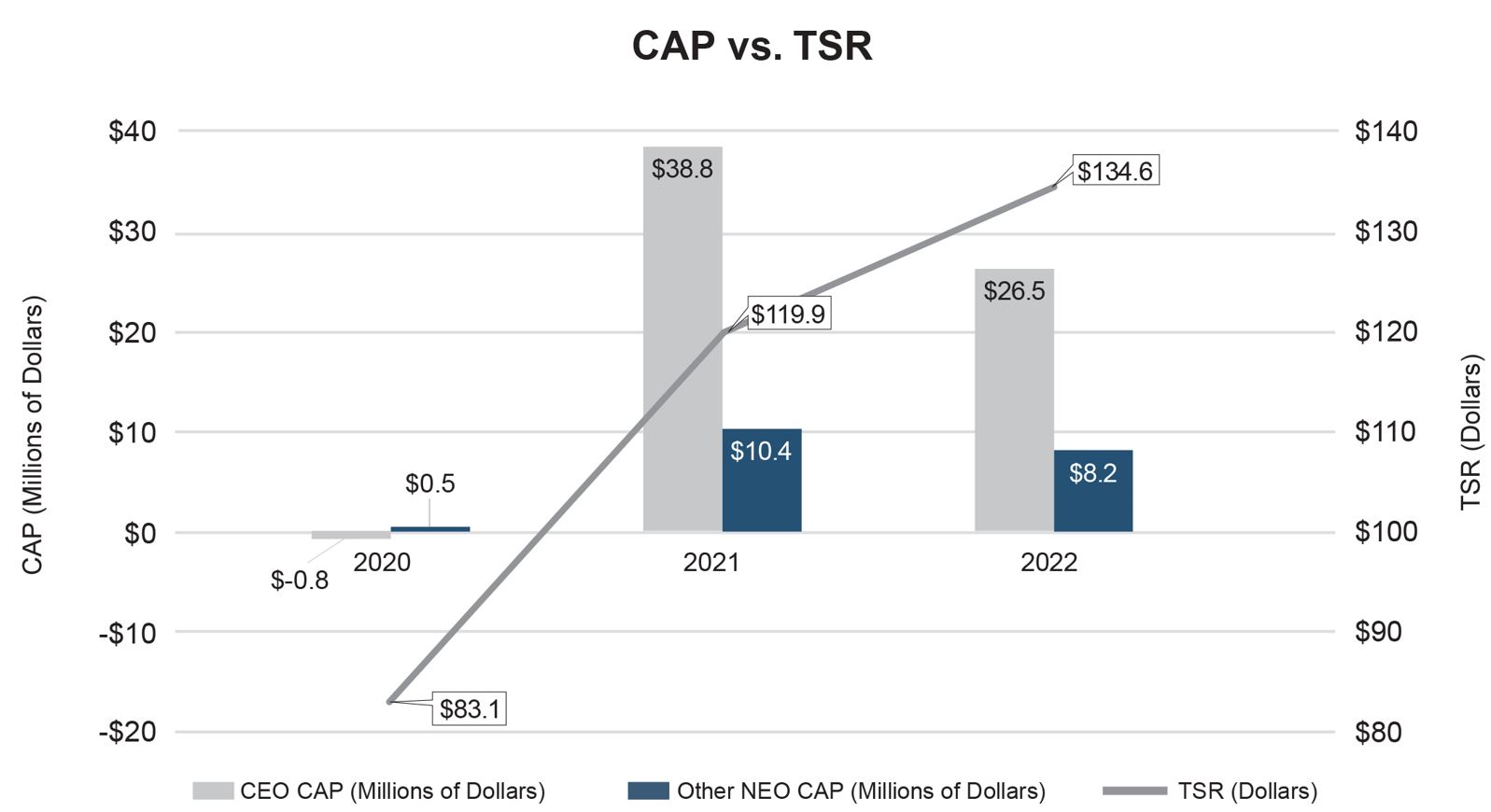
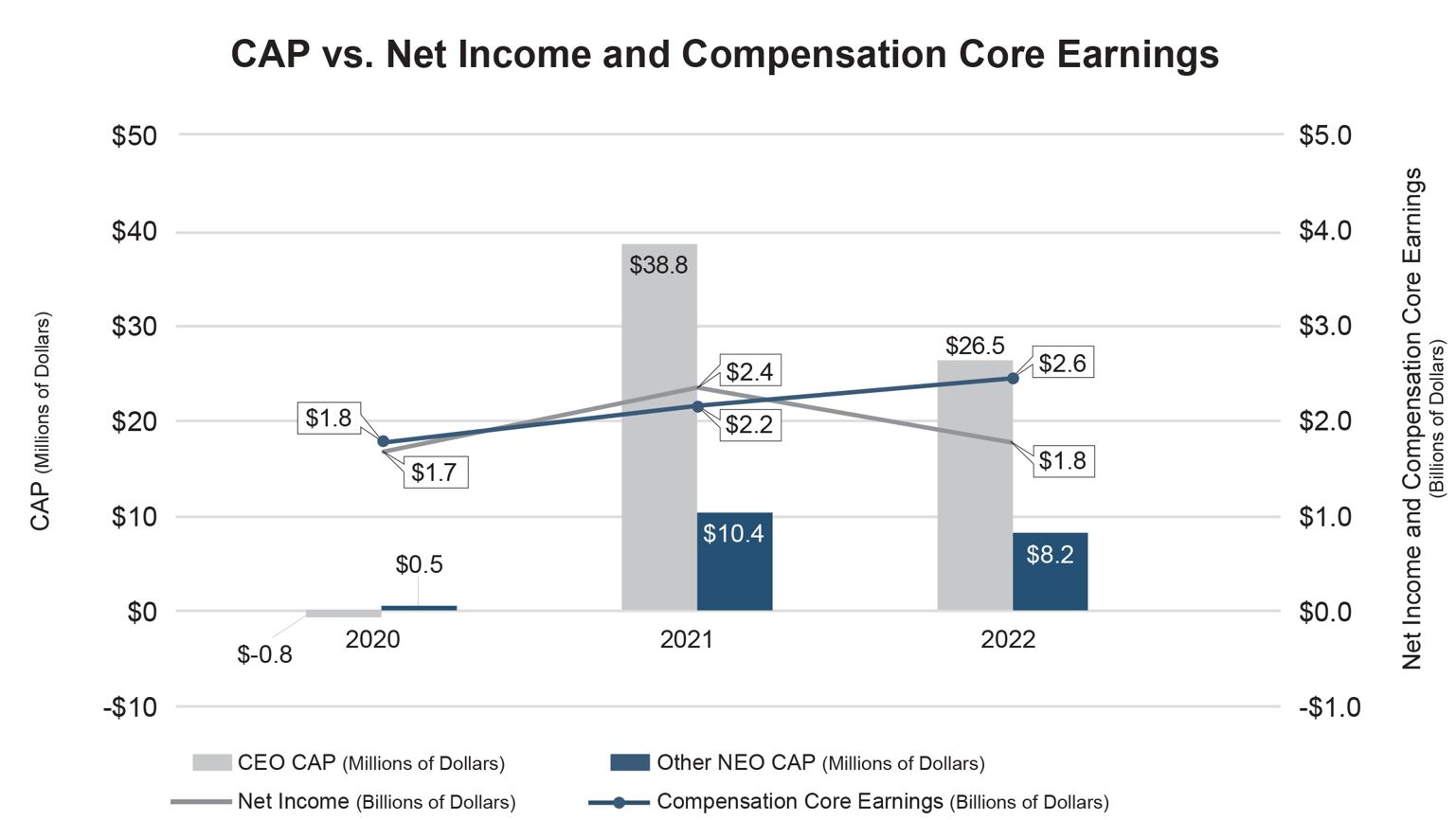
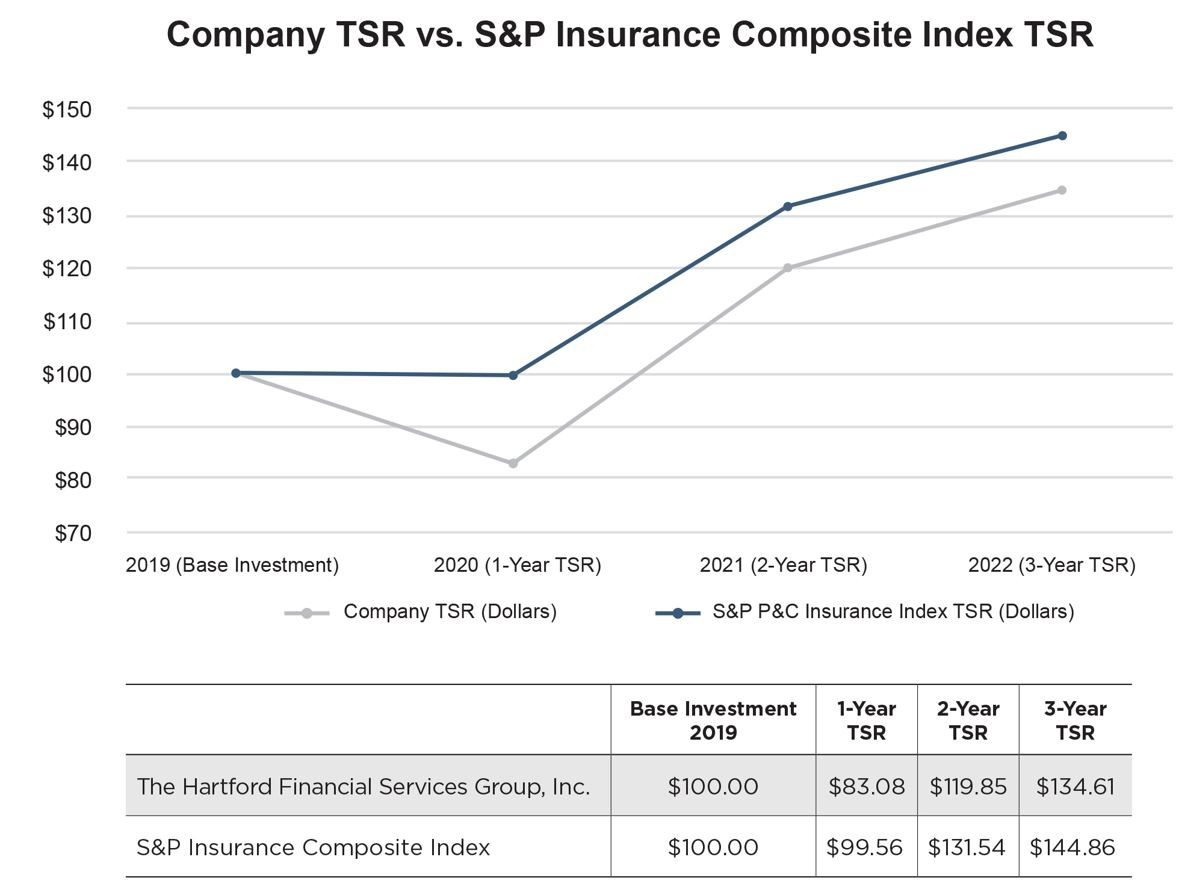
| | | | | | | | |
ITEM 4 SHAREHOLDER PROPOSAL THAT THE COMPANY ADOPT AND DISCLOSE A POLICY FOR THE TIME BOUND PHASE OUT OF UNDERWRITING RISKS ASSOCIATED WITH NEW FOSSIL FUEL EXPLORATION AND DEVELOPMENT PROJECTS |
We have received notice of the intention of shareholder Green Century Capital Management Inc., on behalf of The Green Century Funds to present the following proposal at the Annual Meeting. In accordance with federal securities regulations, the text of the stockholder proposal and supporting statement appears below exactly as received, other than minor formatting changes. The contents of the proposal or supporting statement are the sole responsibility of the proponent, and we are not responsible for the content of the proposal or any inaccuracies it may contain. The Company will promptly provide the address of the proponent and the number of shares owned by it upon request directed to the Company’s Senior Vice President and Corporate Secretary.
Whereas: The Intergovernmental Panel on Climate Change (IPCC) advises that greenhouse gas (GHG) emissions must reach net-zero by 2050 to limit warming to 1.5 degrees Celsius, thereby averting the worst impacts of climate change.
Experts agree that weather-related natural catastrophes are tied to the trend of increasing insured losses. Last year marked the fourth time in five years global insured losses exceeded $100 billion due to weather related disasters. Combined U.S. insured loss from natural catastrophes in 2020 and 2021 was $176 billion; the highest two-year total on record.
Despite The Hartford’s goal to achieve net-zero emissions across all business lines by 2050, it continues to underwrite new risks for the fossil fuel industry. This puts it at odds with the scientific consensus that limiting warming to 1.5 degrees Celsius means that the world cannot develop new oil and gas fields or coal mines beyond those already approved for exploration and development. Existing fossil fuel supplies are sufficient to satisfy global energy needs, and developing new oil and gas fields would not produce in time to mitigate energy market turmoil resulting from the Ukraine War.
Without a policy to phase out underwriting new fossil fuel exploration and development, The Hartford may be subject to material risk related to:
•Climate: Fossil fuel emissions drive stronger and more frequent natural catastrophes challenging insurers’ abilities to cover claims or offer policies in existing markets. •Transition: Without early action toward an orderly transition to a low carbon economy, availability of capital for the insurance industry could drop precipitously. •Competition: Twelve global insurers now restrict underwriting conventional oil and gas projects and/or companies, signaling responsiveness to climate risk. •Reputation: Campaigns targeting US insurers’ climate policies bring negative attention to the Company, and may adversely affect its ability to attract customers and employees.
Investors remain concerned that despite its net zero emissions by 2050 goal, the Company’s efforts are not sufficiently aligned with the IPCC’s 1.5 degrees Celsius no/low overshoot pathways, which describe the trajectories of GHG emissions reductions needed to stabilize the global climate.
RESOLVED: Shareholders request that the Board of Directors adopt and disclose a policy for the time bound phase out of The Hartford’s underwriting risks associated with new fossil fuel exploration and development projects, aligned with the IPCC’s recommendation to limit global temperature rise to 1.5 degrees Celsius.
Supporting Statement:
The board and management, in its discretion, should define the scope, time frames and parameters of the policy, with an eye toward: •the well-accepted definition that new fossil fuel exploration and development projects include exploration for and/or development of oil, gas, and coal resources or reserves beyond those fields or mines that have already been permitted; •the pathways and time frames set forth by the International Energy Agency’s Net Zero by 2050 scenario or the IPCC’s low/no overshoot scenarios
|
| | | | | | | | |
| × | The Board of Directors recommends that shareholders vote "AGAINST" this Proposal for the following reasons: •The Hartford has established itself as a U.S. insurance industry leader in its commitment to address climate change through a proactive, balanced and pragmatic approach. •Proscriptive approaches to address climate change fail to account for the complexities of the U.S. insurance system or the role the fossil fuel industry must play in energy transition. Divestitures and boycotts are not the optimal foundation to reach net zero. •Recent geopolitical and economic events have underscored the need for insurers to remain pragmatic and flexible in their underwriting approach during the energy transition. •U.S. insurers are operating in an increasingly complex regulatory environment, making a balanced and pragmatic approach to underwriting of vital importance. •A strong majority and wide variety of stakeholders support The Hartford’s energy transition approach. |
After due consideration, the Board of Directors has reached the conclusion that the Proposal is not in the best interests of shareholders. In its net zero emissions journey, The Hartford has adopted a thoughtful approach to managing the global energy transition already underway and has committed to transparency for shareholders as to that approach. To that end, we have taken the opportunity to set out our approach for net zero and the energy transition on several occasions, and we will continue to do so.
The Proposal poses substantially the same issue that the same shareholder proposed last year, differing only in that it seeks a timebound rather than an immediate prohibition on the targeted activities. The essence of the Proposal remains the same; however, the proponent is seeking a commitment from the Board of Directors to adopt policies to ensure The Hartford’s underwriting practices do not support new fossil fuel supplies. We appreciated the support shareholders provided last year for our position – with 91.2% of voted shares AGAINST the prior proposal.
We engaged actively with the shareholder proponent, both before and after this Proposal was submitted, in an attempt to find common ground in lieu of again putting this issue on the ballot. Those efforts were unfortunately unsuccessful. The proponent’s belief that circumstances have changed since last year’s vote in a light favorable to this Proposal is unsupported, as set out below.
The Hartford has established itself as a U.S. insurance industry leader in its commitment to address climate change through a proactive, balanced and pragmatic approach.
In April 2022, The Hartford announced a 2050 net zero emissions goal across its businesses and operations. That goal has animated a year of innovative work across the Company to drive measurable progress towards our efforts to address climate change and support the energy transition. Further, we’ve communicated frequently on our approach, most recently last month when we provided detail on:
•Our goal to reduce Scope 1 and 2 greenhouse gas emissions (“GHGe”) by 50% by 2030 (using 2019 as a baseline year);
•The implementation of an ESG supply chain engagement program to help influence key business partners to report and reduce their GHGe;
•Our continued assessment of, and engagement with industry participants and organizations on, methodologies for measuring underwriting and investment portfolio GHGe;
•Our progress towards our goal of investing $2.5 billion in technologies, companies and funds that are advancing energy transition and addressing climate change; and
•The crucial work in flight in our businesses to embed our ESG principles into our operations and to produce product solutions that will enable The Hartford to support global energy transition.(1)
The Hartford’s approach to the global energy transition is a driver of all of these initiatives. What is happening in the global economy is unprecedented and transformational. The greening of industry, and in particular of energy, is occurring on a scale larger than any one company - but requires the participation of all companies - with burgeoning investments into renewable energy and decarbonizing technologies. Any company looking to secure a future vital role as a market actor, and return shareholder value along the way, must navigate this global transition adeptly and with an understanding of its complexities and tradeoffs. This core value drives our strategy and efforts: while urgent, the energy transition is complex, dynamic and cannot be accomplished overnight with divestiture-based strategies that seek to exclude industry participants that are positioned to have the greatest impact. The balance of our collective energy future is shifting radically within sectors, and even within companies, to a greener blend. As a complex assessor of risk in all forms, The Hartford is positioning itself to support the transition through a proactive, balanced and pragmatic approach, with clear goals, transparency and accountability at the foundation.
Proscriptive approaches to address climate change fail to account for the complexities of the U.S. insurance system or the role the fossil fuel industry must play in energy transition. Divestitures and boycotts are not the optimal foundation to reach net zero.
The Proposal seeks that The Hartford establish a timetable to exit all business “associated with” new fossil fuel exploration and development. This vague and prohibitive idea has no place in a strategy geared to adapt to present and emerging complexity and would be counterproductive to the global goal of net zero. Meeting the energy transition challenge will require utilizing all of the tools and techniques that inform underwriting judgment, not fewer. Blanket prohibitions on The Hartford’s ability to define our risk appetite do not account for the complexities of the issues involved in energy transition or the opportunities this paradigm shift presents to insurers like The Hartford that seek to support the many energy companies that are on the right path. Many of these energy companies have the technology, infrastructure, expertise and scale that are critical to global energy transition, and every
company’s participation in this journey is critical. Inability to secure insurance from public insurers will result in energy companies seeking insurance in private or overseas markets, where there may be less accountability to stakeholders.
The implication of the Proposal is that investors cannot put trust in the good efforts of a company on net zero without proscriptive policies, which we believe is inherently incorrect.
Recent geopolitical and economic events have underscored the need for insurers to remain pragmatic and flexible in their underwriting approach during the energy transition.
The Proposal points to recent world events – most notably the ongoing conflict in Ukraine – as having improved the prospects of a divestiture-driven energy strategy. We do not agree with this characterization. With all the market disruptions caused by the Ukraine war – including large-scale shifts in energy allocation priorities – pragmatism has proven to be ever more vital. A rigid approach in these times would have harmed the broader movement towards greener energy and net zero (goals we share with the proponent). We believe those seeking most earnestly to achieve progress must do so with more, not fewer, strategic tools at hand, and we believe recent world events have borne that out.
Insurers are operating in an increasingly complex regulatory environment, making a balanced and pragmatic approach to underwriting of vital importance.
ESG in general, and net zero in particular, has come under intense scrutiny and is subject to vigorous debate in the public policy sphere. The debate over the role of various industries and businesses in advancing ESG goals has drawn the attention of policymakers and regulators at all levels of government. As an insurance company doing business in all 50 states, The Hartford operates in a highly-regulated industry, and must ensure that our aspirations remain faithful to the unique manner in which our industry is regulated.
In doing so, The Hartford must forge its ESG and net zero pathways within a risk-based underwriting structure. Legislators and regulators at the state level are increasingly attuned to representations that insurers are making about ESG goals and whether the implementation of those goals match the dictates of existing insurance regulation. State regulators have two core mandates, protection of consumers and prudential regulation of insurance companies. State regulators have already raised concerns that prohibitions and proscriptive measures may undermine the risk-based underwriting model, potentially invoking consumer protection and prudential concerns. Accordingly, we have a responsibility to operate in a manner consistent with our regulatory scheme, making clear to regulators and other stakeholders that we can achieve our ESG goals, including net zero, and create long-term value by honing our underwriting judgment and business innovation to the task. The Proposal invites unnecessary regulatory risk that detracts from the work and the underlying mission, with no countervailing benefit to the Company, its stakeholders or an orderly global energy transition generally.
A strong majority and wide variety of stakeholders support The Hartford’s energy transition approach.
As mentioned above, this Proposal poses the same question as last year’s fossil fuel divestiture proposal by the same proponent. As such, we believe we have a fresh and robust sense of our shareholders’ views on the matter raised by this Proposal. Specifically, we engaged with several major shareholders in the run-up to the vote on last year’s proposal and yet more in our annual engagement initiative conducted in the fall. Even beyond the import of last year’s vote, we have had the opportunity to consult with many of you on the energy transition and the potential role of proscriptive measures like the Proposal.
We value those engagements, and listen closely for conflicting or different thoughts and ideas we should take into account. But what we heard then, and continue to hear now, is validating – it is strong and firm support for our balanced and pragmatic approach to energy transition. That support comes from those of you most strongly associated with the ESG movement and net zero and those less so, in equal force. It also comes from key regulatory voices. Among the themes we continue to hear from our shareholders:
•The need to preserve business judgment and consider shareholder value in our actions
•Understanding that divesting from entire sectors – or moving carbon-intensive assets from public to private markets – will not advance progress towards net zero and reduces transparency and accountability
•Concern that blanket restrictions could be problematic for the larger economy
•An emphasis on a pragmatic, transitional approach
While the proponent has commendable motives, it is wedded to a strategy we do not believe to be in the best interest of The Hartford, its stakeholders or an orderly global energy transition.
Accordingly, our Board of Directors recommends a vote AGAINST the Proposal.
(1) Our net zero approach statement is available on our sustainability website at http://www.thehartford.com/about-us//environment under “The Hartford’s Net Zero Approach.”
INFORMATION ON STOCK OWNERSHIP
DIRECTORS AND EXECUTIVE OFFICERS
The following table shows, as of March 20, 2023: (1) the number of shares of our common stock beneficially owned by each director and NEO, and (2) the aggregate number of shares of common stock and common stock-based equity (including RSUs, performance shares granted at target and stock options that will not vest or become exercisable within 60 days, as applicable) held by all directors, NEOs and Section 16 executive officers as a group.
As of March 20, 2023, no individual director, NEO or Section 16 executive officer beneficially owned 1% or more of the total outstanding shares of our common stock. The directors, NEOs and Section 16 executive officers as a group beneficially owned approximately 2.0 % of the total outstanding shares of our common stock as of March 20, 2023.
| | | | | | | | |
| Name of Beneficial Owner | Common Stock(1) | Total(2) |
| Beth Costello | 519,140 | 703,408 |
| Larry De Shon | 10,850 | 10,850 |
| Carlos Dominguez | 22,520 | 22,520 |
| Douglas Elliot | 1,627,558 | 1,722,603 |
Trevor Fetter(3) | 126,711 | 126,711 |
| Donna James | 6,725 | 6,725 |
Kathryn A. Mikells(4) | 99,747 | 99,747 |
| Edmund Reese | 2,357 | 2,357 |
| David Robinson | 243,851 | 383,861 |
| Deepa Soni | 38,514 | 137,887 |
| Teresa W. Roseborough | 28,861 | 28,861 |
| Virginia P. Ruesterholz | 43,329 | 43,329 |
| | |
Christopher J. Swift(5) | 2,637,792 | 3,425,527 |
| Matthew E. Winter | 11,562 | 11,562 |
Greig Woodring(6) | 17,429 | 17,429 |
All directors, NEOs and Section 16 executive officers as a group (25 persons)(7) | 6,321,164 | 8,233,152 |
(1)All shares of common stock are owned directly except as otherwise indicated below. Pursuant to SEC regulations, shares of common stock beneficially owned include shares of common stock that, as of March 20, 2023: (i) may be acquired by directors, NEOs and Section 16 executive officers upon the vesting or distribution of stock-settled RSUs or the exercise of stock options exercisable within 60 days after March 20, 2023, (ii) are allocated to the accounts of Section 16 executive officers under the Company’s tax-qualified 401(k) plan, (iii) are held by Section 16 executive officers under The Hartford Employee Stock Purchase Plan or (iv) are owned by a director’s, NEO's or a Section 16 executive officer’s spouse or minor child. Of the number of shares of common stock shown above, the following shares may be acquired upon exercise of stock options as of March 20, 2023 or within 60 days thereafter by: Ms. Costello, 461,935 shares; Mr. Elliot, 1,342,723 shares; Mr. Robinson, 235,650 shares; Ms. Soni, 26,020 shares; Mr. Swift, 2,241,142 shares; and all NEOs and Section 16 executive officers as a group, 5,045,947 shares.
(2)This column shows the individual’s total stock-based holdings in the Company, including the securities shown in the “Common Stock” column (as described in footnote 1), plus RSUs that vest and stock options that become exercisable more than 60 days after March 20, 2023, and all outstanding performance shares (at target).
(3)The amount shown includes 60,945 shares of common stock held by a trust for which Mr. Fetter serves as trustee.
(4)The amount shown includes 11,800 shares of common stock held by a limited liability company of which Ms. Mikells is a member.
(5)The amount shown includes 43,179 shares of common stock held by Mr. Swift’s spouse and 156,251 held in two trusts for which Mr. Swift or his spouse serves as trustee.
(6)The amount shown includes 84 shares of common stock held by a trust for which Mr. Woodring serves as trustee.
(7)The amount shown includes 1,479 shares of common stock allocated to the accounts of two Section 16 executive officers under the Company’s tax-qualified 401(k) plan.
| | | | | | | | |
| INFORMATION ON STOCK OWNERSHIP | | |
CERTAIN SHAREHOLDERS
The following table shows those persons known to the Company as of February 14, 2023 to be the beneficial owners of more than 5% of our common stock. In furnishing the information below, we have relied on information filed with the SEC by the beneficial owners.
| | | | | | | | |
Name and Address of Beneficial Owner | Amount and Nature of Beneficial Ownership | Percent of Class(1) |
The Vanguard Group
100 Vanguard Blvd.
Malvern, PA 19355 | 39,535,660(2) | 12.43% |
BlackRock Inc.
55 East 52nd Street
New York, NY 10055 | 24,543,083(3) | 7.7% |
T. Rowe Price Associates, Inc.
100 E. Pratt Street
Baltimore, MD 21202 | 24,771,975(4) | 6.3% |
State Street Corporation
One Lincoln Street
Boston, MA 02111 | 18,016,967(5) | 5.66% |
(1)The percentages contained in this column are based solely on information provided in Schedules 13G or 13G/A filed with the SEC by each of the beneficial owners listed above regarding their respective holdings of our common stock as of December 31, 2022.
(2)This information is based solely on information contained in a Schedule 13G/A filed on February 9, 2023 by The Vanguard Group to report that it was the beneficial owner of 39,535,660 shares of our common stock as of December 31, 2022. Vanguard has (i) sole power to vote or to direct the vote with respect to none of such shares; (ii) shared power to vote or to direct the vote with respect to 455,458 of such shares, (iii) sole power to dispose or direct the disposition with respect to 38,165,595 of such shares and (iv) the shared power to dispose or direct the disposition of 1,370,065 of such shares.
(3)This information is based solely on information contained in a Schedule 13G/A filed on February 7, 2023 by BlackRock, Inc. to report that it was the beneficial owner of 24,543,083 shares of our common stock as of December 31, 2022. BlackRock has (i) sole power to vote or to direct the vote with respect to 21,646,704 of such shares; (ii) shared power to vote or to direct the vote with respect to none of such shares; (iii) sole power to dispose or direct the disposition of 24,543,083 of such shares; and (iv) shared power to dispose or direct the disposition of none of such shares.
(4)This information is based solely on information contained in a Schedule 13G filed on February 14, 2023 by T. Rowe Price Associates, Inc. to report that it was the beneficial owner of 24,771,975 shares of our common stock as of December 31, 2022. T. Rowe Price has (i) sole power to vote or to direct the vote with respect to 12,181,615 of such shares; (ii) shared power to vote or to direct the vote with respect to none of such shares and (iii) sole power to dispose or to direct the disposition of 24,771,975 of such shares; and (iv) shared power to dispose or direct the disposition of none of such shares.
(5)This information is based solely on information contained in a Schedule 13G filed on February 10, 2023 by State Street Corporation to report that it was the beneficial owner of 18,016,967 shares of our common stock as of December 31, 2022. State Street has (i) sole power to vote or to direct the vote with respect to none of such shares; (ii) shared power to vote or to direct the vote with respect to 16,231,021 of such shares and (iii) sole power to dispose or to direct the disposition of none of such shares; and (iv) shared power to dispose or direct the disposition of 17,881,969 of such shares.
DELINQUENT SECTION 16(a) REPORTS
Section 16(a) of the Securities Exchange Act of 1934 (the "Exchange Act") requires our directors and designated Section 16 executive officers, and persons who own more than 10% of a registered class of our equity securities, to file with the SEC initial reports of ownership and reports of changes in ownership of our common stock and other equity securities. Section 16 executive officers, directors and greater than 10% shareholders are required by SEC regulation to furnish us with copies of all Section 16(a) forms they file.
Based upon a review of filings with the SEC and written representations from our directors and Section 16 executive officers that
no other reports were required, we believe that all Section 16(a) reports were filed timely in 2022, except that a Form 4 filed on December 12, 2022 for David Robinson to report the sale of 18,534 shares of our common stock pursuant to a trading plan previously adopted by Mr. Robinson in accordance with Rule 10b5-1 of the Exchange Act was one day late due to an administrative error.
INFORMATION ABOUT THE HARTFORD’S ANNUAL MEETING OF SHAREHOLDERS
HOUSEHOLDING OF PROXY MATERIALS
SEC rules permit companies and intermediaries such as brokers to satisfy delivery requirements for proxy statements and notices with respect to two or more shareholders sharing the same address by delivering a single proxy statement or a single notice addressed to those shareholders. This process, which is commonly referred to as “householding,” provides cost savings for companies. Some brokers household proxy materials, delivering a single proxy statement or notice to multiple shareholders sharing an address unless contrary instructions have been received from the affected shareholders. Once you have received notice from your broker that they will be householding materials to your address, householding will continue until you are notified otherwise or until you revoke your consent. If, at any time, you no longer wish to participate in householding and would prefer to receive a separate proxy statement or notice, please notify your broker. You may also call (800) 542-1061 or write to: Householding Department, 51 Mercedes Way, Edgewood, New York 11717, and include your name, the name of your broker or other nominee, and your account number(s). You can also request prompt delivery of copies of the Notice of 2023 Annual Meeting of Shareholders, Proxy Statement and 2022 Annual Report by writing to Donald C. Hunt, Senior Vice President and Corporate Secretary, The Hartford Financial Services Group, Inc., One Hartford Plaza, Hartford, CT 06155.
FREQUENTLY ASKED QUESTIONS
The Board of Directors of The Hartford is soliciting shareholders’ proxies in connection with the 2023 Annual Meeting of Shareholders, and at any adjournment or postponement thereof. The mailing to shareholders of the notice of Internet availability of proxy materials took place on or about April 6, 2023.
Q: Why did I receive a one-page notice in the mail regarding the Internet availability of proxy materials instead of a full set of proxy materials?
A: Instead of mailing a printed copy of our proxy materials to each shareholder of record, the SEC permits us to furnish proxy materials by providing access to those documents on the Internet. Shareholders will not receive printed copies of the proxy materials unless they request them. The notice instructs you as to how to submit your proxy on the Internet. If you would like to receive a paper or email copy of our proxy materials, you should follow the instructions in the notice for requesting them.
Q: How are shares voted if additional matters are presented at the Annual Meeting?
A: Other than the items of business described in this proxy statement, we are not aware of any other business to be acted upon at the Annual Meeting. If you grant a proxy, the persons named as proxyholders, David C. Robinson, Executive Vice President and General Counsel, and Donald C. Hunt, Senior Vice President and Corporate Secretary, will have the discretion to vote your shares on any additional matters properly presented for a vote at the Annual Meeting in accordance with Delaware law and our By-laws.
Q: Who may vote at the Annual Meeting?
A: Holders of our common stock at the close of business on March 20, 2023 (the “Record Date”) may vote at the Annual Meeting. On the Record Date, we had 312,393,287 shares of common stock outstanding and entitled to be voted at the Annual Meeting. You may cast one vote for each share of common stock you hold on all matters presented at the Annual Meeting.
Participants in The Hartford Investment and Savings Plan (“ISP”) and The Hartford Deferred Restricted Stock Unit Plan (“Bonus Swap Plan”) may instruct plan trustees as to how to vote their shares using the methods described on page 78. The trustees of the ISP and the Bonus Swap Plan will vote shares for which they have not received direction in accordance with the terms of the ISP and the Bonus Swap Plan, respectively. Participants in The Hartford's Employee Stock Purchase Plan (“ESPP”) may vote their shares as described on page 78.
| | | | | | | | |
| INFORMATION ABOUT THE MEETING | | |
Q: What vote is required to approve each proposal?
| | | | | | | | |
A: Proposal | Voting Standard |
| 1 | Election of Directors | A director will be elected if the number of shares voted “for” that director exceeds the number of votes “against” that director. |
| 2 | To ratify the appointment of our independent registered public accounting firm | An affirmative vote requires the majority of those shares present in person or represented by proxy and entitled to vote. |
| 3 | To approve, on a non-binding, advisory basis, the compensation of our named executive officers as disclosed in this proxy statement | An affirmative vote requires the majority of those shares present in person or represented by proxy and entitled to vote. |
| 5 | To vote on the shareholder proposal described in this proxy statement, if properly presented at the meeting | An affirmative vote requires the majority of those shares present in person or represented by proxy and entitled to vote. |
Q: What is the difference between a “shareholder of record” and a “street name” holder?
A: These terms describe the manner in which your shares are held. If your shares are registered directly in your name through Computershare, our transfer agent, you are a “shareholder of record.” If your shares are held in the name of a brokerage firm, bank, trust or other nominee as custodian on your behalf, you are a “street name” holder.
Q: How do I vote my shares?
A: Subject to the limitations described below, you may vote by proxy:
| | | | | |
| |
| By internet | By telephone |
| |
Visit 24/7 www.proxyvote.com | Dial toll-free 24/7
1-800-690-6903 |
| | |
| By mailing your Proxy Card | At the annual meeting |
| |
| Cast your ballot, sign your proxy card and send by mail | Follow the instructions on the virtual meeting site |
When voting on proposal items 1-5, you may vote “for” or “against” the item or you may abstain from voting.
Voting Through the Internet or by Telephone Prior to the Annual Meeting. Whether you hold your shares directly as the shareholder of record or beneficially in “street name,” you may direct your vote by proxy without attending the Annual Meeting. You can vote by proxy using the Internet or a telephone by following the instructions provided in the notice you received.
Voting by Proxy Card or Voting Instruction Form. Each shareholder, including any employee of The Hartford who owns common stock through the ISP, the Bonus Swap Plan or the ESPP, may vote by using the proxy card(s) or voting instruction form(s) provided to them. When you return a proxy card or voting instruction form that is properly completed and signed, the shares of common stock represented by that card will be voted as you specified.
Q: Can I vote my shares at the virtual Annual Meeting?
A: You may vote online during the virtual Annual Meeting by visiting www.virtualshareholdermeeting.com/HIG2023, entering the 16-digit control number provided on your proxy card, voting instruction form or notice, and following the on-screen instructions.
Q: Can my shares be voted even if I abstain or don’t vote by proxy or attend the Annual Meeting?
A: If you cast a vote of “abstention” on a proposal, your shares cannot be voted otherwise unless you change your vote (see below). Because they are considered to be present and entitled to vote for purposes of determining voting results, abstentions will have the effect of a vote against Proposal #2, Proposal #3, and Proposal #4. Note, however, that abstentions will have no effect on Proposal #1, since only votes “for” or “against” a director nominee will be considered in determining the outcome.
Abstentions are included in the determination of shares present for quorum purposes.
| | | | | | | | |
| | INFORMATION ABOUT THE MEETING |
If you don’t vote your shares held in “street name,” your broker can vote your shares in its discretion on matters that the NYSE has ruled discretionary. The ratification of Deloitte & Touche LLP as independent registered public accounting firm is a discretionary item under the NYSE rules. If no contrary direction is given, your shares will be voted on this matter by your broker in its discretion. The NYSE deems the election of directors, matters relating to executive compensation, and shareholder proposals opposed by management as non-discretionary matters in which brokers may not vote shares held by a beneficial owner without instructions from such beneficial owner. Accordingly, brokers will not be able to vote your shares for the election of directors or the advisory vote on compensation of our named executive officers if you fail to provide specific instructions. If you do not provide instructions, a “broker non-vote” results, and the underlying shares will not be considered voting power present at the Annual Meeting. Therefore, these shares will not be counted in the vote on those matters.
If you do not vote shares for which you are the shareholder of record, your shares will not be voted.
Q: What constitutes a quorum, and why is a quorum required?
A: A quorum is required for our shareholders to conduct business at the Annual Meeting. The presence at the Annual Meeting, in person or by proxy, of the holders of a majority of the shares entitled to vote on the Record Date will constitute a quorum, permitting us to conduct the business of the meeting. Abstentions and proxies submitted by brokers (even with limited voting power such as for discretionary matters only) will be considered “present” at the Annual Meeting and counted in determining whether there is a quorum present.
Q: Can I change my vote after I have delivered my proxy?
A: Yes. If you are a shareholder of record, you may revoke your proxy at any time before it is exercised by:
1.Entering a new vote prior to the Annual Meeting at www.proxyvote.com or via telephone;
2.Giving written notice of revocation to our Senior Vice President and Corporate Secretary;
3.Submitting a subsequently dated and properly completed proxy card; or
4.Entering a new vote during the Annual Meeting at www.virtualshareholdermeeting.com/HIG2023 (your attendance at the Annual Meeting will not by itself revoke your proxy).
If you hold shares in “street name,” you may submit new voting instructions by contacting your broker, bank or other nominee. You may also change your vote or revoke your proxy by voting online during the virtual Annual Meeting.
Q: Where can I find voting results of the Annual Meeting?
A: We will announce preliminary voting results at the Annual Meeting and publish the results in a Form 8-K filed with the SEC within four business days after the date of the Annual Meeting.
Q: How can I submit a proposal for inclusion in the 2024 proxy statement?
A: We must receive proposals submitted by shareholders for inclusion in the 2024 proxy statement relating to the 2024 Annual Meeting no later than the close of business on December 8, 2023. Any proposal received after that date will not be included in our proxy materials for 2024. In addition, all proposals for inclusion in the 2024 proxy statement must comply with all of the requirements of Rule 14a-8 under the Securities Exchange Act of 1934. No proposal may be presented at the 2024 Annual Meeting unless we receive notice of the proposal by Friday, February 16, 2024. Proposals should be addressed to Donald C. Hunt, Senior Vice President and Corporate Secretary, The Hartford Financial Services Group, Inc., One Hartford Plaza, Hartford, CT 06155. All proposals must comply with the requirements set forth in our By-laws, a copy of which may be obtained from our Senior Vice President and Corporate Secretary or on the Corporate Governance page of the investor relations section of our website at http://ir.thehartford.com.
Q: How may I obtain other information about The Hartford?
A: General information about The Hartford is available on our website at www.thehartford.com. You may view the Corporate Governance page of the investor relations section of our website at http://ir.thehartford.com for the following information, which is also available in print without charge to any shareholder who requests it in writing:
| | | | | | | | |
| | SEC Filings | • Copies of this proxy statement • Annual Report on Form 10-K for the fiscal year ended December 31, 2022 • Other filings we have made with the SEC |
| | Governance Documents | • Articles of Incorporation • By-laws • Corporate Governance Guidelines (including guidelines for determining director independence and qualifications) • Charters of the Board’s committees • Code of Ethics and Business Conduct • Code of Ethics and Business Conduct for Members of the Board of Directors |
| | | | | | | | |
| INFORMATION ABOUT THE MEETING | | |
Written requests for print copies of any of the above-listed documents should be addressed to Donald C. Hunt, Corporate Secretary, The Hartford Financial Services Group, Inc., One Hartford Plaza, Hartford, CT 06155.
In addition, you may access our Sustainability Highlight Report, which presents our sustainability goals and provides data on our sustainability practices and achievements, as well as our TCFD, SASB, and EEO-1 reports at: https://www.thehartford.com/about-us/corporate-sustainability.
For further information, you may also contact our Investor Relations Department at the following address: The Hartford Financial Services Group, Inc., One Hartford Plaza, Hartford, CT 06155, or call (860) 547-2537.
| | | | | | | | |
| | INFORMATION ABOUT THE MEETING |
OTHER INFORMATION
As of the date of this proxy statement, the Board of Directors has no knowledge of any business that will be properly presented for consideration at the Annual Meeting other than that described above. As to other business, if any, that may properly come before the Annual Meeting, the proxies will vote in accordance with their judgment.
Present and former directors and present and former officers and other employees of the Company may solicit proxies by telephone, telegram or mail, or by meetings with shareholders or their representatives. The Company will reimburse brokers, banks or other custodians, nominees and fiduciaries for their charges and expenses in forwarding proxy material to beneficial owners. The Company has engaged Morrow Sodali LLC to solicit proxies for the Annual Meeting for a fee of $13,000, plus the payment of Morrow’s out-of-pocket expenses. The Company will bear all expenses relating to the solicitation of proxies.
The proxy materials are available to you via the Internet. Shareholders who access the Company’s materials this way get the information they need electronically, which allows us to reduce printing and delivery costs and lessen adverse environmental impacts. The notice of Internet availability contains instructions as to how to access and review these materials. You may also refer to the notice for instructions regarding how to request paper copies of these materials.
We hereby incorporate by reference into this proxy statement “Item 10: Directors, Executive Officers and Corporate Governance of The Hartford” and “Item 12: Security Ownership of Certain Beneficial Owners and Management and Related Stockholder Matters” of the Company’s Annual Report on Form 10-K for the fiscal year ended December 31, 2022.
By order of the Board of Directors,
Donald C. Hunt
Senior Vice President and Corporate Secretary
Dated: April 6, 2023
SHAREHOLDERS ARE URGED TO VOTE BY PROXY, WHETHER OR NOT THEY EXPECT TO ATTEND THE VIRTUAL ANNUAL MEETING. A SHAREHOLDER MAY REVOKE THEIR PROXY AND VOTE AT THE VIRTUAL ANNUAL MEETING (STREET HOLDERS MUST OBTAIN A LEGAL PROXY FROM THEIR BROKER, BANKER OR TRUSTEE TO VOTE AT THE VIRTUAL ANNUAL MEETING).
APPENDIX A: RECONCILIATION OF GAAP TO NON-GAAP FINANCIAL MEASURES
The Hartford uses non-GAAP financial measures in this proxy statement to assist investors in analyzing the Company's operating performance for the periods presented herein. Because The Hartford's calculation of these measures may differ from similar measures used by other companies, investors should be careful when comparing The Hartford's non-GAAP financial measures to those of other companies. Definitions and calculations of non-GAAP and other financial measures used in this proxy statement can be found below.
Core Earnings: The Hartford uses the non-GAAP measure core earnings as an important measure of the Company’s operating performance. The Hartford believes that core earnings provides investors with a valuable measure of the performance of the Company’s ongoing businesses because it reveals trends in our insurance and financial services businesses that may be obscured by including the net effect of certain items. Therefore, the following items are excluded from core earnings:
•Certain realized gains and losses - Generally realized gains and losses are primarily driven by investment decisions and external economic developments, the nature and timing of which are unrelated to the insurance and underwriting aspects of our business. Accordingly, core earnings excludes the effect of all realized gains and losses that tend to be highly variable from period to period based on capital market conditions. The Hartford believes, however, that some realized gains and losses are integrally related to our insurance operations, so core earnings includes net realized gains and losses such as net periodic settlements on credit derivatives. These net realized gains and losses are directly related to an offsetting item included in the income statement such as net investment income.
•Restructuring and other costs - Costs incurred as part of a restructuring plan are not a recurring operating expense of the business.
•Loss on extinguishment of debt - Largely consisting of make-whole payments or tender premiums upon paying debt off before maturity, these losses are not a recurring operating expense of the business.
•Gains and losses on reinsurance transactions - Gains or losses on reinsurance, such as those entered into upon sale of a business or to reinsure loss reserves, are not a recurring operating expense of the business.
•Integration and other non-recurring M&A costs – These costs, including transaction costs incurred in connection with an acquired business, are incurred over a short period of time and do not represent an ongoing operating expense of the business.
•Change in loss reserves upon acquisition of a business - These changes in loss reserves are excluded from core earnings because such changes could obscure the ability to compare results in periods after the acquisition to results of periods prior to the acquisition.
•Deferred gain resulting from retroactive reinsurance and subsequent changes in the deferred gain - Retroactive reinsurance agreements economically transfer risk to the reinsurers and excluding the deferred gain on retroactive reinsurance and related amortization of the deferred gain from core earnings provides greater insight into the economics of the business.
•Change in valuation allowance on deferred taxes related to non-core components of before tax income - These changes in valuation allowances are excluded from core earnings because they relate to non-core components of before tax income, such as tax attributes like capital loss carryforwards.
•Results of discontinued operations - These results are excluded from core earnings for businesses sold or held for sale because such results could obscure the ability to compare period over period results for our ongoing businesses.
In addition to the above components of net income available to common stockholders that are excluded from core earnings, preferred stock dividends declared, which are excluded from net income available to common stockholders, are included in the determination of core earnings. Preferred stock dividends are a cost of financing more akin to interest expense on debt and are expected to be a recurring expense as long as the preferred stock is outstanding.
Net income (loss) and net income (loss) available to common stockholders are the most directly comparable U.S. GAAP measures to core earnings. Core earnings should not be considered as a substitute for net income (loss) or net income (loss) available to common stockholders and does not reflect the overall profitability of the Company’s business. Therefore, The Hartford believes that it is useful for investors to evaluate net income (loss), net income (loss) available to common stockholders, and core earnings when reviewing the Company’s performance. Below is a reconciliation of net income (loss) available to common stockholders to core earnings for the years ended Dec. 31, 2022 and 2021.
| | | | | | | | | |
| ($ in millions) | Year Ended Dec. 31, 2022 | Year Ended Dec. 31, 2021 | |
| Net income available to common stockholders | $ | 1,794 | | $ | 2,344 | | |
| Adjustments to reconcile net income available to common stockholders to core earnings: | | | |
| Net realized losses (gains), excluded from core earnings, before tax | 626 | | (505) | | |
| Restructuring and other costs, before tax | 13 | | 1 | | |
| Loss on extinguishment of debt, before tax | 9 | | — | | |
| | | |
| Integration and other non-recurring M&A costs before tax | 21 | | 58 | | |
| | | |
| Change in deferred gain on retroactive reinsurance, before tax | 229 | | 246 | | |
| | | |
Income tax expense (benefit)(1) | (200) | | 34 | | |
| | | |
| Core Earnings | $ | 2,492 | | $ | 2,178 | | |
(1) Primarily represents federal income tax expense (benefit) related to before tax items not included in core earnings.
Compensation Core Earnings: As discussed under “Annual Incentive Plan Awards” on page 43, at the beginning of each year, the Compensation Committee approves a definition of “Compensation Core Earnings,” a non-GAAP financial measure. Compensation Core Earnings is used to set AIP award targets and threshold levels below which no AIP award is earned. Below are the Compensation Committee’s 2022, 2021 and 2020 definitions of “Compensation Core Earnings” and reconciliations of core earnings to this non-GAAP financial measure. | | | | | | | | | | | |
| ($ in millions) | Year Ended Dec. 31, 2022 | Year Ended Dec. 31, 2021 | Year Ended Dec. 31, 2020 |
| Core Earnings as reported | $ | 2,492 | | $ | 2,178 | | $ | 2,086 | |
| Adjusted for, after tax: | | | |
| Income (losses) associated with the cumulative effect of accounting changes and accounting extraordinary items | — | | — | | — | |
| Total catastrophe losses, including reinstatement premiums, state catastrophe fund assessments and terrorism losses, that are (below) or above the annual catastrophe budget | 44 | | 10 | | (319) | |
| Prior accident year reserve development associated with asbestos and environmental reserves, net of reinsurance recoveries, included in core earnings | — | | — | | — | |
| Entire amount of a (gain) or loss (or such percentage of a gain or loss as determined by the Compensation Committee) associated with any other unusual or non-recurring item, including but not limited to reserve development, litigation and regulatory settlement charges and/or prior/current year non-recurring tax benefits or charges | (24) | | (4) | | 18 | |
| Total equity method earnings that are below or (above) the annual operating budget from the limited partnership that owns Talcott Resolution | | 19 | | (21) | |
| Total Hartford Funds earnings that are below or (above) the annual operating budget | 49 | | (40) | | 3 | |
| Compensation Core Earnings | $ | 2,561 | | $ | 2,163 | | $ | 1,767 | |
| | | |
Core Earnings Margin: The Hartford uses the non-GAAP measure core earnings margin to evaluate, and believes it is an important measure of, the Group Benefits segment's operating performance. Core earnings margin is calculated by dividing core earnings by revenues, excluding buyouts and realized gains (losses). Net income margin, calculated by dividing net income by revenues, is the most directly comparable U.S. GAAP measure. The Company believes that core earnings margin provides investors with a valuable measure of the performance of Group Benefits because it reveals trends in the business that may be obscured by the effect of buyouts and realized gains (losses) as well as other items excluded in the calculation of core earnings. Core earnings margin should not be considered as a substitute for net income margin and does not reflect the overall profitability of Group Benefits. Therefore, the Company believes it is important for investors to evaluate both core earnings margin and net income margin when reviewing performance. Below is a reconciliation of net income margin to core earnings margin for the year ended Dec. 31, 2022.
| | | | | | |
| Year Ended Dec. 31, 2022 | |
| Net income margin | 5.0 | % | |
| Adjustments to reconcile net income margin to core earnings margin: | | |
| Net realized losses before tax | 1.8 | % | |
| Integration and other non-recurring M&A costs, before tax | 0.1 | % | |
| Income tax benefit | (0.4) | % | |
| | |
| Core earnings margin | 6.5 | % | |
Core Earnings Return on Equity: The Company provides different measures of the return on stockholders' equity (ROE). Core earnings ROE is calculated based on non-GAAP financial measures. Core earnings ROE is calculated by dividing (a) the non-GAAP measure core earnings for the prior four fiscal quarters by (b) the non-GAAP measure average common stockholders' equity, excluding AOCI. Net income ROE is the most directly comparable U.S. GAAP measure. The Company excludes AOCI in the calculation of core earnings ROE to provide investors with a measure of how effectively the Company is investing the portion of the Company's net worth that is primarily attributable to the Company's business operations. The Company provides to investors return on equity measures based on its non-GAAP core earnings financial measure for the reasons set forth in the core earnings definition. A reconciliation of consolidated net income ROE to Consolidated Core earnings ROE is set forth below.
| | | | | | | | | | | | |
| Year
Ended
Dec. 31, 2022 | Year
Ended
Dec. 31, 2021 | Year
Ended
Dec. 31, 2020 | |
| Net Income available to common stockholders ROE | 11.6 | % | 13.1 | % | 10.0 | % | |
| Adjustments to reconcile net income ROE to core earnings ROE: | | | | |
| Net realized losses (gains), excluded from core earnings, before tax | 4.1 | | (2.8) | | 0.1 | | |
| Restructuring and other costs, before tax | 0.1 | | — | | 0.6 | | |
| Loss on extinguishment of debt, before tax | 0.1 | | — | | — | | |
| | | | |
| Integration and other non-recurring M&A costs, before tax | 0.1 | | 0.3 | | 0.3 | | |
| | | | |
| Change in deferred gain on retroactive reinsurance, before tax | 1.5 | | 1.4 | | 1.8 | | |
| Income tax expense (benefit) on items not included in core earnings | (1.3) | | 0.2 | | (0.7) | | |
| | | | |
| Impact of AOCI, excluded from denominator of Core Earnings ROE | (1.8) | | 0.5 | | 0.6 | | |
| Core earnings ROE | 14.4 | % | 12.7 | % | 12.7 | % | |
Compensation Core ROE: As discussed under "Long-Term Incentive Awards" on page 46, Compensation Core ROE is used to set performance share targets and threshold levels below which there is no payout. The adjustments described in the left hand column of the table below constitute the Compensation Committee’s 2022 definition of “Compensation Core ROE.” A reconciliation of GAAP net income to Compensation Core ROE for the 2022 performance share awards will not be available until the end of the performance period in 2024. Reconciliations for each year covered by the 2020 performance share awards are provided in the table below, with any variations from the 2022 performance share award definition explained in the notes below the table. Beginning with the 2020 performance share awards, the difference between actual and budgeted core earnings for the Hartford Funds segment is included as a reconciling item between core earnings as reported and core earnings as adjusted since the variation to budget in Hartford Funds is largely driven by market factors outside the Company’s control. | | | | | | | | | | | |
| Year Ended Dec. 31, 2022 | Year Ended Dec. 31, 2021 | Year Ended Dec. 31, 2020 |
| Net income available to common shareholders | $1,794 | $2,344 | $1,716 |
| Adjustments to reconcile net income available to common stockholders to core earnings: | | | |
| Net realized losses (gains) excluded from core earnings, before tax | 626 | | (505) | | 18 | |
| Restructuring and other costs, before tax | 13 | | 1 | | 104 | |
| Loss on extinguishment of debt, before tax | 9 | | — | | — | |
| | | |
| | | |
| Integration and other non-recurring M&A costs, before tax | 21 | | 58 | | 51 | |
| Change in deferred gain on retroactive reinsurance, before tax | 229 | | 246 | | 312 | |
| Income tax expense (benefit) | (200) | | 34 | | (115) | |
| Loss (income) from discontinued operations, after tax | — | | — | | — | |
| Core Earnings as reported | 2,492 | | 2,178 | | 2,086 | |
| Adjusted for after tax: | | | |
Total catastrophe losses, including reinstatement premiums, state catastrophe fund assessments and terrorism losses that are (below) or above the catastrophe budget.(1) | 60 | | 25 | | (320) | |
| Total equity method earnings from the limited partnership that owns Talcott Resolution that are below (above) the annual operating budget as set for each year in January 2020 | 13 | | 21 | | (21) | |
| Total Hartford Funds earnings that are below or (above) the annual operating budget as set for each year in January 2020 | 6 | | (40) | | 3 | |
| | | |
| | | |
| Core Earnings as adjusted | 2,571 | | 2,184 | | 1,748 | |
| Prior year ending common stockholders' equity, excluding accumulated other comprehensive income (AOCI) | 17,337 | | 17,052 | | 15,884 | |
| Current year ending common stockholders' equity, excluding AOCI | 17,173 | | 17,337 | | 17,052 | |
| Average common stockholders' equity, excluding AOCI | 17,255 | | 17,194 | | 16,468 | |
| Compensation Core ROE | 14.9 | % | 12.7 | % | 10.6 | % |
| Average of 2020, 2021 and 2022 Compensation Core ROE = 12.7% | | | |
(1)The catastrophe budget for each year will be based on the multi-year outlook finalized in the first quarter of the year of grant. The catastrophe budget will be adjusted only for changes in exposures between what is assumed in the multi-year outlook versus exposures as the book is actually constituted in each respective year.
Underlying Combined Ratio: This non-GAAP financial measure of underwriting results represents the combined ratio before catastrophes, prior accident year development and current accident year change in loss reserves upon acquisition of a business. Combined ratio is the most directly comparable GAAP measure. The Company believes this ratio is an important measure of the trend in profitability since it removes the impact of volatile and unpredictable catastrophe losses and prior accident year loss and loss adjustment expense reserve development. The changes to loss reserves upon acquisition of a business are excluded from underlying combined ratio because such changes could obscure the ability to compare results in periods after the acquisition to results of periods prior to the acquisition as such trends are valuable to our investors' ability to assess the Company's financial performance. Below is a reconciliation of combined ratio to the underlying combined ratio for individual reporting segments for the year-ended December 31, 2022.
| | | | | | | | | | |
| Commercial Lines | Personal Lines | | |
| Combined Ratio | 90.2 | 100.3 | | |
| Impact of current accident year catastrophes and PYD on combined ratio | (2.0) | | (6.7) | | | |
| | | | |
| Underlying Combined Ratio | 88.3 | | 93.7 | | | |
Core earnings per diluted share: This non-GAAP per share measure is calculated using the non-GAAP financial measure core earnings rather than the GAAP measure net income. The Company believes that core earnings per diluted share provides investors with a valuable measure of the Company's operating performance for the same reasons applicable to its underlying measure, core earnings. Net income (loss) available to common stockholders per diluted common share is the most directly comparable GAAP measure. Core earnings per diluted share should not be considered as a substitute for net income (loss) available to common stockholders per diluted common share and does not reflect the overall profitability of the Company's business. Therefore, the Company believes that it is useful for investors to evaluate net income (loss) available to common stockholders per diluted common share and core earnings per diluted share when reviewing the Company's performance. Below is a reconciliation of net income available to common stockholders per diluted share to core earnings per diluted share for the year-ended December 31, 2022.
| | | | | |
| Year Ended |
| Dec. 31, 2022 |
| Net Income available to common stockholders per diluted share | $ | 5.44 | |
| Adjustments made to reconcile net income available to common stockholders per diluted share to core earnings per diluted share: | |
| Net realized losses (gains), excluded from core earnings, before tax | 1.90 | |
| Restructuring and other costs, before tax | 0.04 | |
| Loss on extinguishment of debt, before tax | 0.03 | |
| Integration and other non-recurring M&A costs, before tax | 0.06 | |
| Change in deferred gain on retroactive reinsurance, before tax | 0.69 | |
| Income tax expense (benefit) on items excluded from core earnings | (0.60) | |
| Core earnings per diluted share | $ | 7.56 | |







